Planning a visit to Kanazawa? Let us guide you through this historic city, its beautifully restored Chaya Districts, and samurai residences, as well as one of Japan’s three great gardens, Kenroku-en.
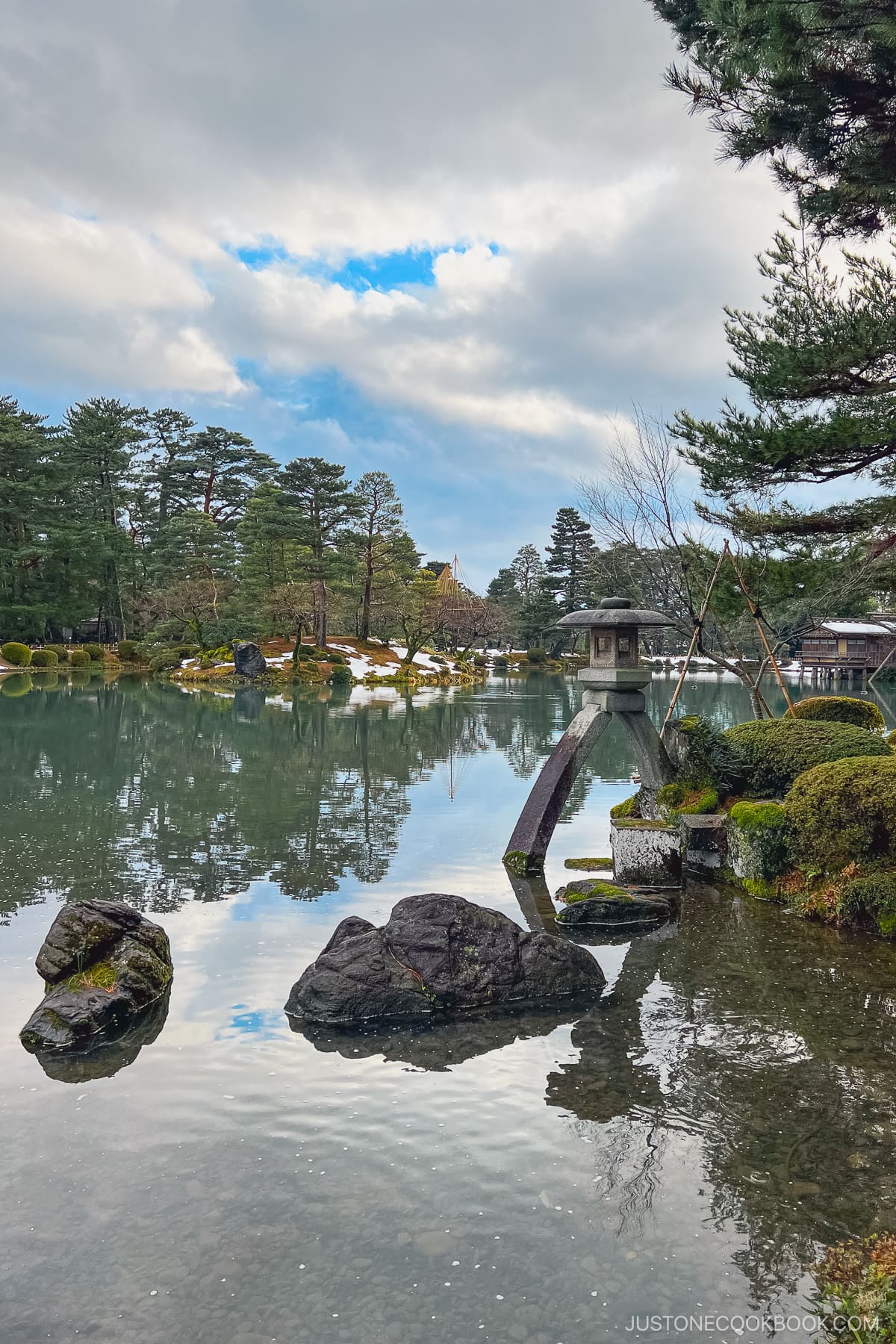
On our family trip to the northwestern part (北陸地方) of Japan, we began with a visit to the historic city of Kanazawa (金沢). What sets this city apart is its remarkably well-preserved original buildings, as it stands as one of the few in Japan that remained untouched during the war.
Kanazawa in Ishikawa Prefecture is easily accessible using the Shinkansen line Kagayaki (かがやき). The trip from Tokyo is a quick 2.5 hrs. Before this train was available, going to Kanazawa from the Kanto area would have required over 6 hours.
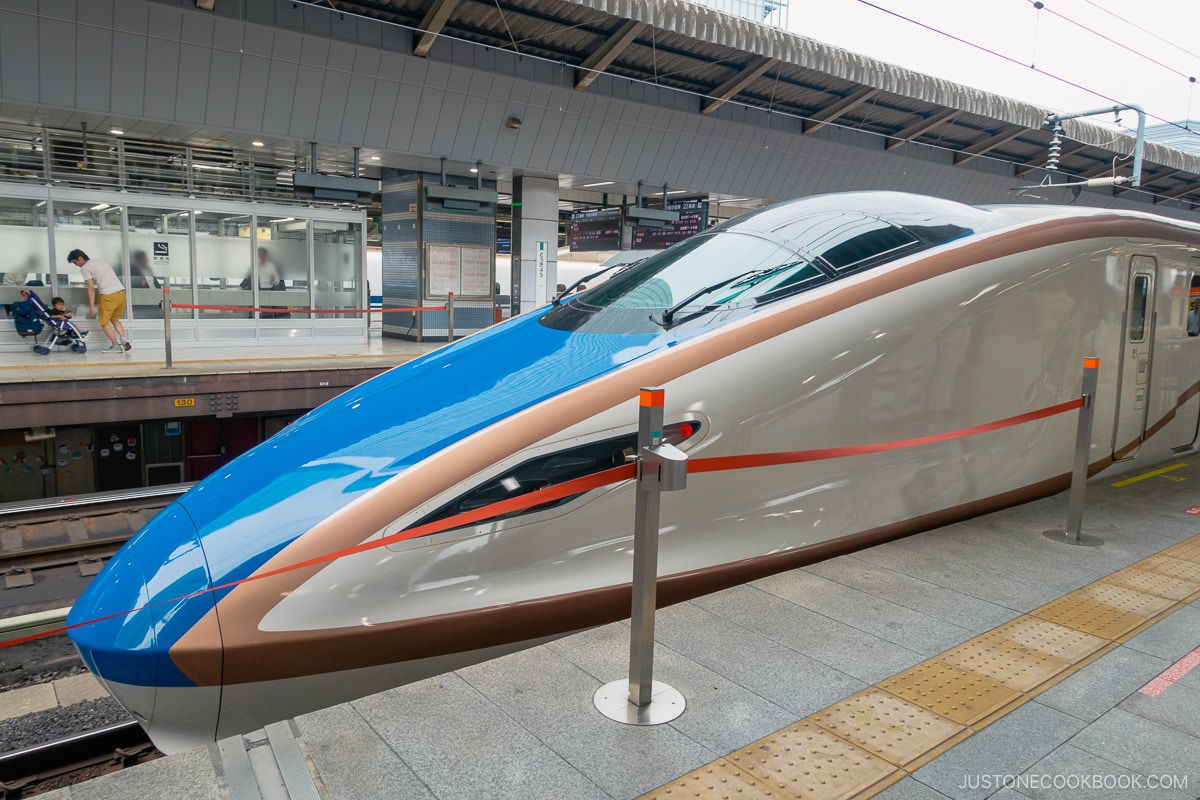
While at the Tokyo Shinkansen station, our excitement soared when the Shinkansen trains interconnected right in front of us. Our son, who has a Plarail (プラレール) set for the connecting trains, had longed to see them in person. If you’re curious, you can check out a YouTube video of the trains in action.
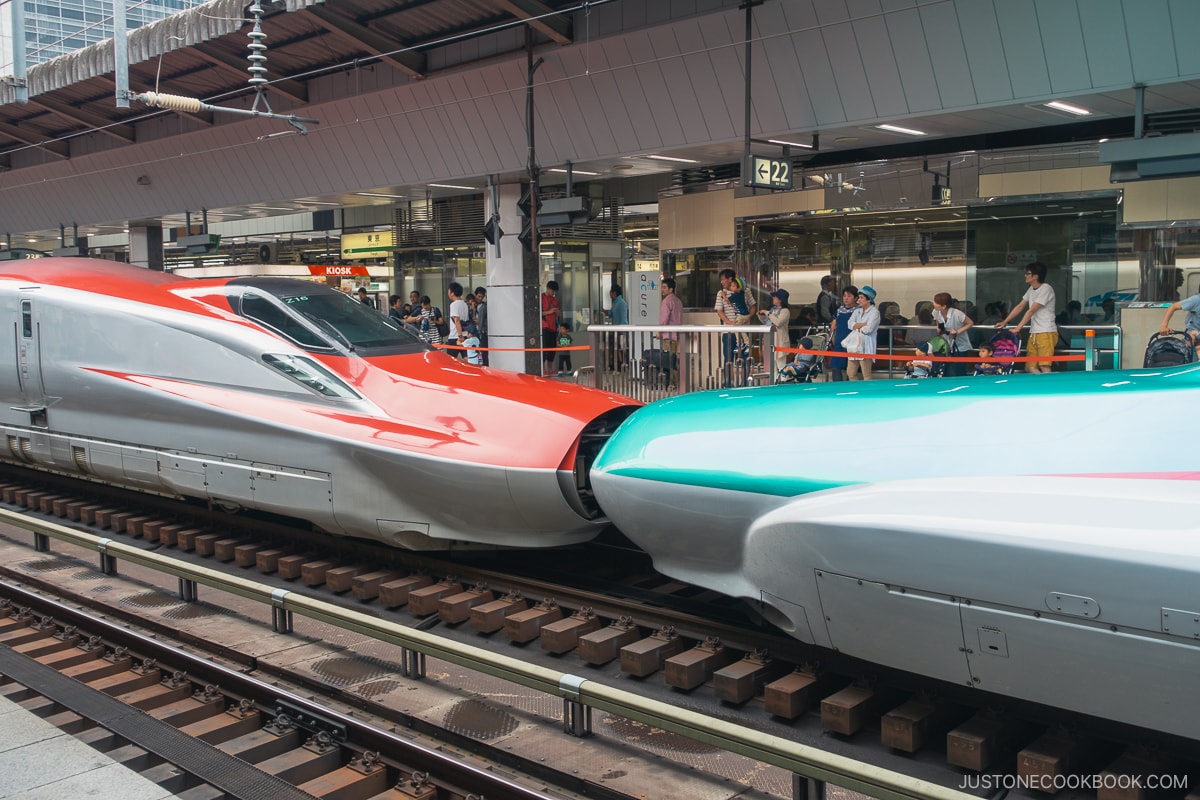
The Kagayaki train has a futuristic design with modern amenities that are not on the N700 Shinkansen, including adjustable headrests. The sinks were very modern, with one spout for soap, one for water, and the last one for the hand dryer. There’s also a baby diaper changing station inside the bathroom.
There are plenty of electric plugs on the train for those who need to recharge their devices.
Before we hopped on the Shinkansen, we enjoyed the bento we purchased at the Shinkansen platform. Throughout the journey, we enjoyed Japan’s picturesque countryside, with numerous tunnels punctuating the final stretch of the ride.
Table of Contents
- Kanazawa Station: A Gateway of Beauty and Convenience
- Kanazawa Loop Bus: Convenient and Stress-Free Travel
- Must Visit Places in Kanazawa
- Omicho Market (近江町市場)
- Kanazawa Castle Park (金沢城公園): Kanazawa’s Rich History and Architecture
- Kenroku-en Garden(兼六園): Kanazawa’s Natural Beauty
- 21st Century Museum of Contemporary Art (金沢21世紀美術館)
- Higashi Chaya District – Eastern Teahouse District (東茶屋街): A Step Back in Time
- Myoryu-ji Temple – Ninja Dera (妙立寺): The Secrets of a Ninja Temple
- Nishi Chaya – Western Tea House District (西茶屋街)
- Nagamachi Samurai District (長町武家屋敷跡): Samurai History
- Oyama Shrine (尾山神社): Where East meets West
- Staying and Eating in Kanazawa
- Kuroya (くろ屋): A Memorable Izakaya Experience
- Kuroyuri (黒百合): Authentic Oden in Kanazawa Station
- Gold Castella: Kanazawa Dessert
Kanazawa Station: A Gateway of Beauty and Convenience
As you arrive at the station, you exit into a large indoor plaza with various stores and restaurants. The station is divided into 2 sides. The first side is the beautiful main entrance that was voted one of the world’s top 15 stations in 2011.
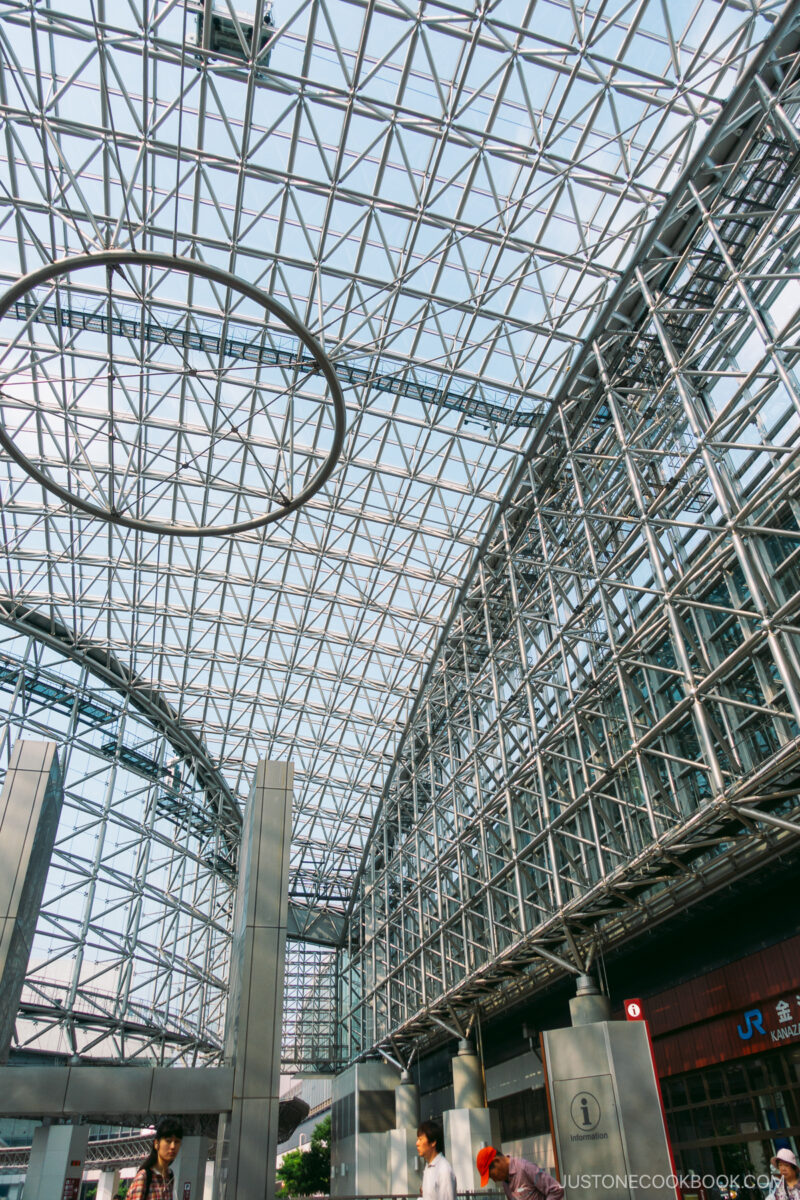
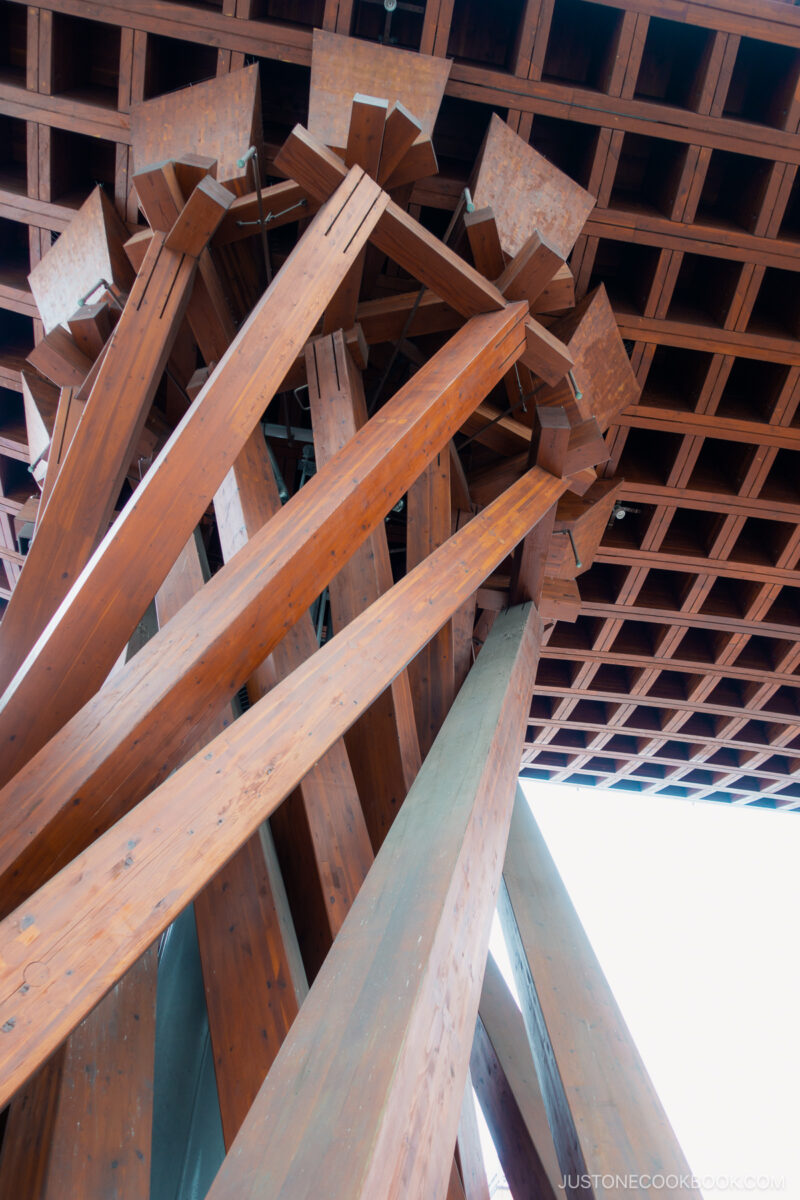
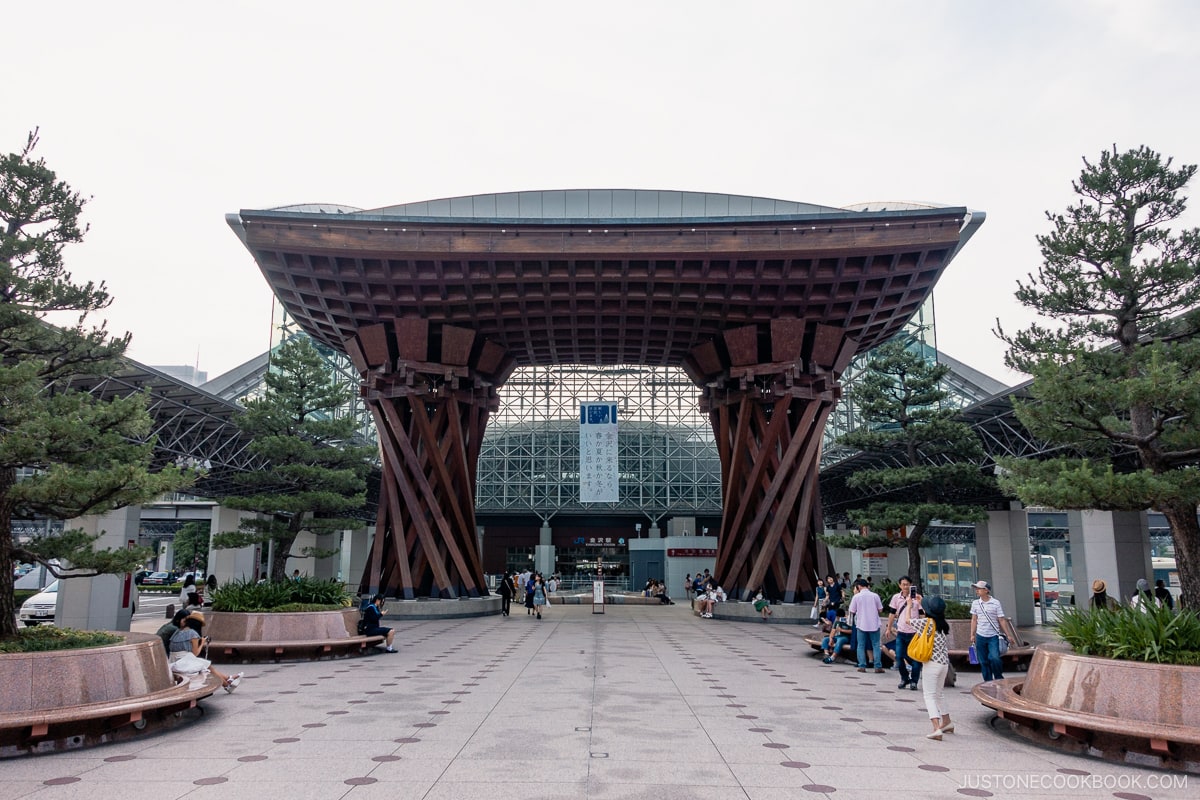
The main entrance is a covered dome called “Motenashi”, which symbolizes the wholehearted entertainment of guests. In front of it are wooden structures called “Tsuzumi-mon”, resembling the traditional Japanese drum gates.
In case you forget any souvenirs on the trip, no worries as you can probably find them at the station when you leave. You can also pick up a delicious bento for your Shinkansen ride home.
Kanazawa Loop Bus: Convenient and Stress-Free Travel
Unlike many other large Japanese cities, Kanazawa doesn’t have a subway system to conveniently take you around the city. However, the city loop bus will take you to most tourist spots, the RL (right loop) and LL (left loop).
The fare will depend on where you get on the bus and where you get off, which will be displayed on a screen at the front of the bus. Alternatively, for just 500 yen (children) and 800 yen (adults), you can get a day pass with unlimited rides (as of 2023).
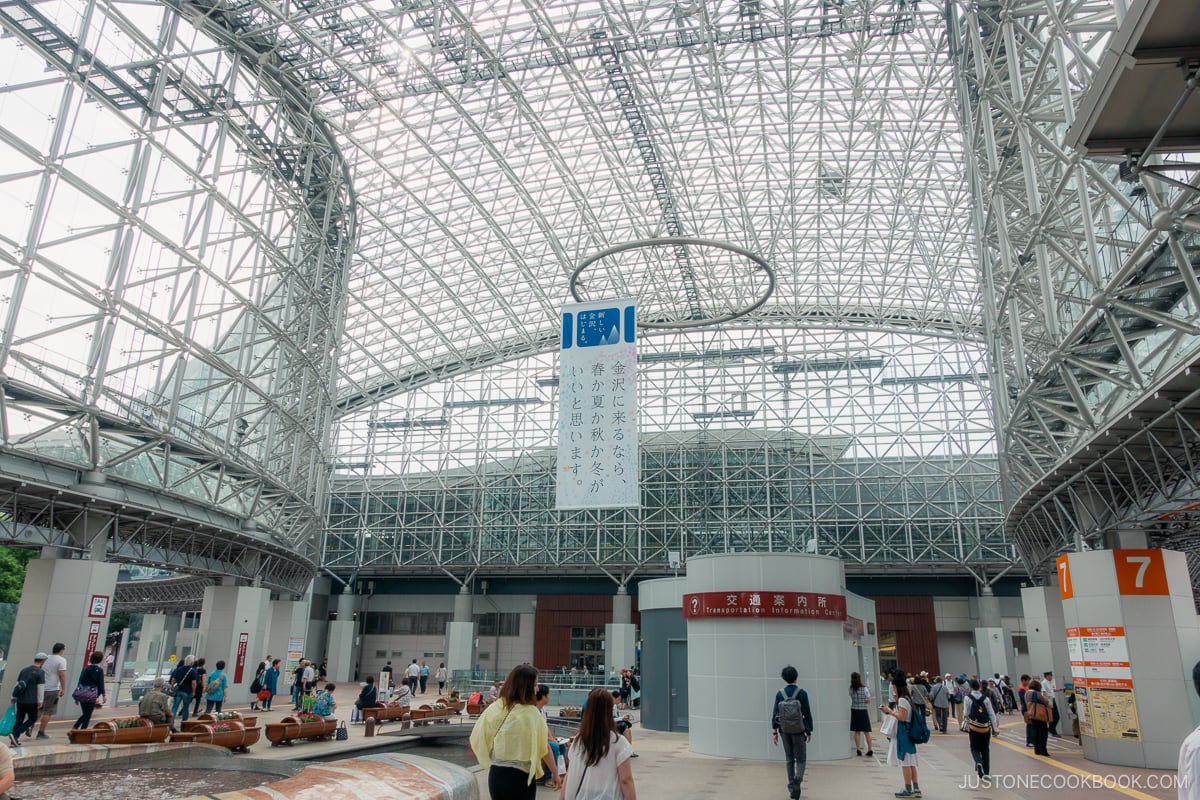
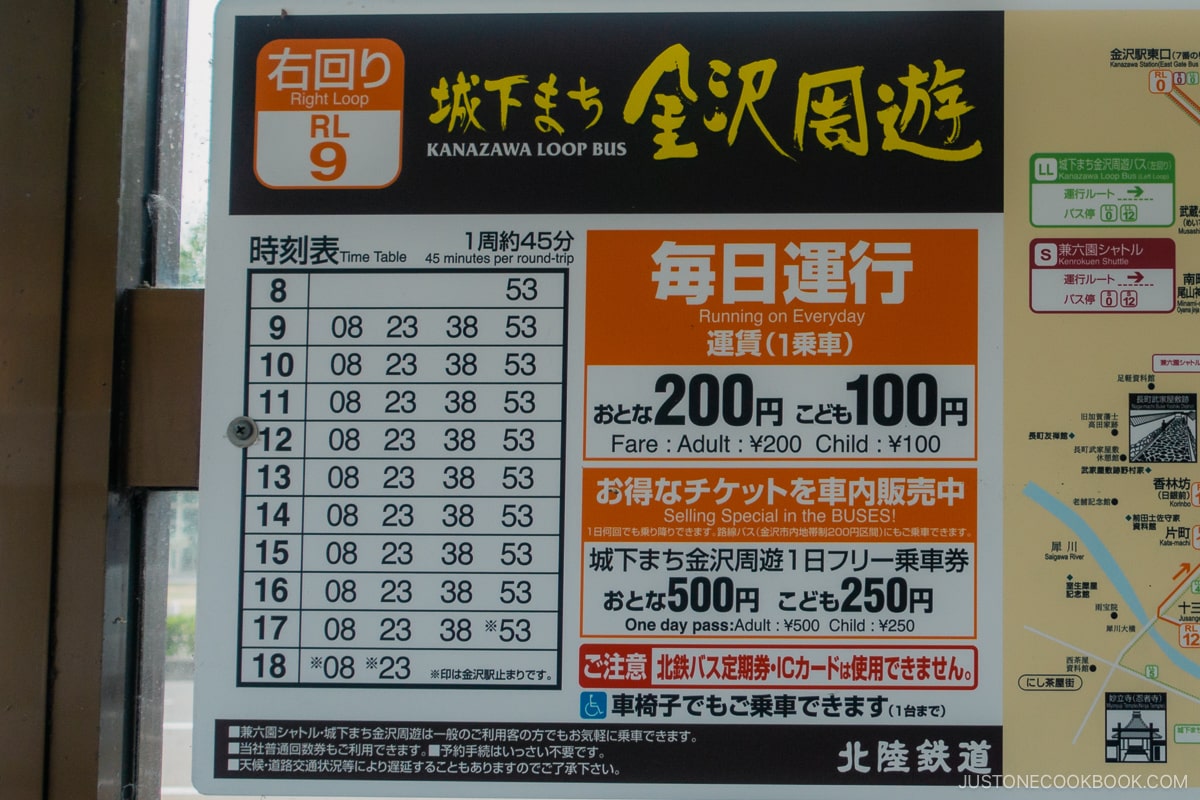
Must Visit Places in Kanazawa
During our brief one-and-a-half-day visit, we didn’t have enough time to visit every spot. However, we’ll give our top recommendations based on the best order to maximize your time if you are on a tight itinerary.
Omicho Market (近江町市場)
If you are coming from the Tokyo area, the train ride takes about 2.5 hours. If you leave in the morning, you’re likely to arrive around lunchtime, so Omicho Market (近江町市場) is a great place to grab some food. From the main entrance of Kanazawa station, board the LL route at Bus Stop #7. Get off the first stop at LL1 and you’ll find yourself at the market’s entrance.
Omicho market has been around for around 300 years and is renowned for its wide variety of seafood and produce.
As Kanazawa is situated near the Japan Sea, it has an abundance of seafood that we don’t typically see in the U.S. One cool thing we saw was when the fishmonger skillfully scraped tuna meat off its bone to serve to the crowd.
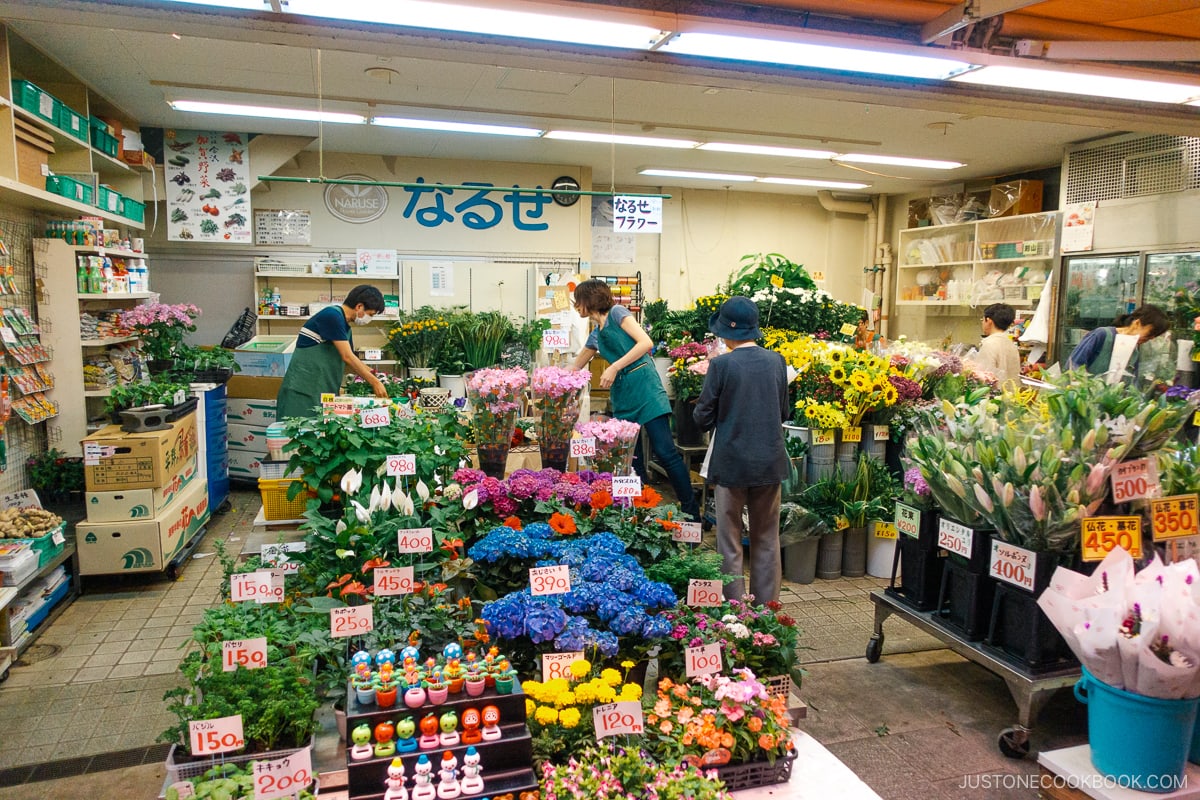
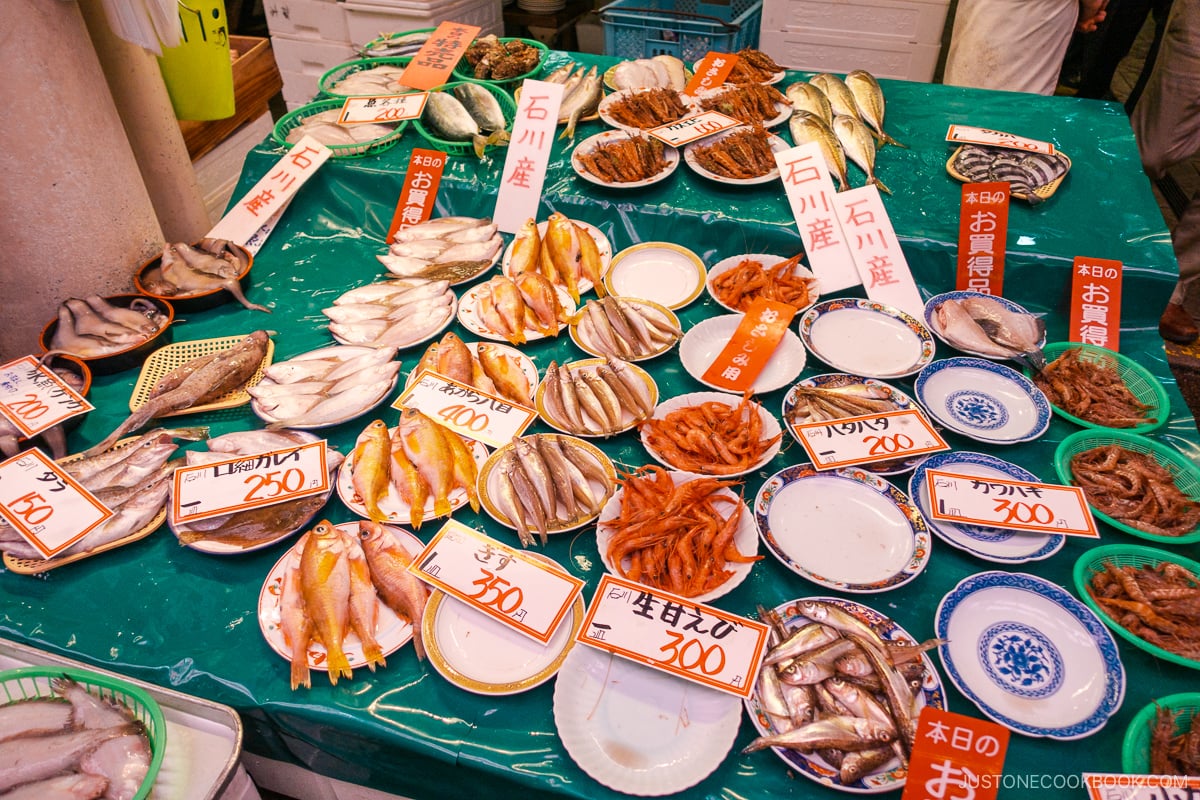
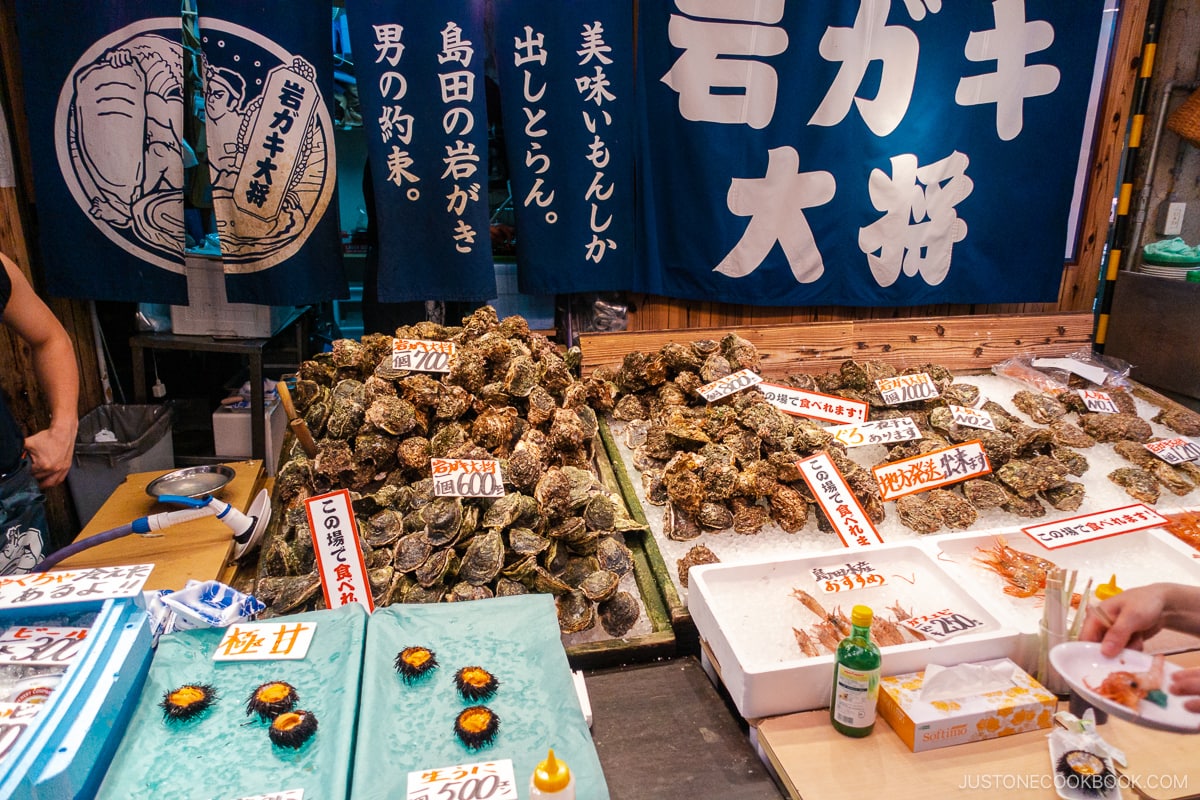
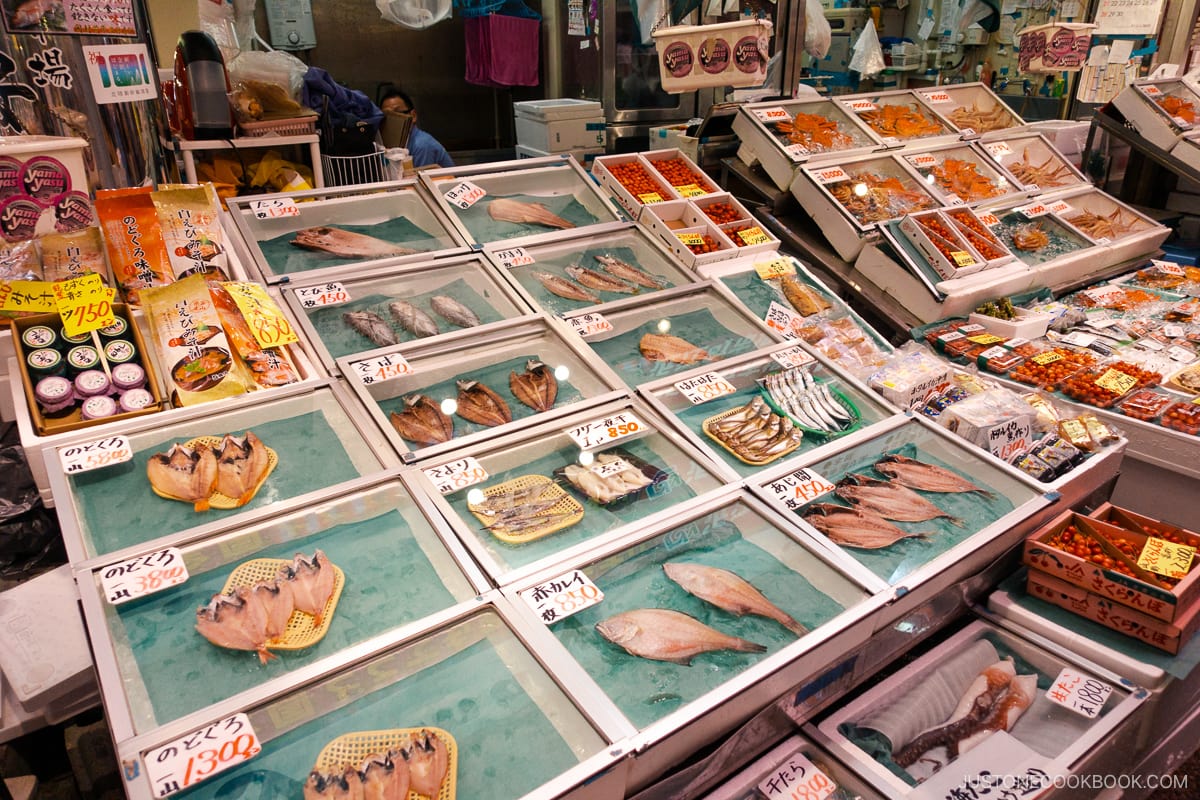
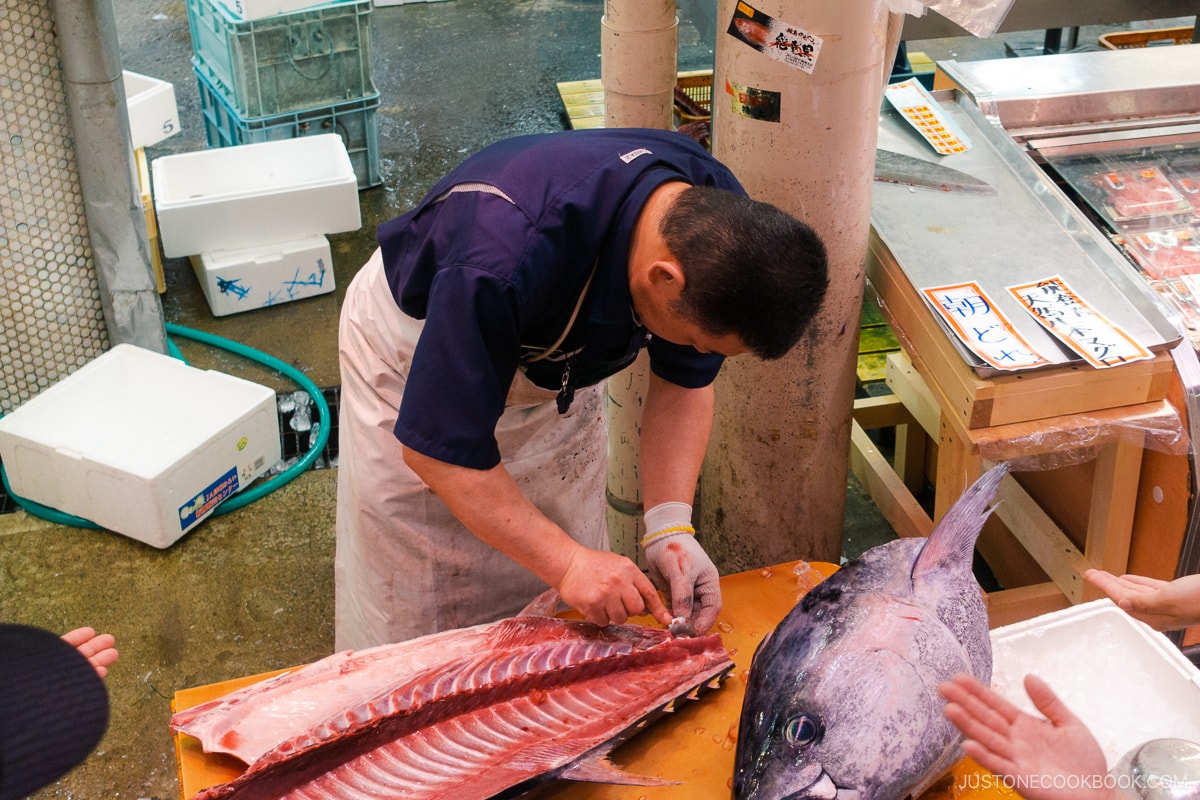
Besides the food stands, there are also flower shops and various stands that offer local specialties.
For lunch, we went to the highly reviewed Yamasan (山さん) and the sushi was fantastic. The seafood was super fresh and the fish had a natural sweetness to it. Kanazawa is famous for its seafood and we weren’t disappointed.
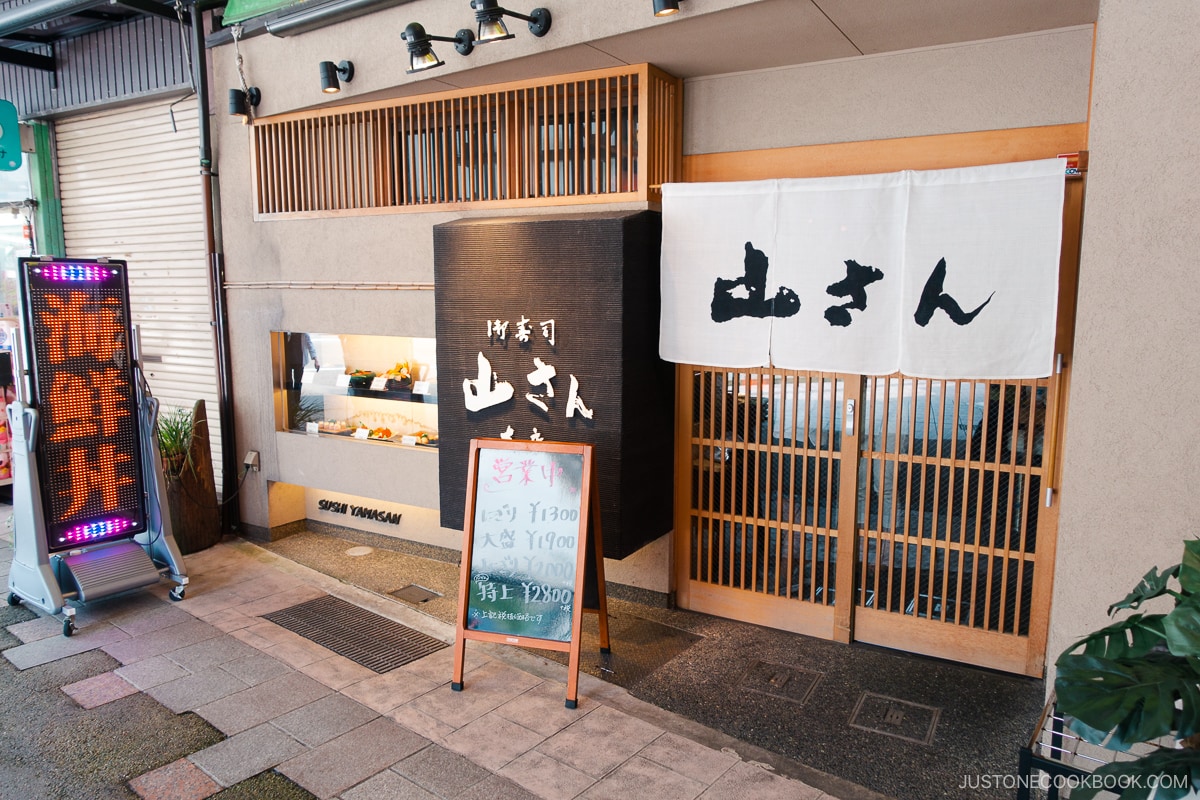
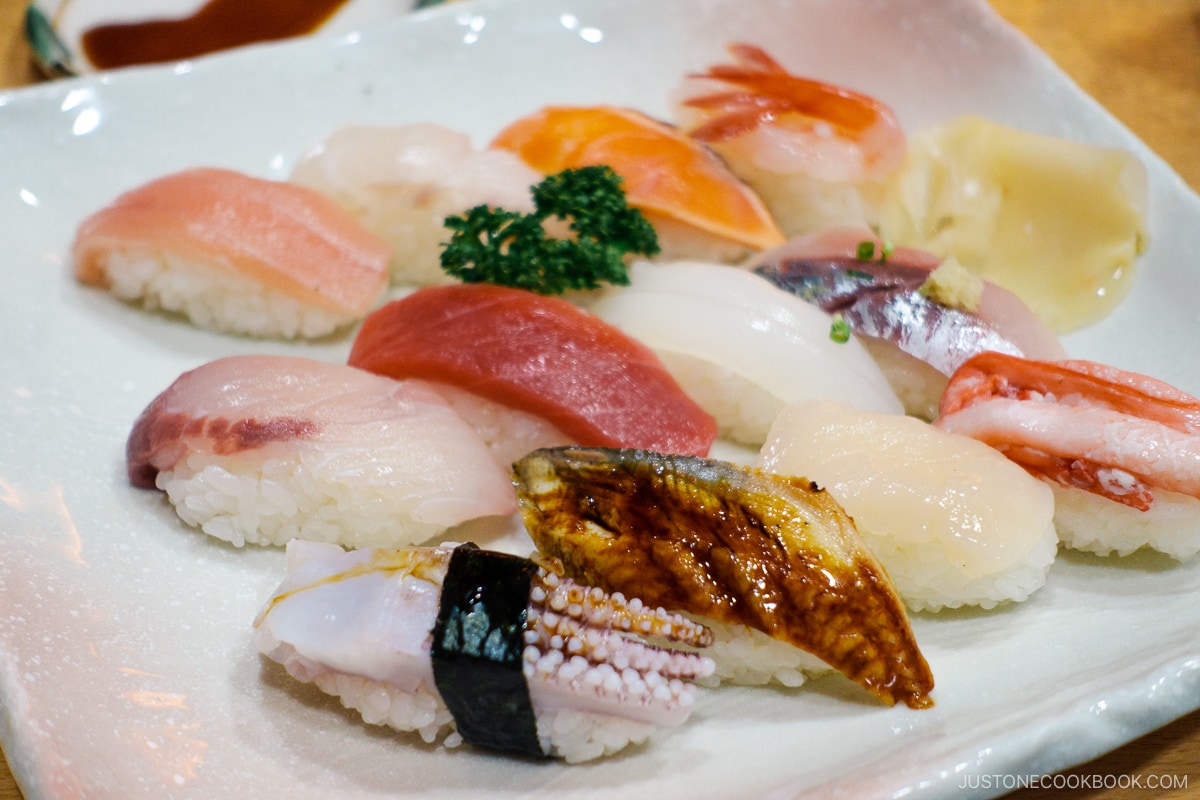
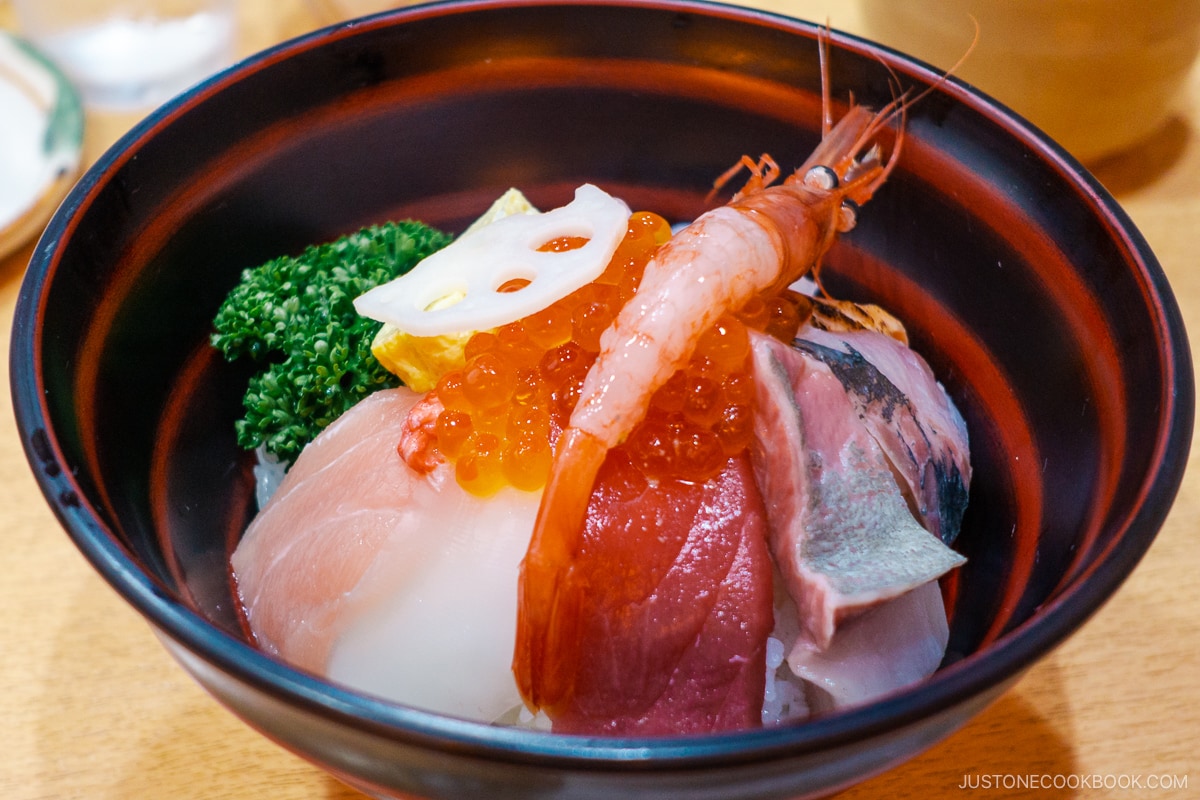
By the time we left the restaurant, there was a line with over 10 people waiting to get their piece of Kanazawa’s prized seafood.
Omicho Market also has various food stalls offering tasty snacks and small bites to eat. One of the unique skewers we tried was blowfish! My son has been fascinated with blowfish since he was a little boy, so he was super excited to try, but a bit worried about being poisoned. Safe to say that the blowfish was properly prepared and safe to eat!
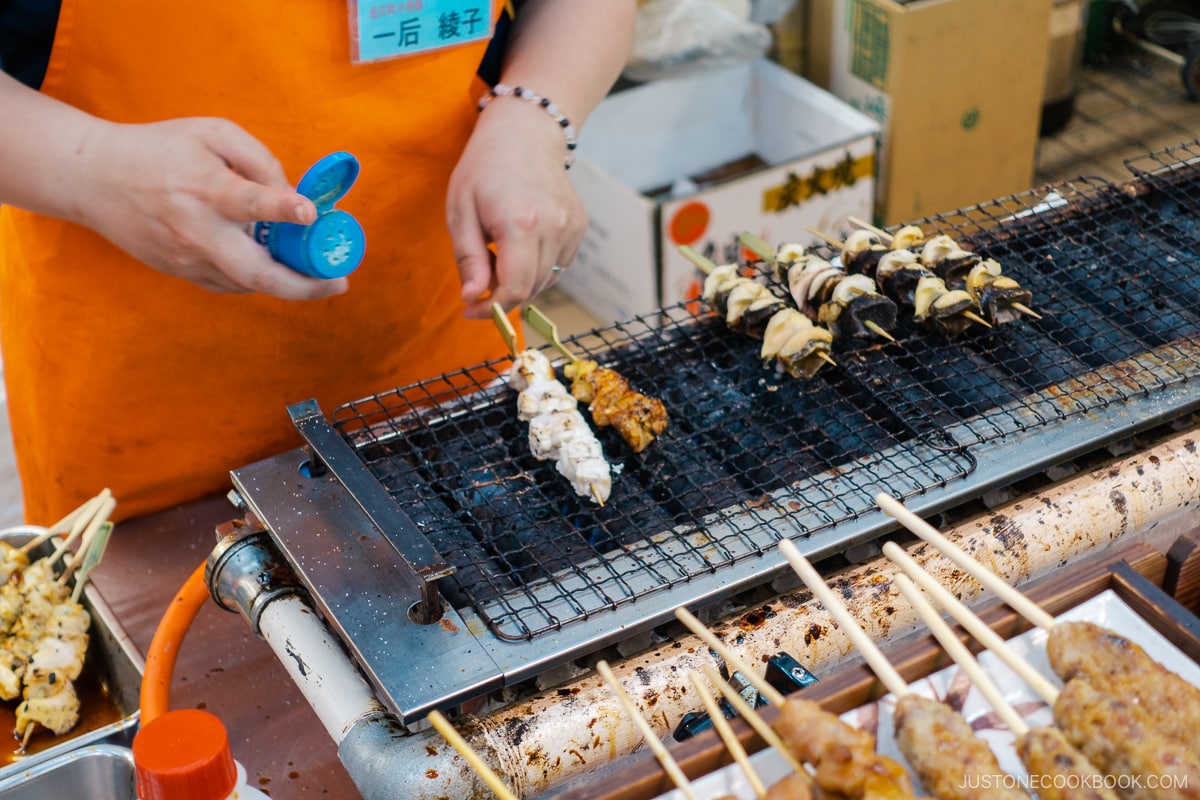
Kanazawa Castle Park (金沢城公園): Kanazawa’s Rich History and Architecture
From Omicho market, you can easily walk over to the Kanazawa Castle Park (金沢城公園). The entrance fee is 310 yen for adults and just 100 yen for children (as of 2023).
Although the castle itself no longer stands, having been burnt down and rebuilt numerous times throughout history, the park is still home to many significant structures that played a big role in Kanazawa’s history. Notable monuments include the Ishikawamon Gate (石川門) and the Gojikken Nagaya (五十間長屋), 90-yard-long warehouse. They were both built over 100 years ago.
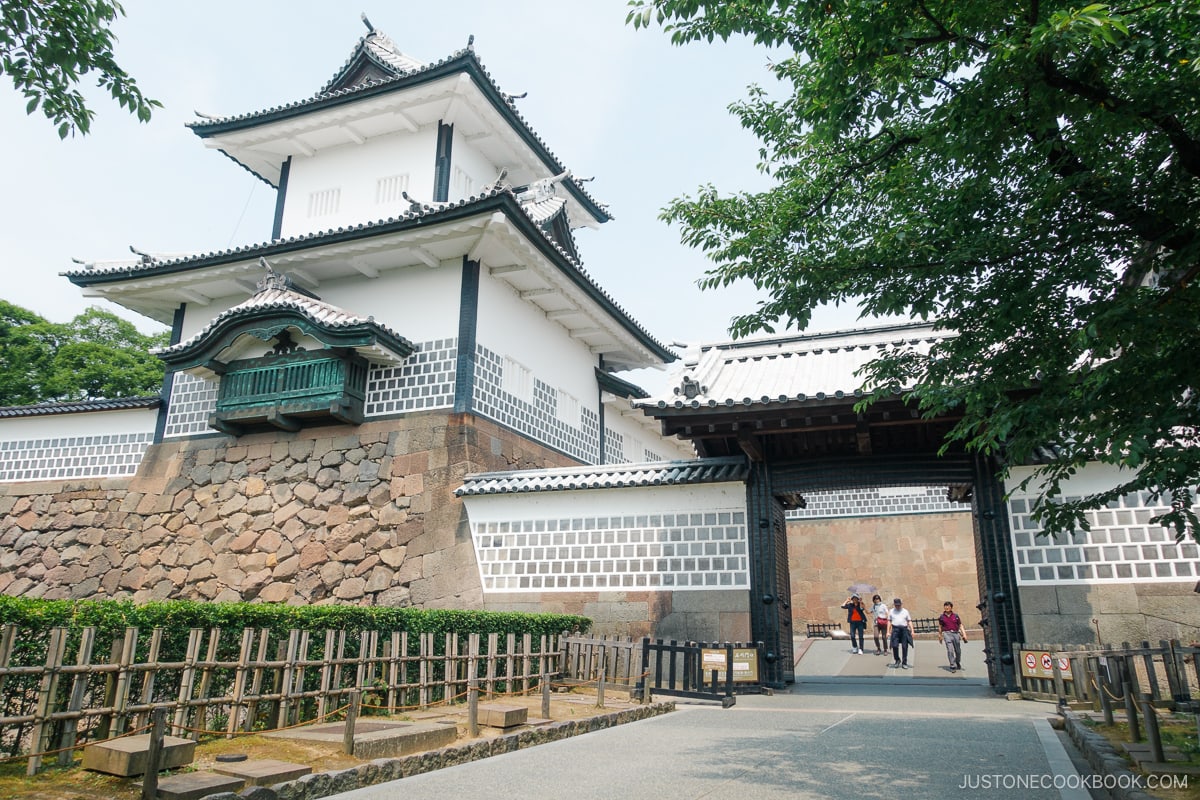
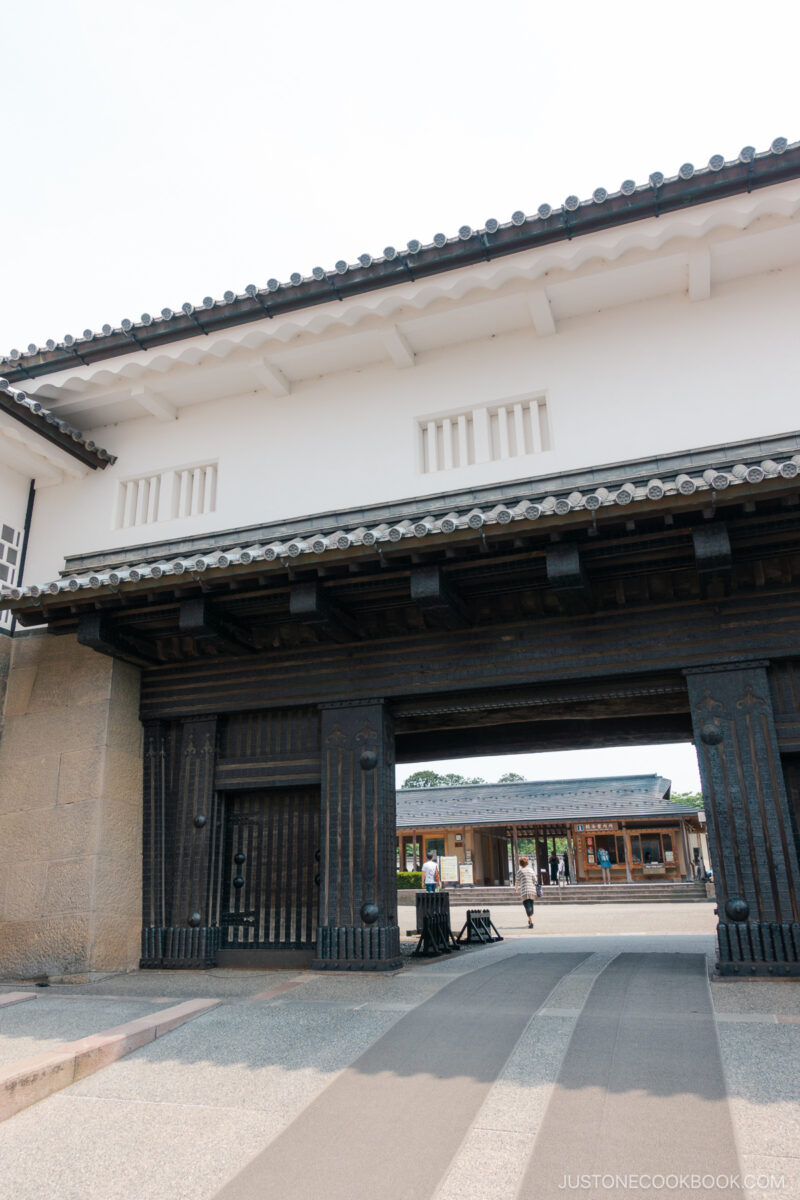
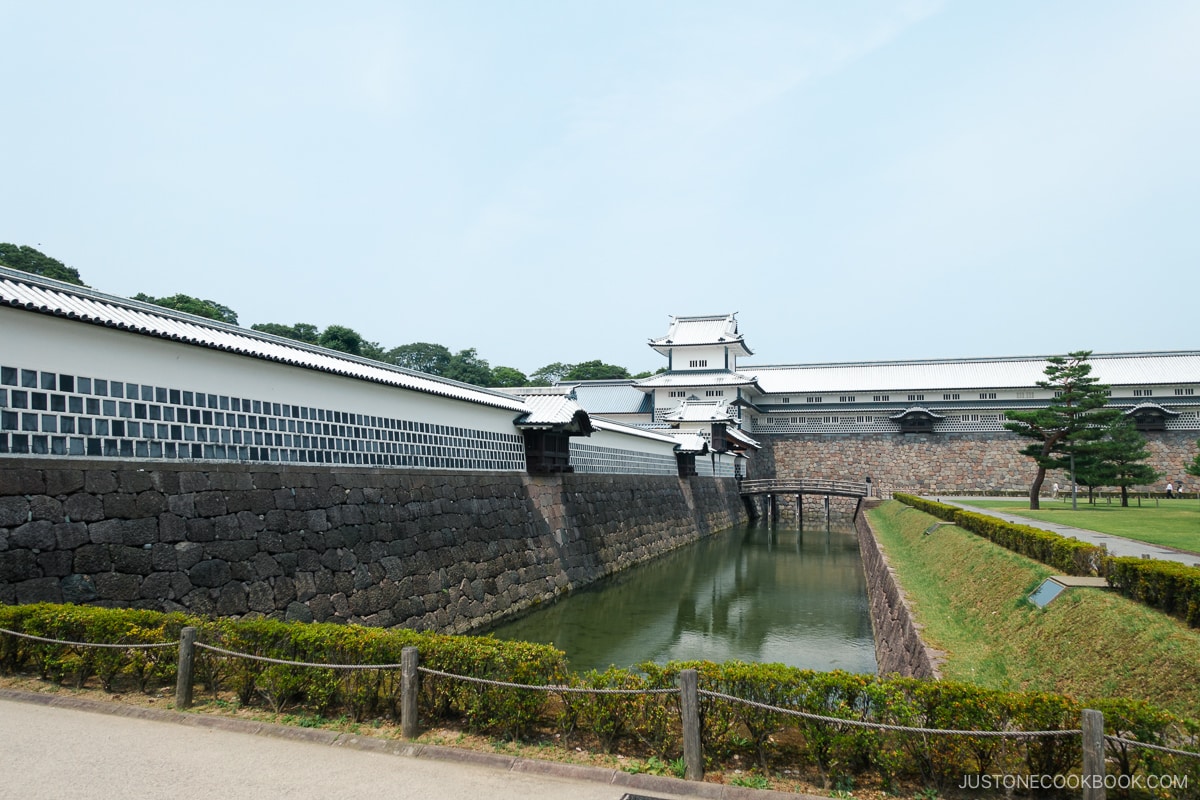
One unique thing about the castle is its white lead tiles compared to the black tiles you typically see on Japanese castles. These tiles have more strength and durability against the snow.
Many of the buildings recreated on-site were built using the traditional method by specialized craftsmen. You can see an example of the castle wall dissected, showcasing the highly detailed construction techniques up close.
There are free guides in English available on site and we highly recommend using them. They tell you about the history of Kanazawa and the powerful Maeda clan family that ruled it during the Edo period.
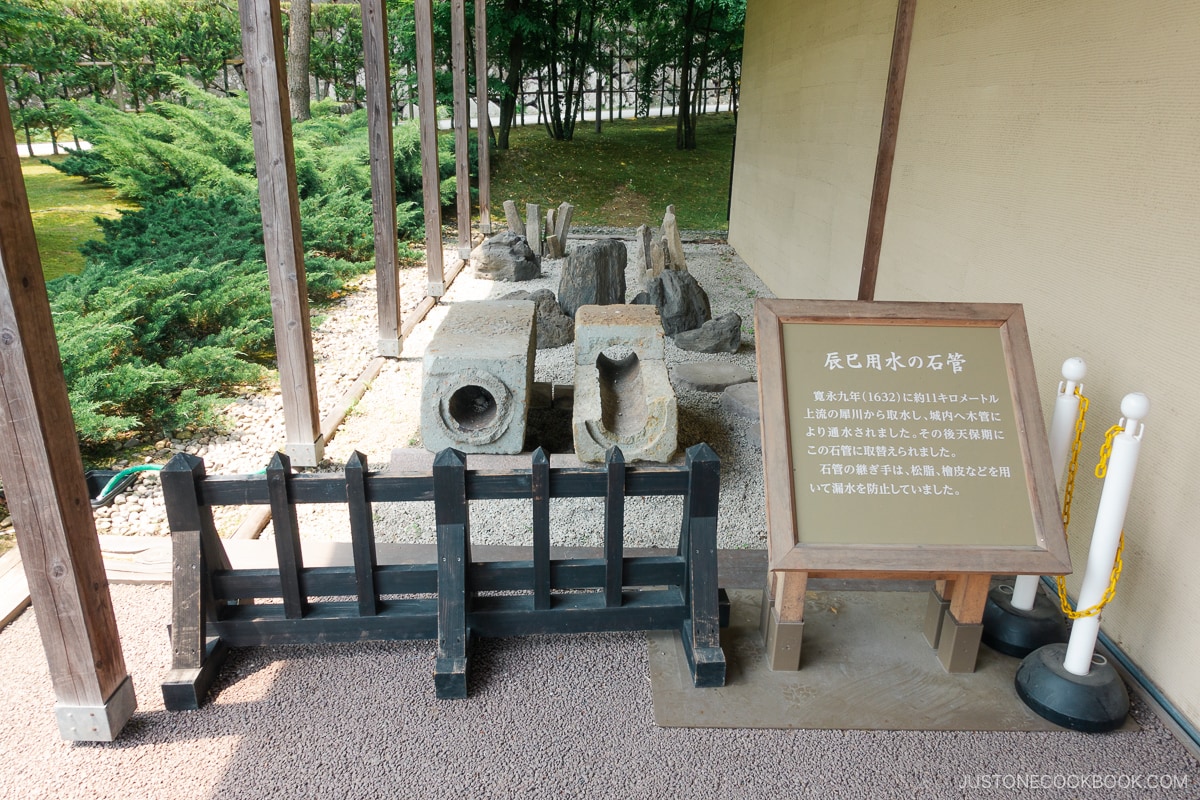
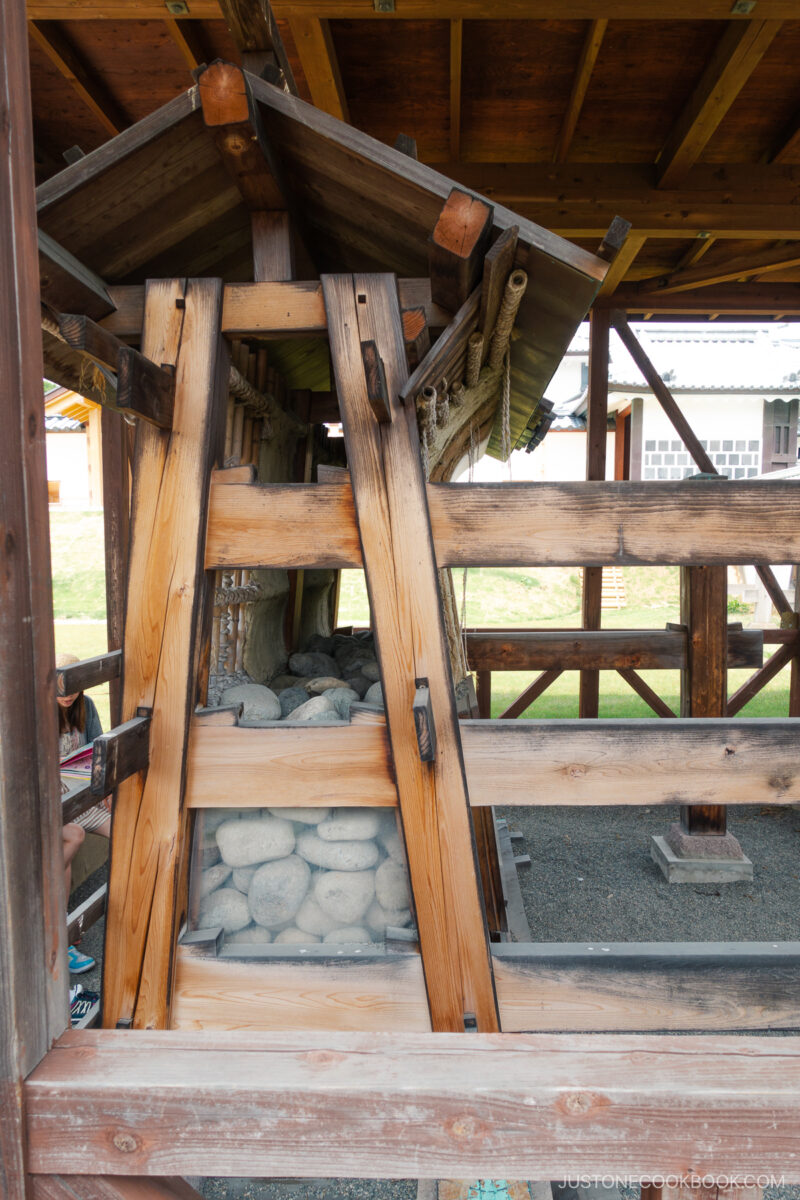
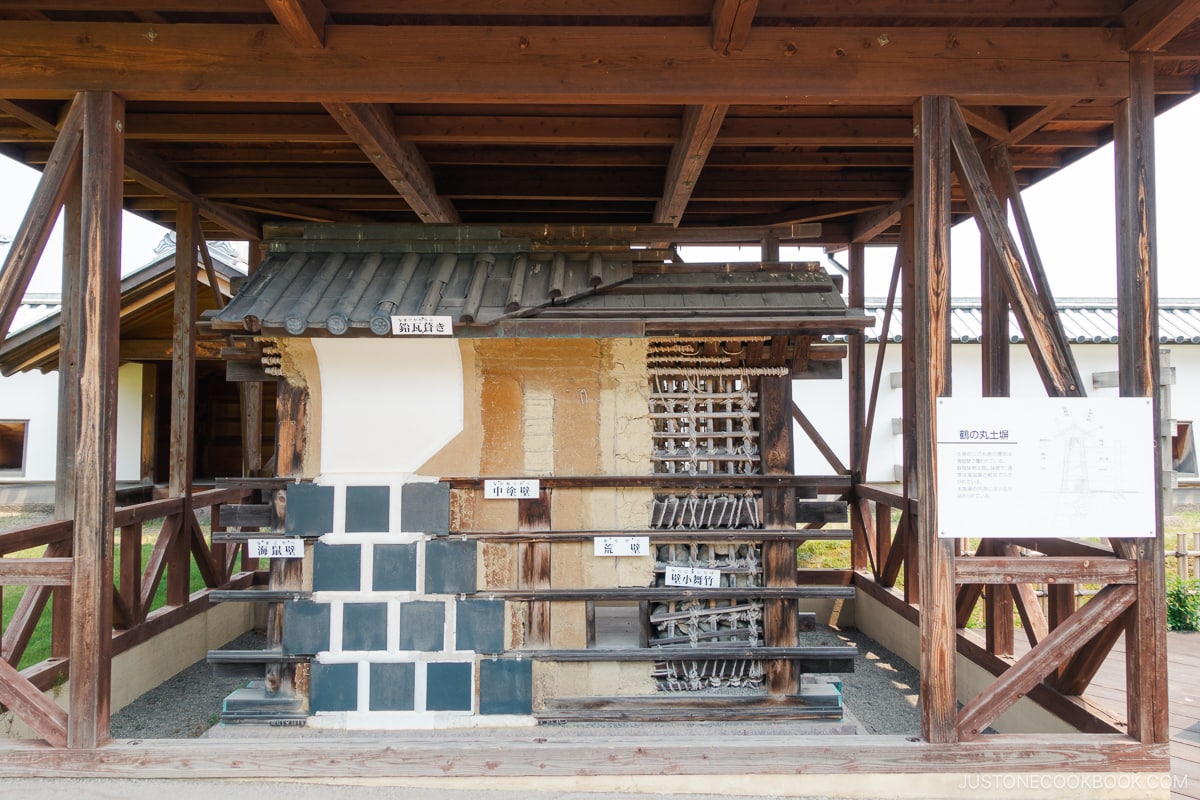
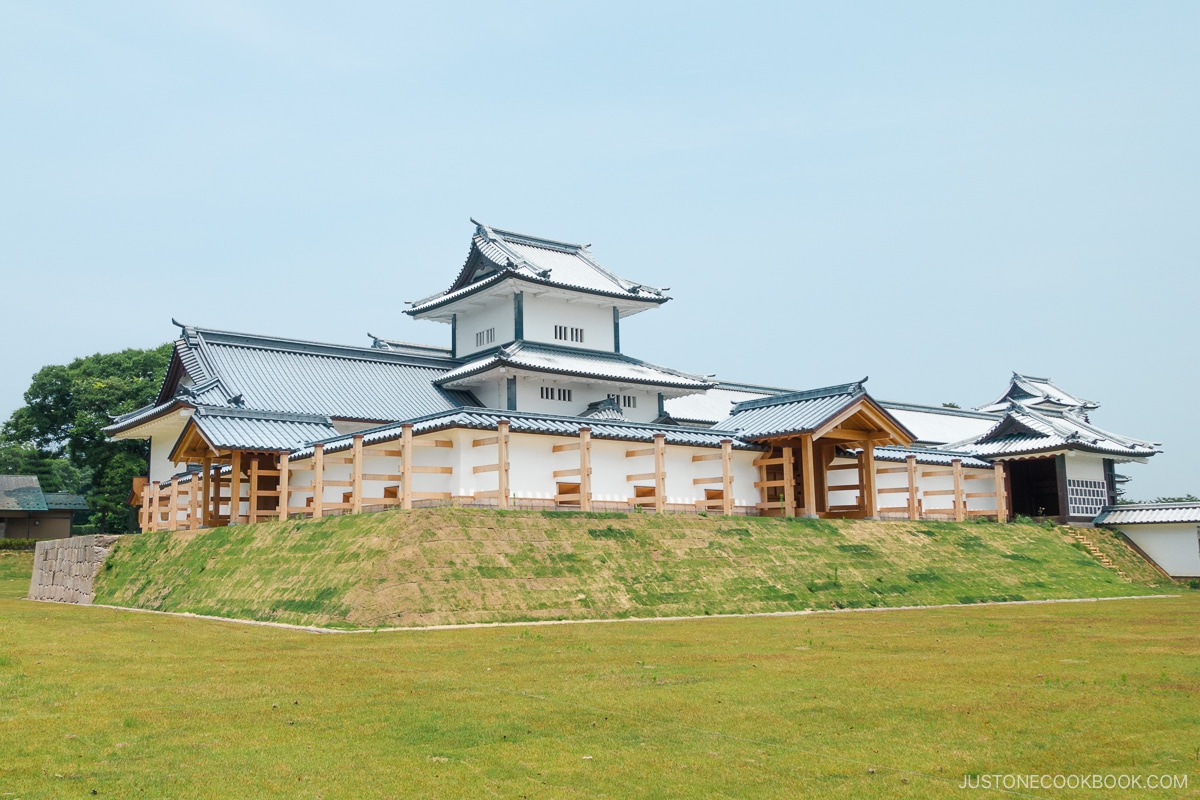
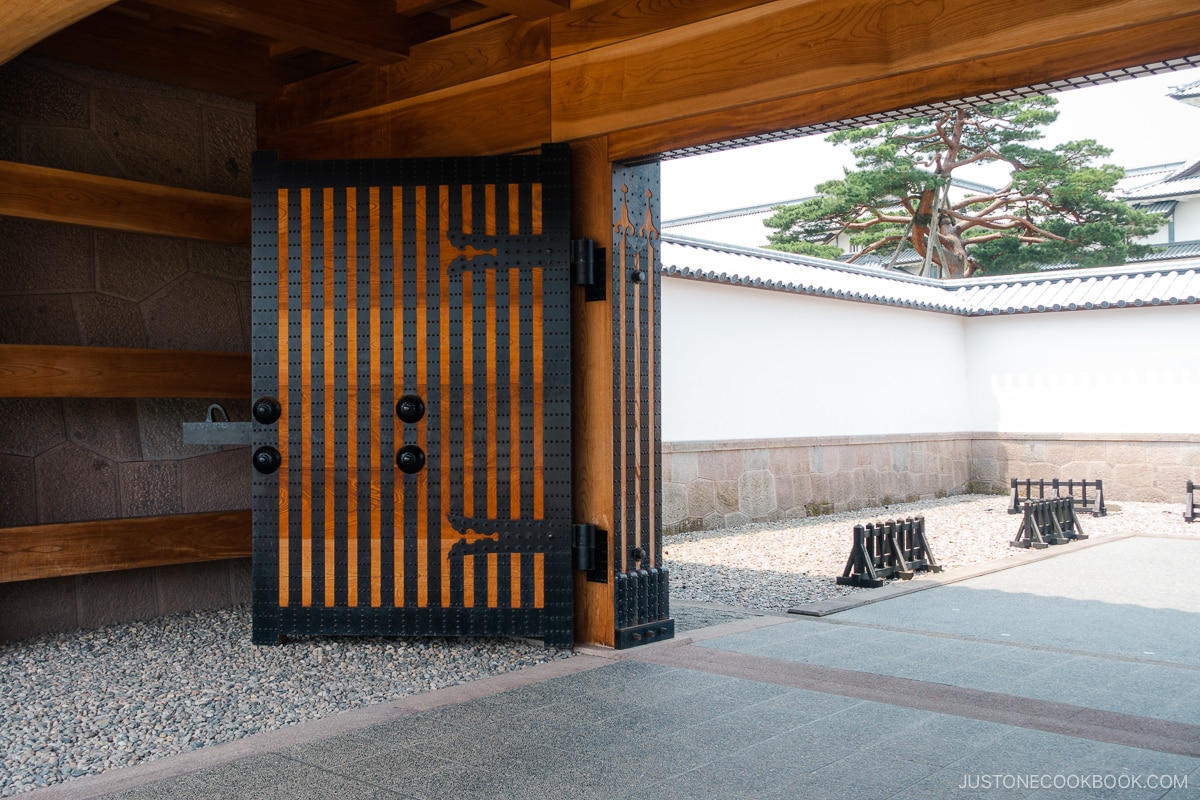
Kenroku-en Garden(兼六園): Kanazawa’s Natural Beauty
Connected to the castle by a sky bridge is one of Japan’s Three Great Gardens, Kenroku-en (兼六園). Originally, Kenroku-en was established as the private garden of the Maeda Family, sometime in the 1600s. The entrance fee is 320 yen for adults and just 100 yen for children (as of 2023).
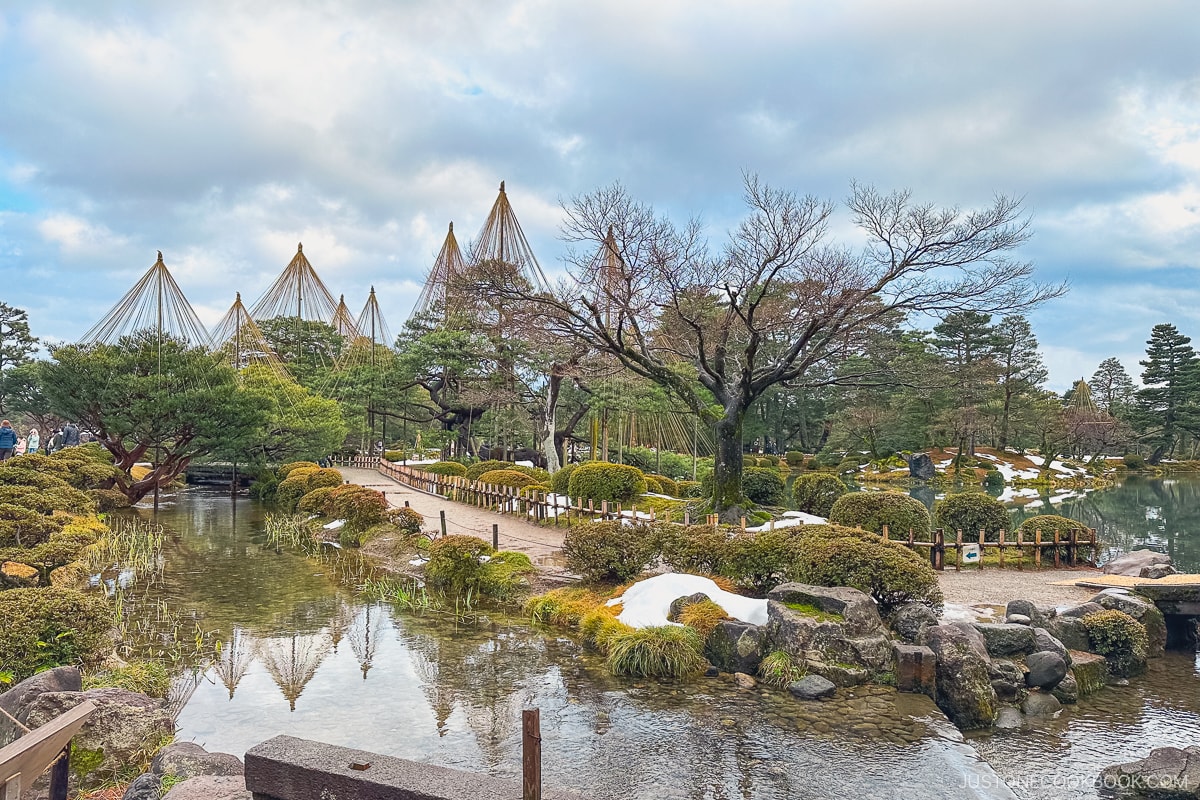
The garden’s name derives from having all 6 characteristics of a great garden: spaciousness, serenity, venerability, scenic views, subtle design, and coolness. It stretches a vast 25 acres, Kenroku-en has an impressive landscape and a wonderful harmonious design. One of its notable features is the 2 legged lantern in the corner of Kasumigaike (霞ヶ池).
Kenroku-en is rich with history and there is so much to explore, so if you wish to learn more, you can read more here for details.
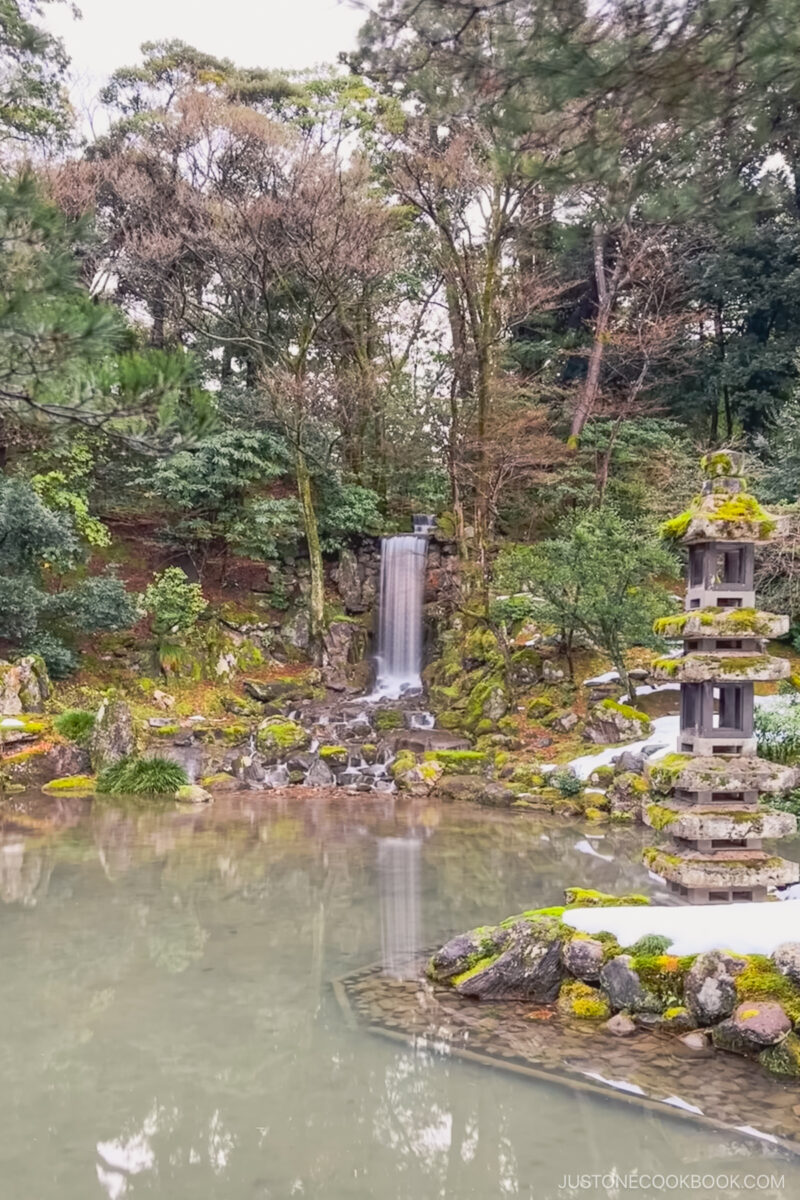
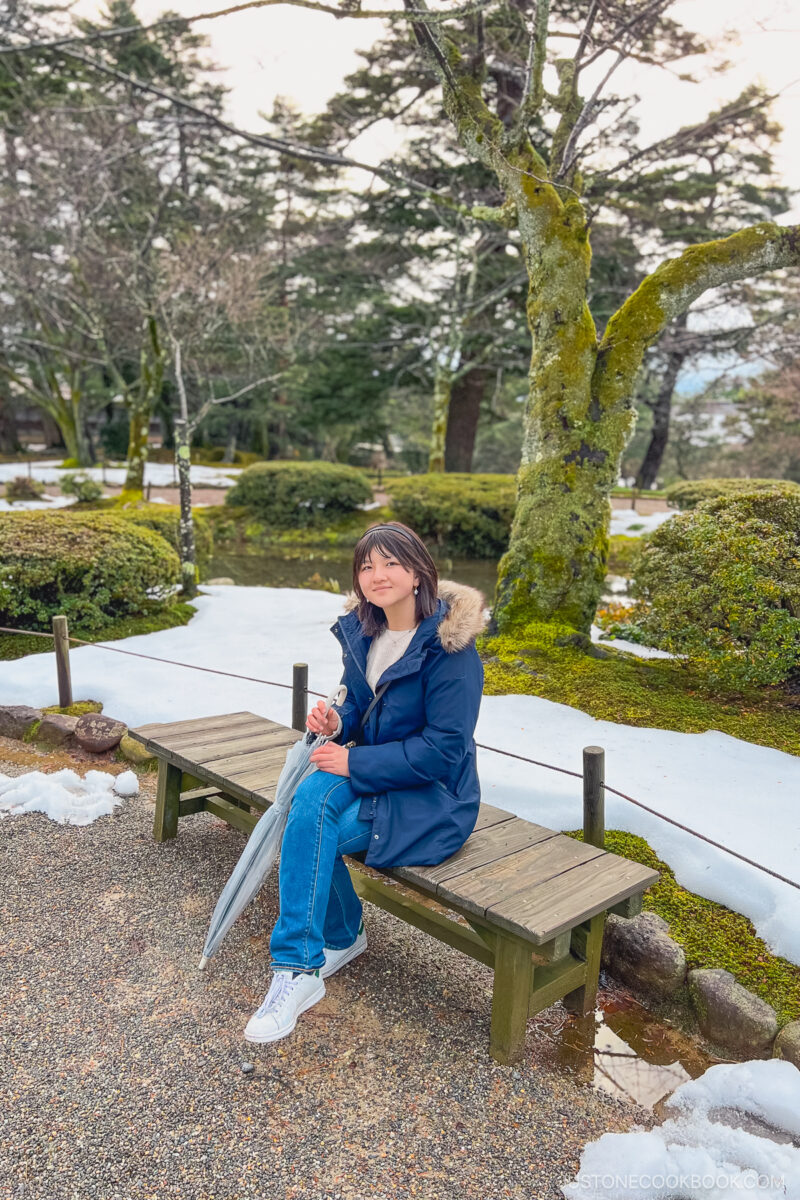
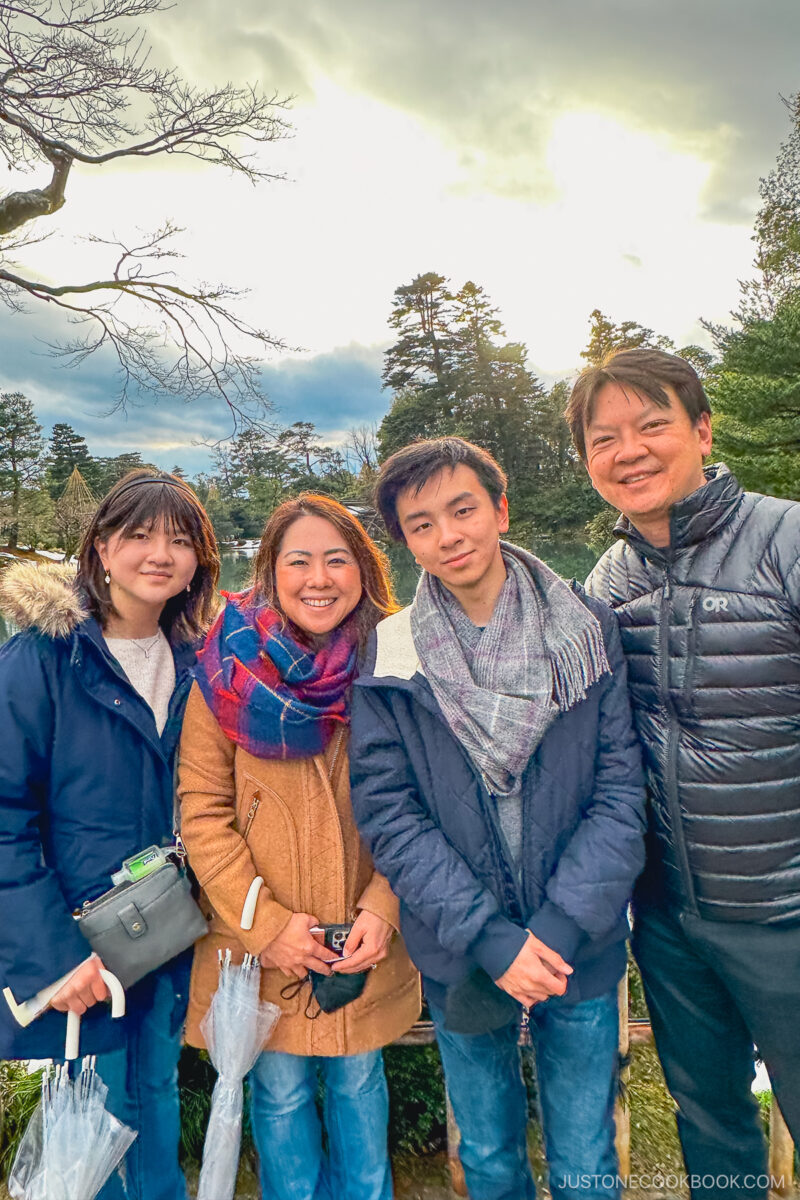
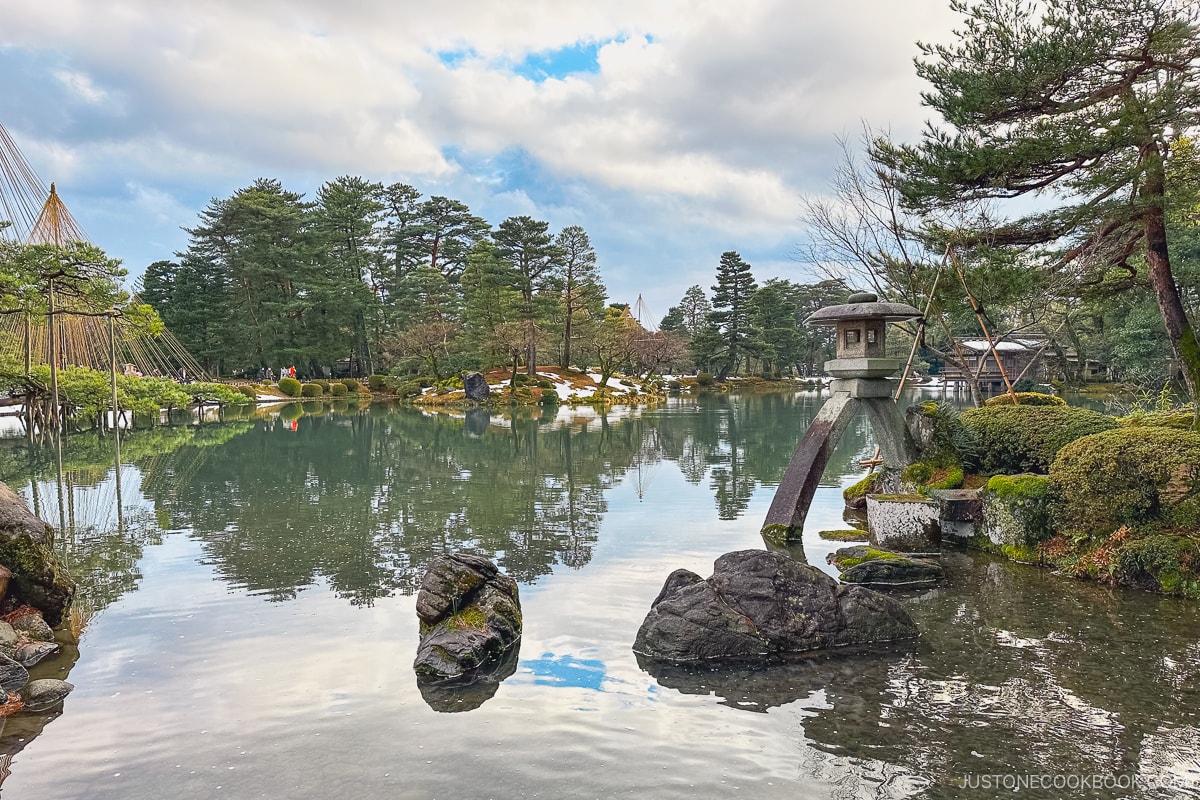
21st Century Museum of Contemporary Art (金沢21世紀美術館)
After browsing the garden, head over to the 21st Century Museum of Contemporary Art (金沢21世紀美術館) right next door. The unique circular museum functions both as a gallery and community space.
You can learn more about the current exhibits on display on the museum’s website.
Once you’ve completed your museum visit, consider returning to Kanazawa Station as it might be getting late. There, you can discover quite a number of izakaya to savor a delicious meal. I’ll talk more about our dining experiences later in the post.
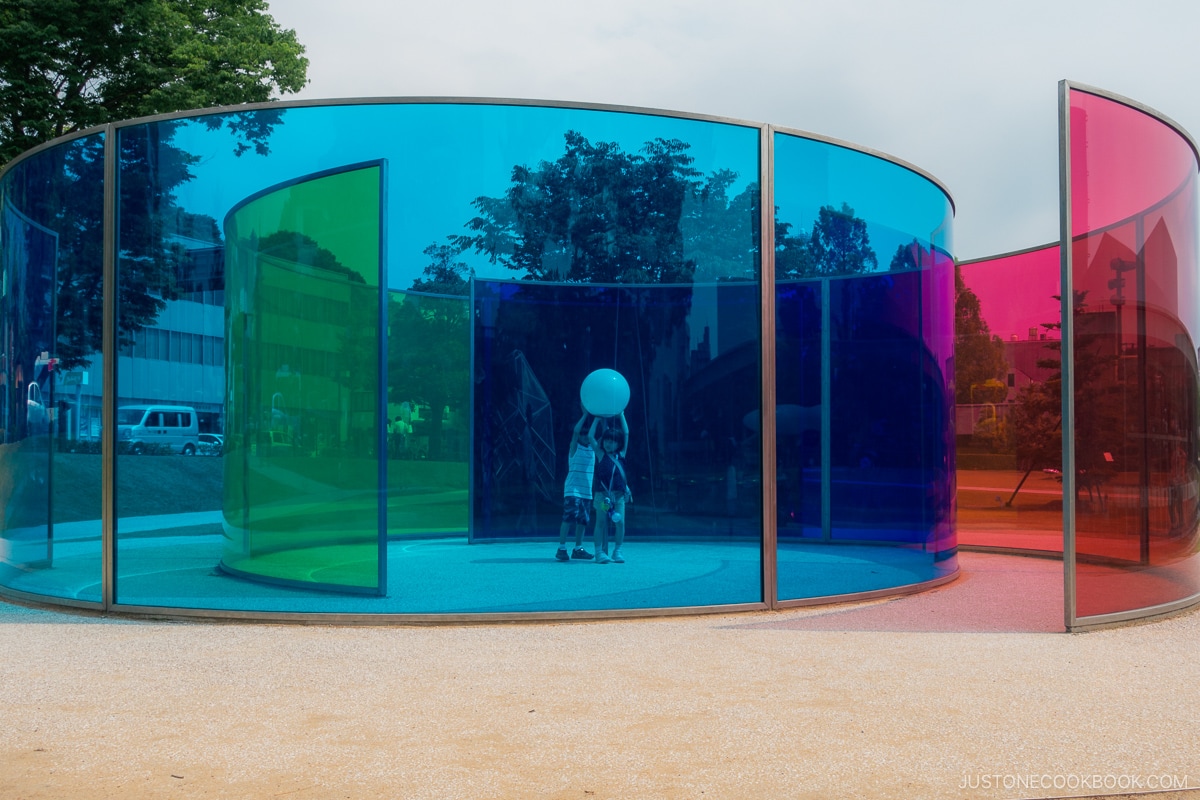
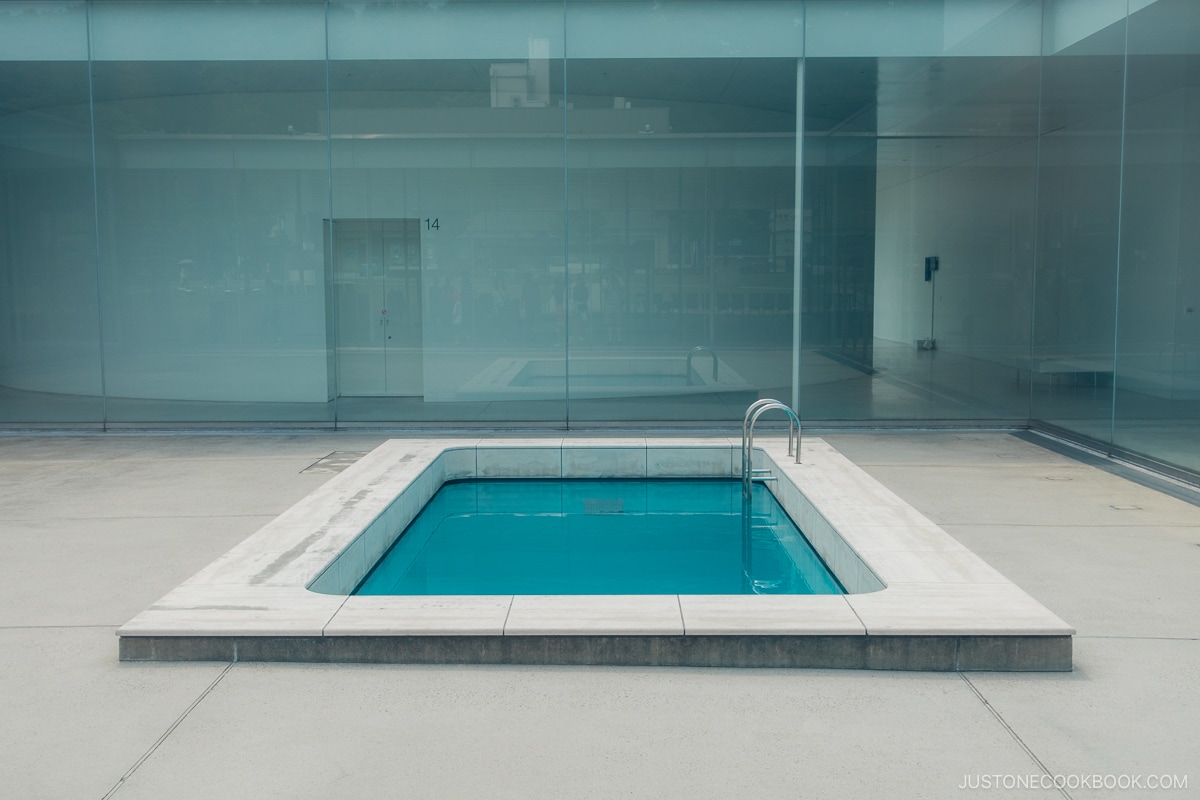
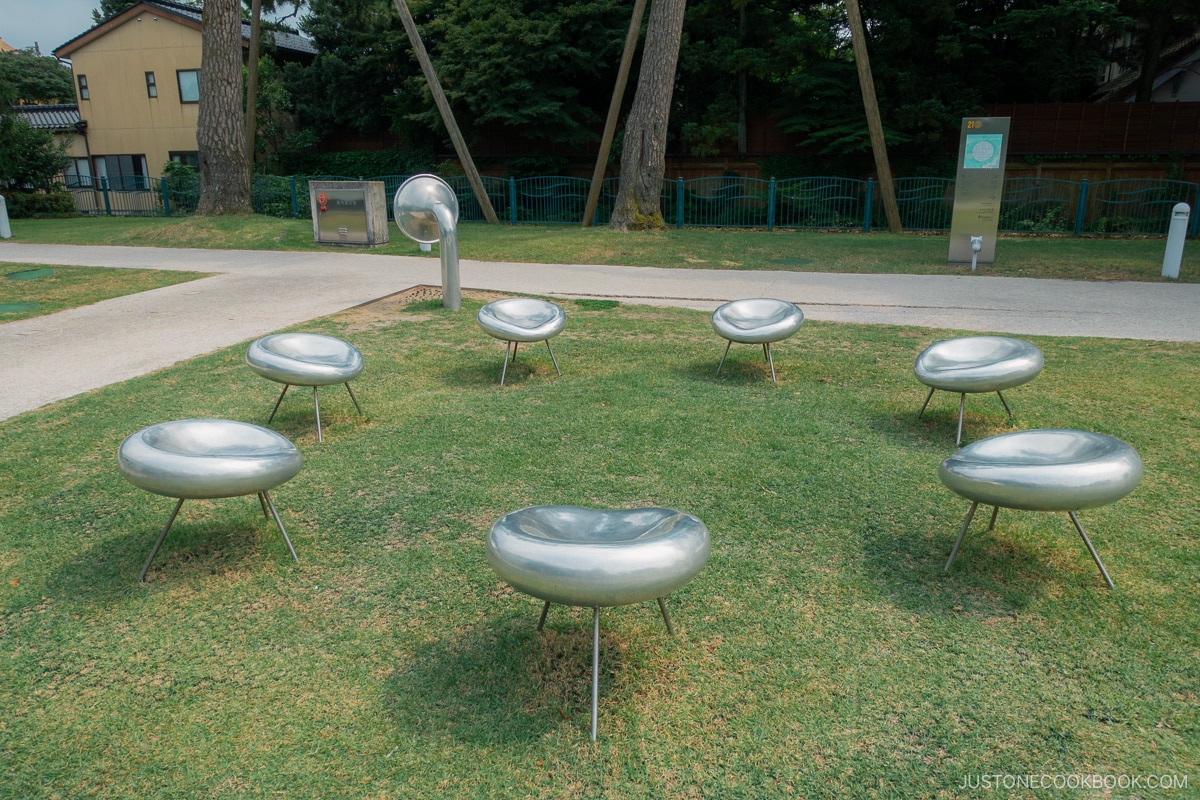
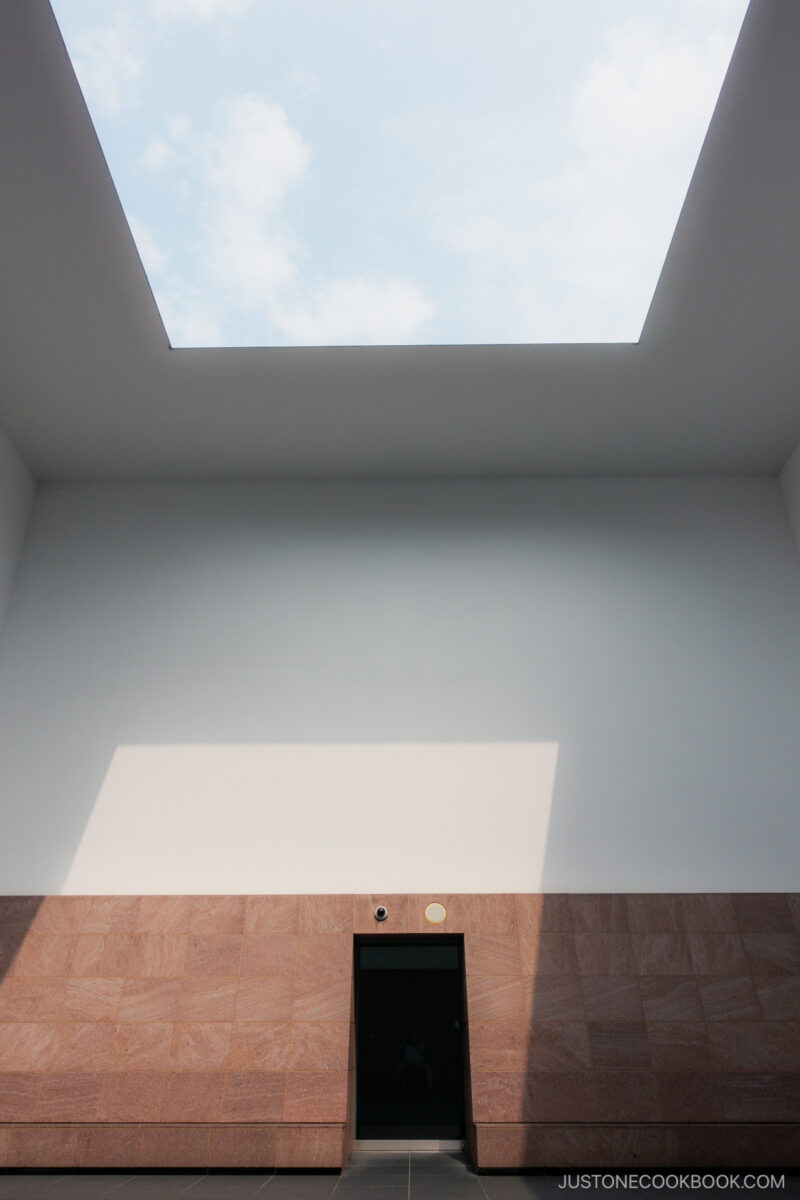
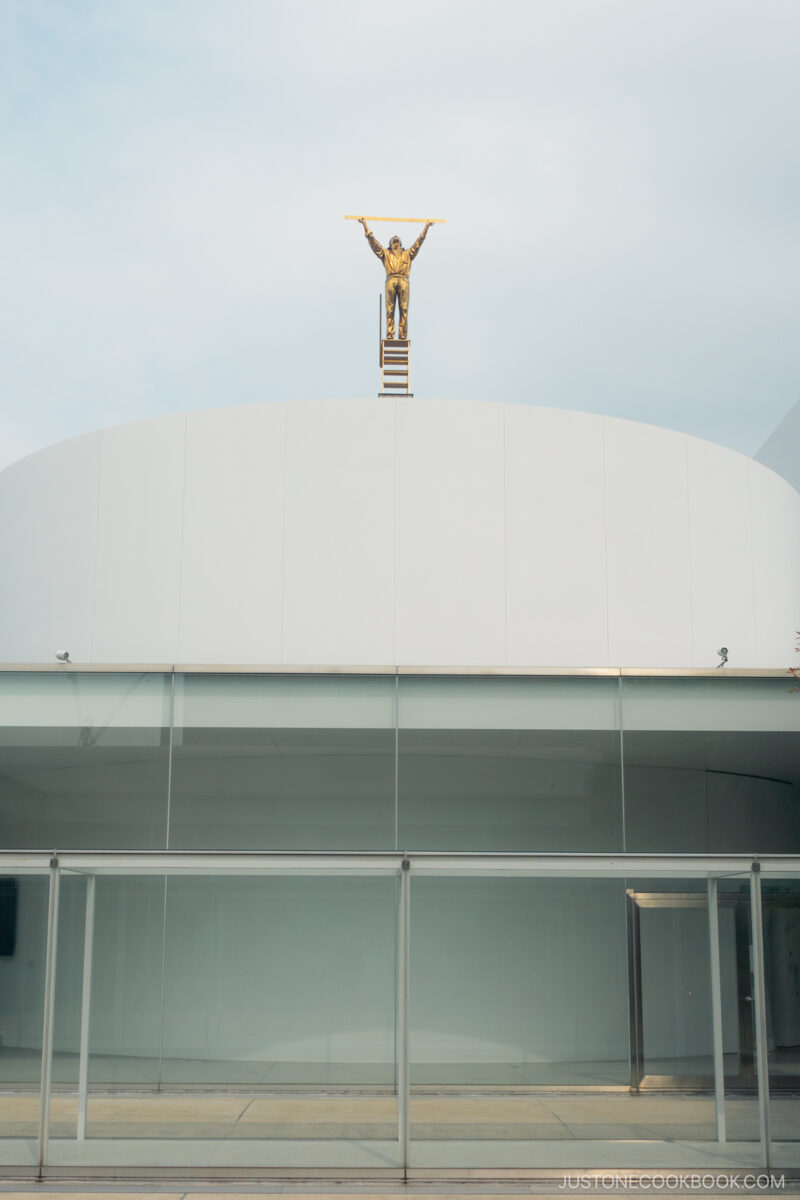
For day 2, I recommend starting at the Higashi Chaya District, a traditional geisha district that is quick to get crowded with tourists right from the early morning.
Higashi Chaya District – Eastern Teahouse District (東茶屋街): A Step Back in Time
From Kanazawa station, hop on the RL bus and get off at RL5 for Higashi Chaya (東茶屋街).
What is a Chaya? A Chaya refers to traditional tea houses where geisha have been performing since the Edo period, and they continue to do so to this day.
As you stroll along streets adorned with machiya-style structures (traditional wooden townhouses), it transports you back in time.
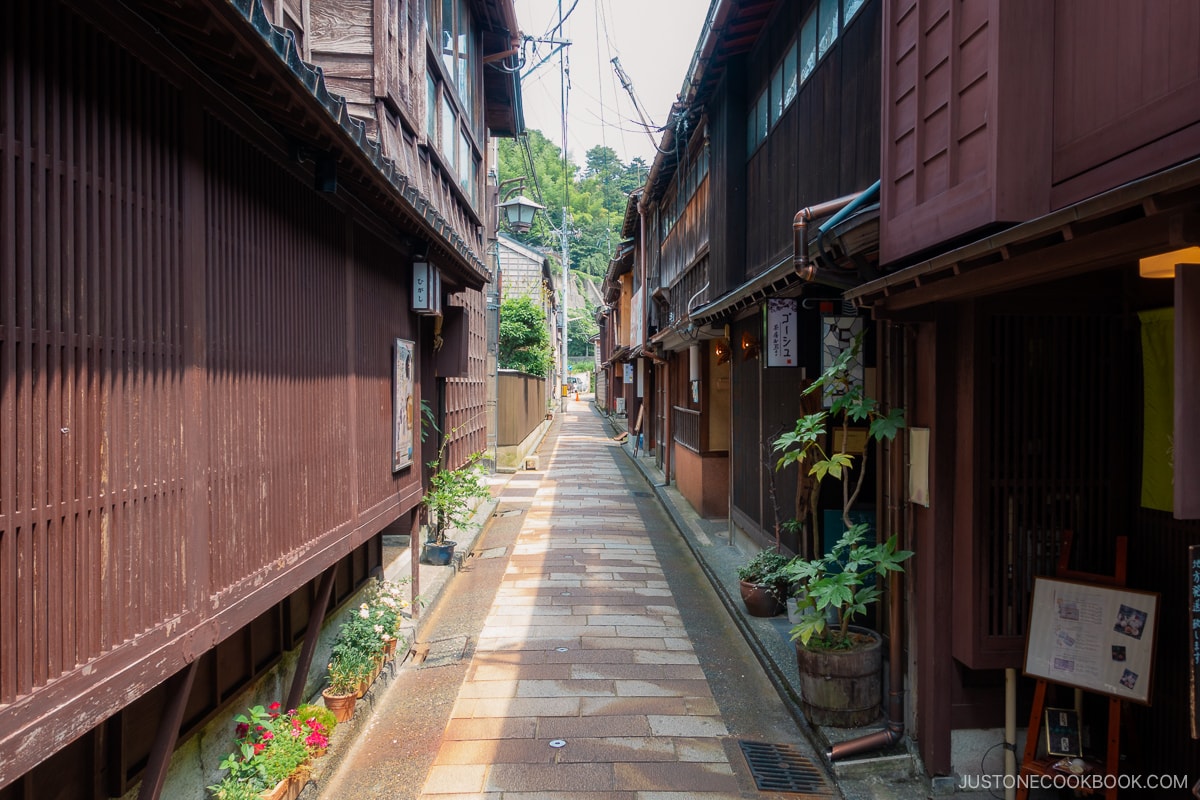
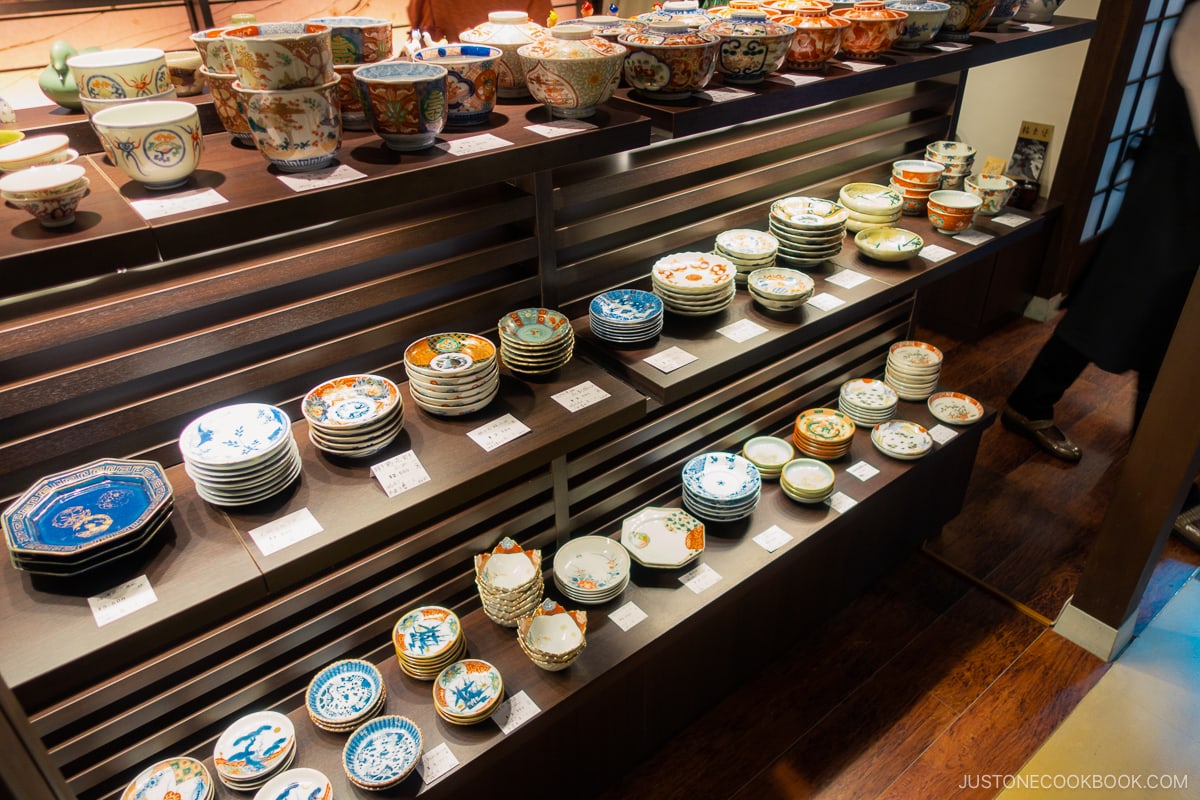
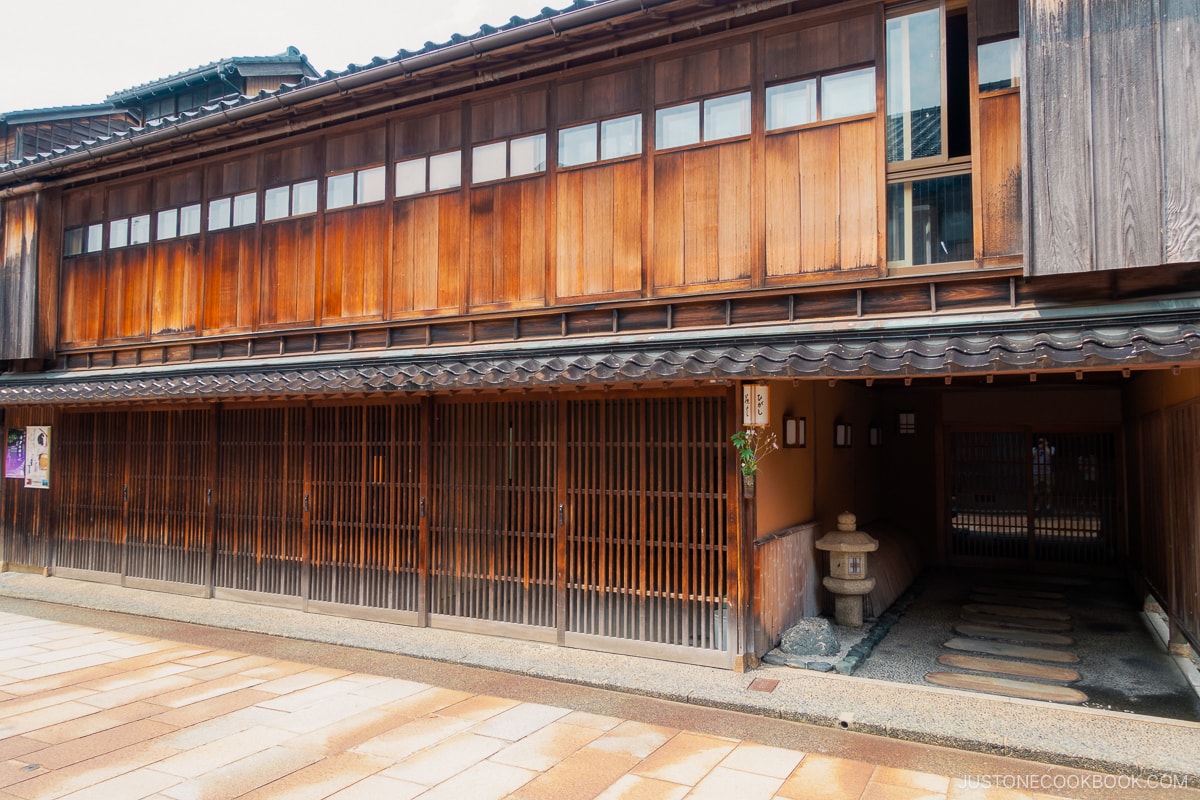
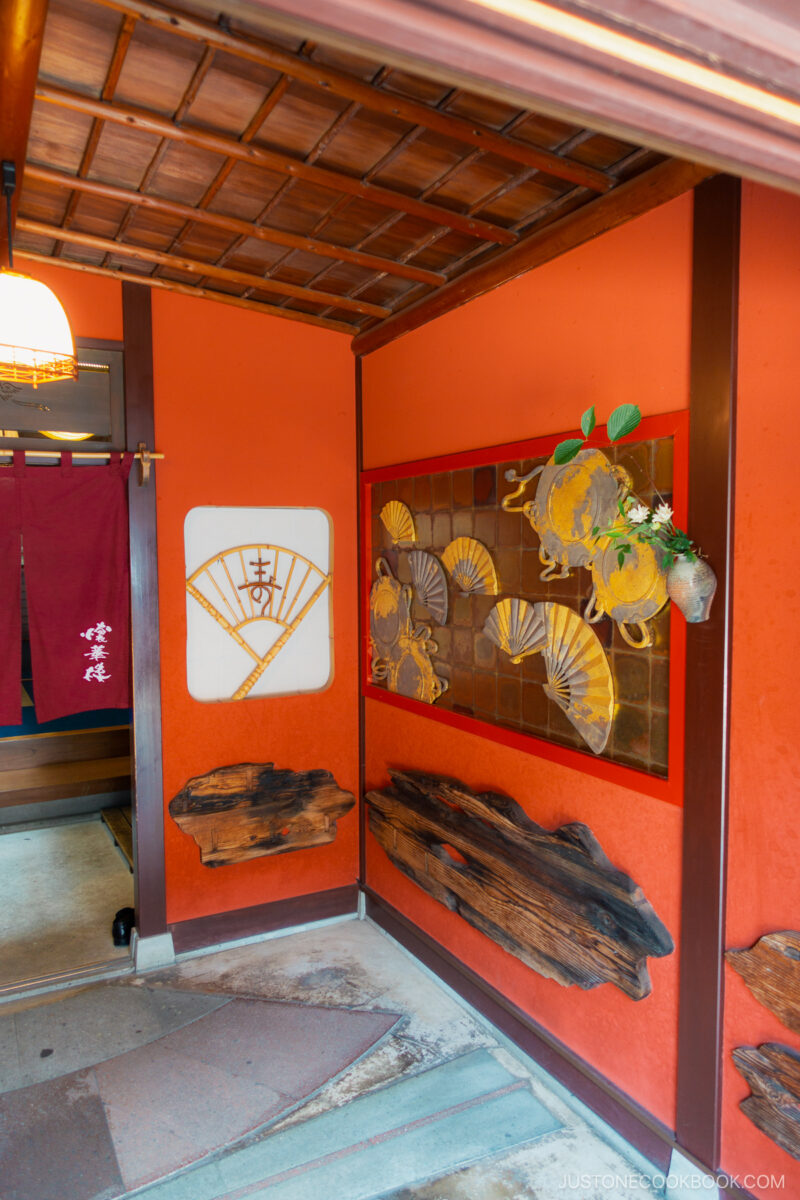
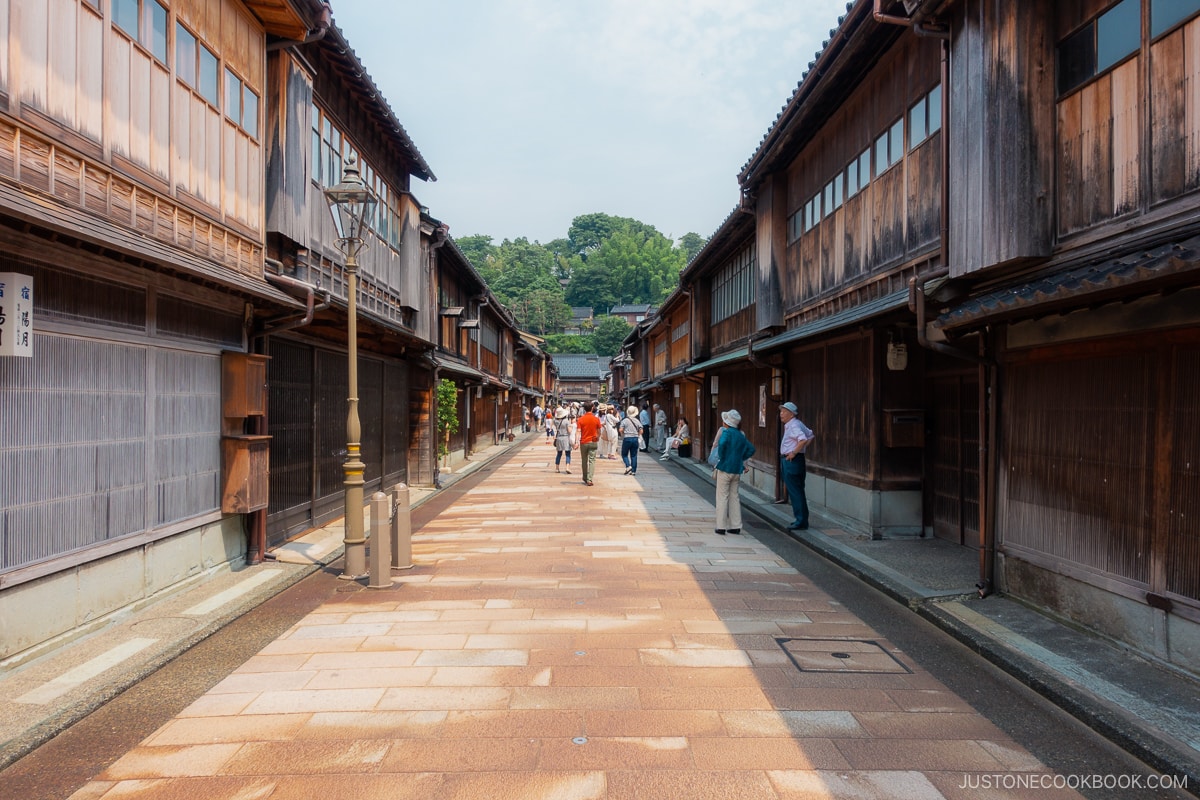
While we didn’t have time to visit Ochaya Shima (志摩), one of the buildings where you can pay to experience a glimpse of a geisha’s life during that era, there are numerous other establishments in Higashi Chaya. The majority of the buildings have been turned into restaurants and stores, with some showcasing the art and crafts of Kanazawa.
There is also the Yasue Gold Leaf Museum (金沢市立安江金箔工芸館) where you can see how gold leaves are made. 99% of gold leaves in Japan are made in Kanazawa today and are used in iconic structures including Kinkakuji (金閣寺) in Kyoto. At the museum, you can see how the skilled artisans make the impressive gold leaf. Here is a video on YouTube showing their work.
If you like to experience dinner with Geisha, you can check out more details at Kaikaro (懐華樓).
The highlight for the Higashi Chaya for us? Gold leaf-covered ice cream! How did it taste? Just like regular ice cream! But it’s a nice way to feature what Kanazawa is famous for.
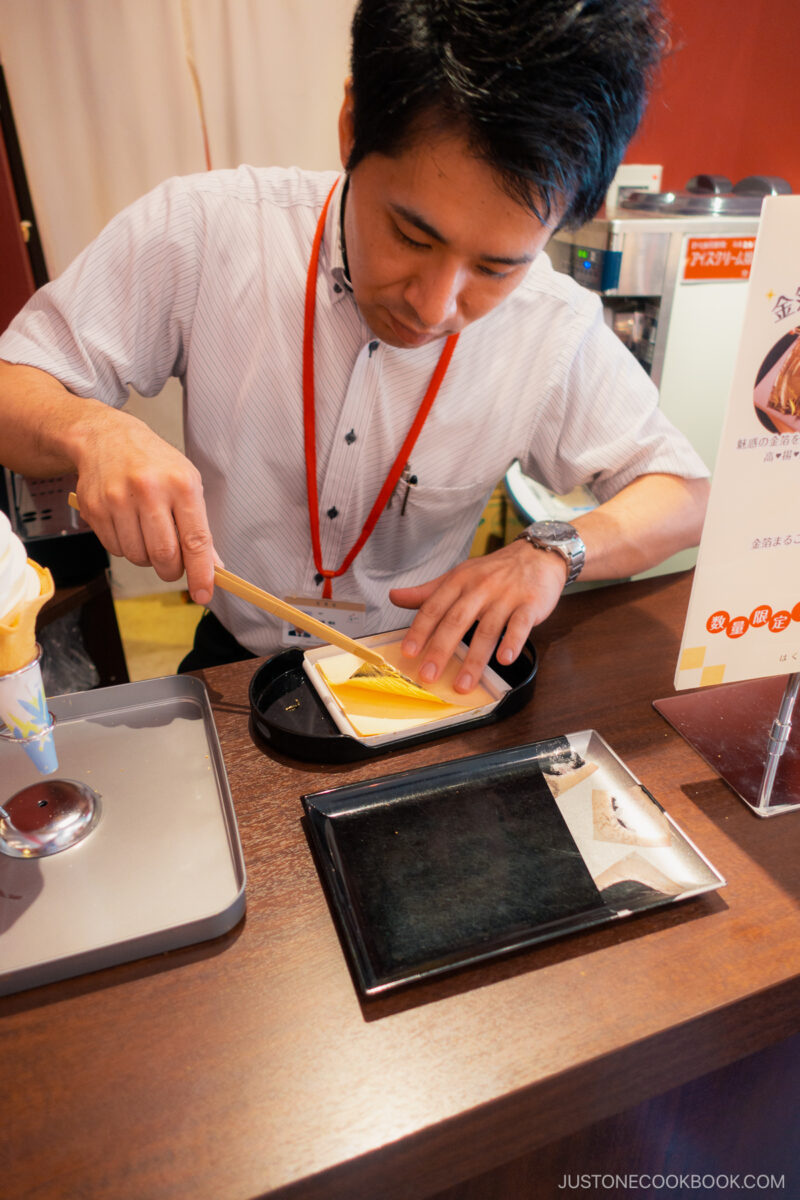
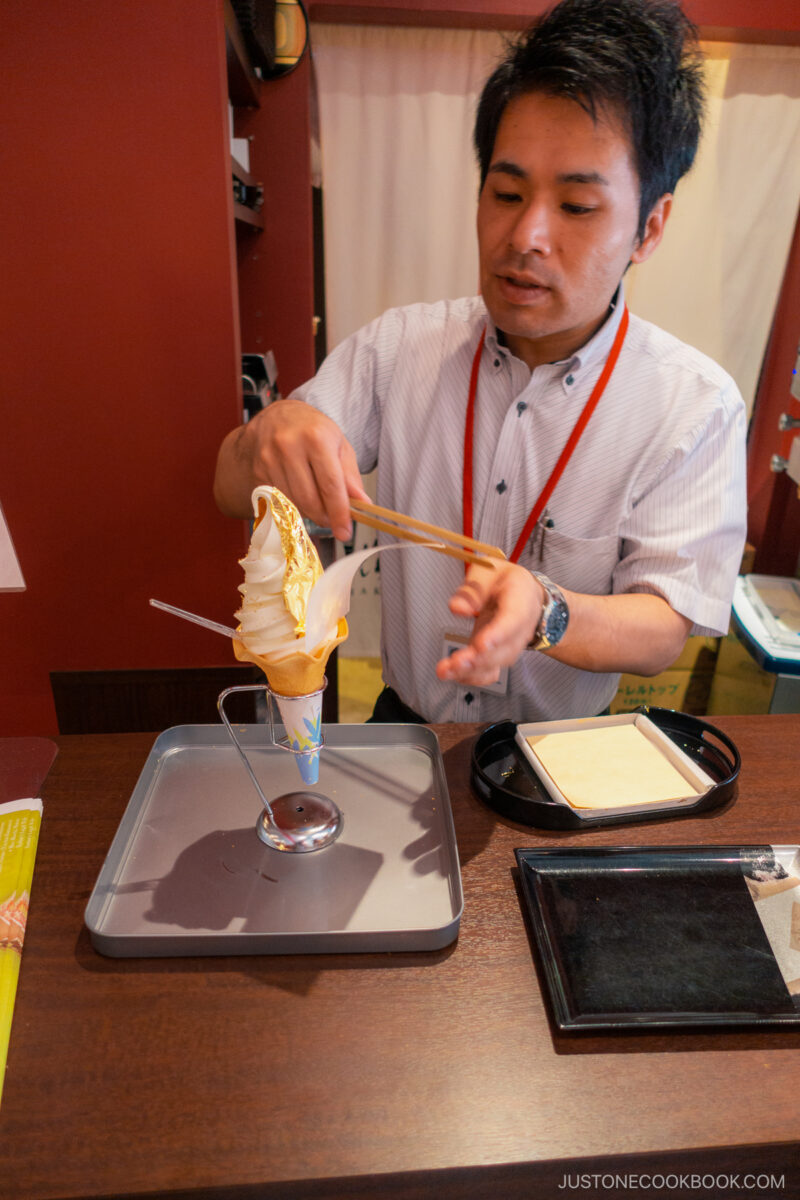
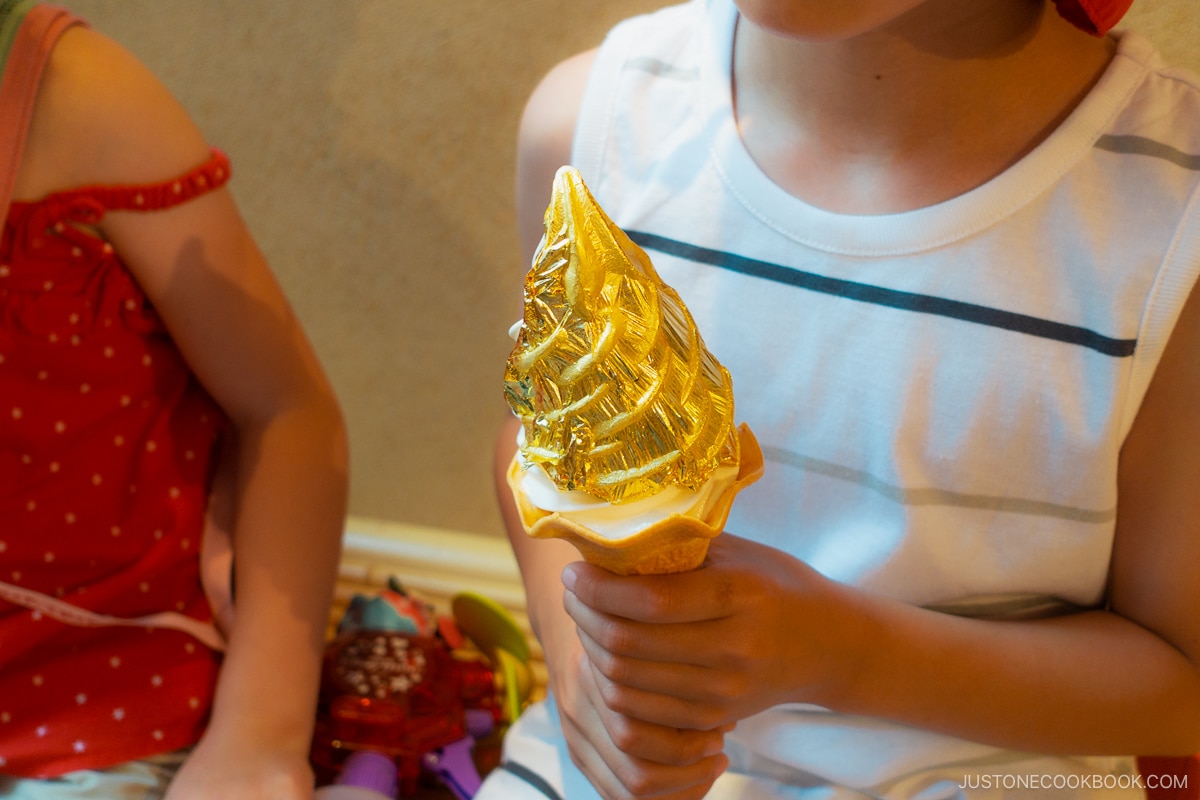
Myoryu-ji Temple – Ninja Dera (妙立寺): The Secrets of a Ninja Temple
Time for more exploration! Jump on to the loop bus at RL5 and get off at RL12 to visit Myoryu-Ji (妙立寺), also known as Ninja Temple. The entrance fee is 1200 yen for adults and just 800 yen for children.
The temple was built in 1585 by Lord Maeda Toshiie and later moved to the current location by his son. Besides being a place of worship for the Kaga Family (founded by Maeda Toshiie), the temple also served as a military outpost. Due to this reason, numerous hidden trap doors, and mechanisms were built to confuse intruders.
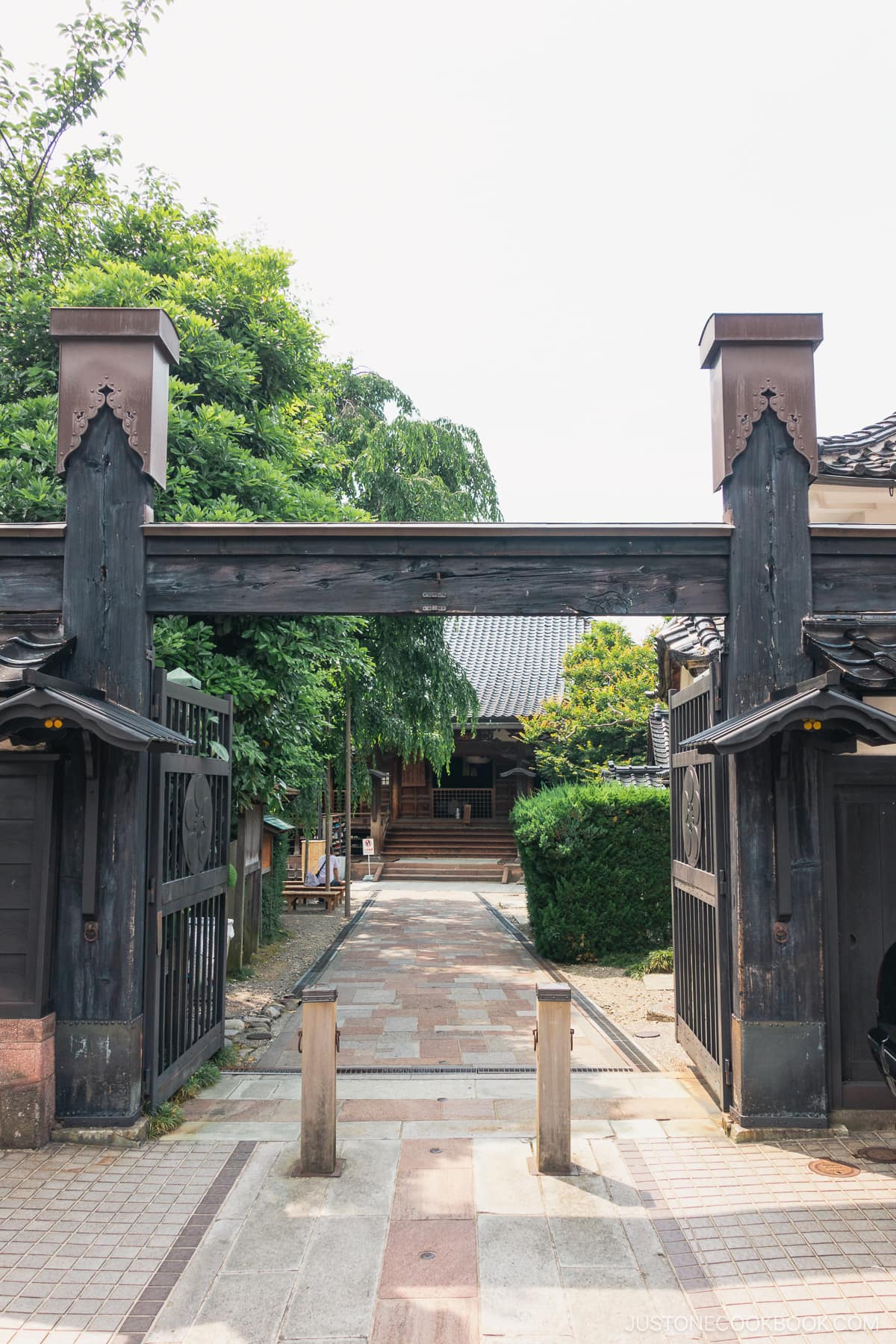
To fully enjoy the Ninja Temple, I recommend making a reservation beforehand because it’s a guided tour and they only accept a certain number of visitors per tour.
Strange Experience Visiting Myoryu-ji Temple
To be completely honest, our visit to the temple was rather unusual and puzzling. When we arrived, there was no reception area or a place to purchase our tickets. We had to walk towards the temple from the main entrance and make a left at the end to find a small white intercom. Through the intercom, we let them know we were there for our appointed time.
Then we were asked to remove our shoes before entering the temple. They collected the admission fee from us at that time and please note that it is cash only. We were asked to show our children’s passports to prove they are elementary school age to qualify for children’s prices. They asked us 3 times (during the phone reservation, on the intercom, and when purchasing the ticket) about the children’s passports.
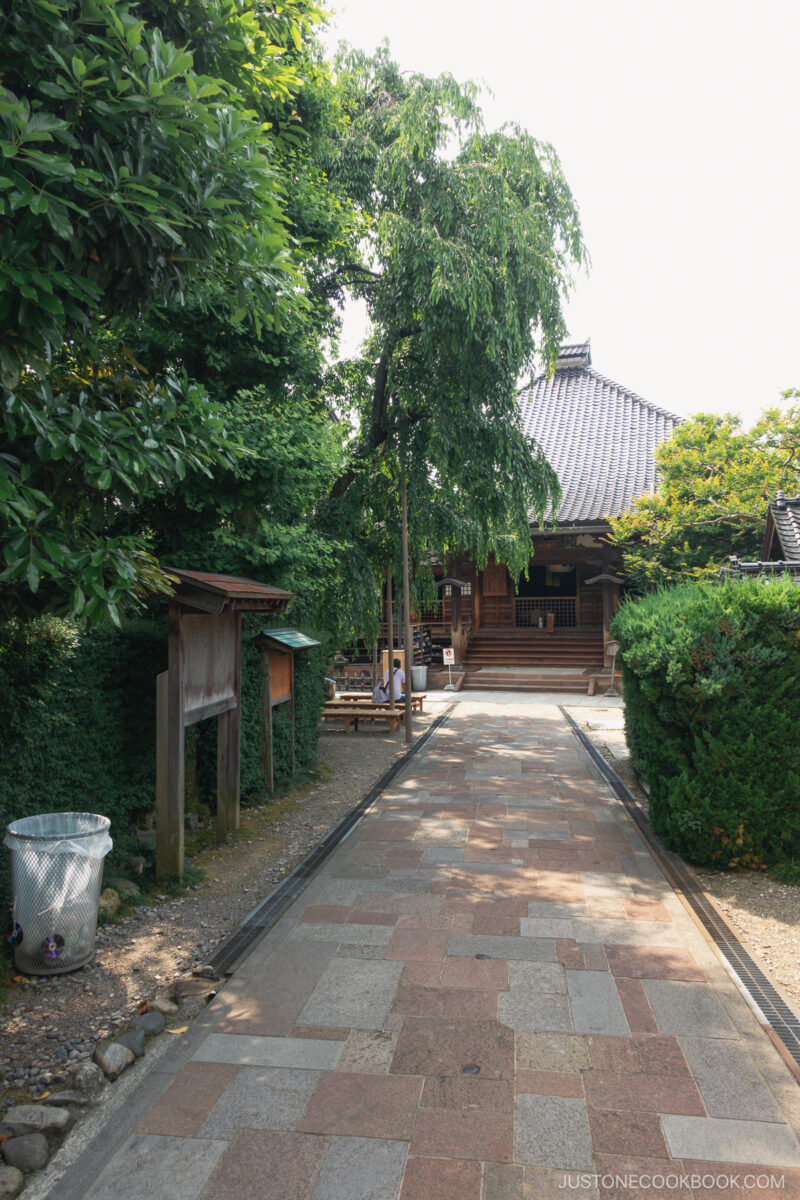
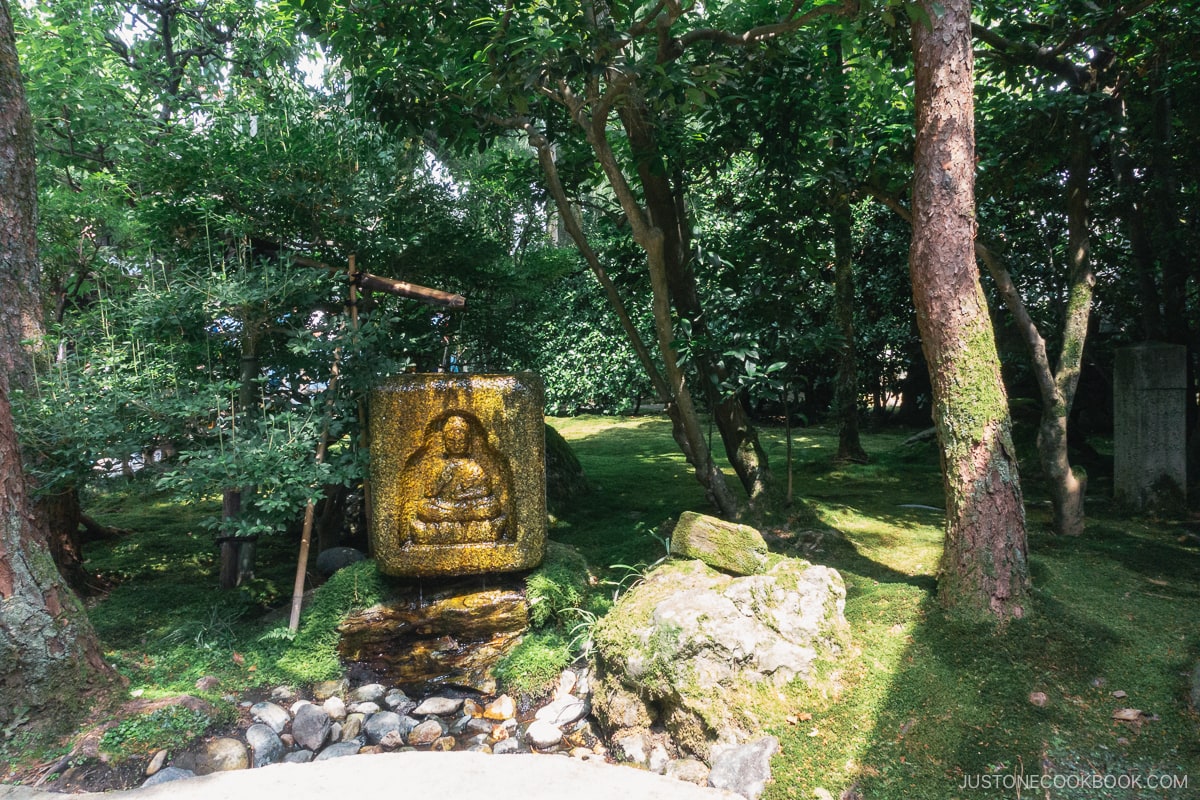
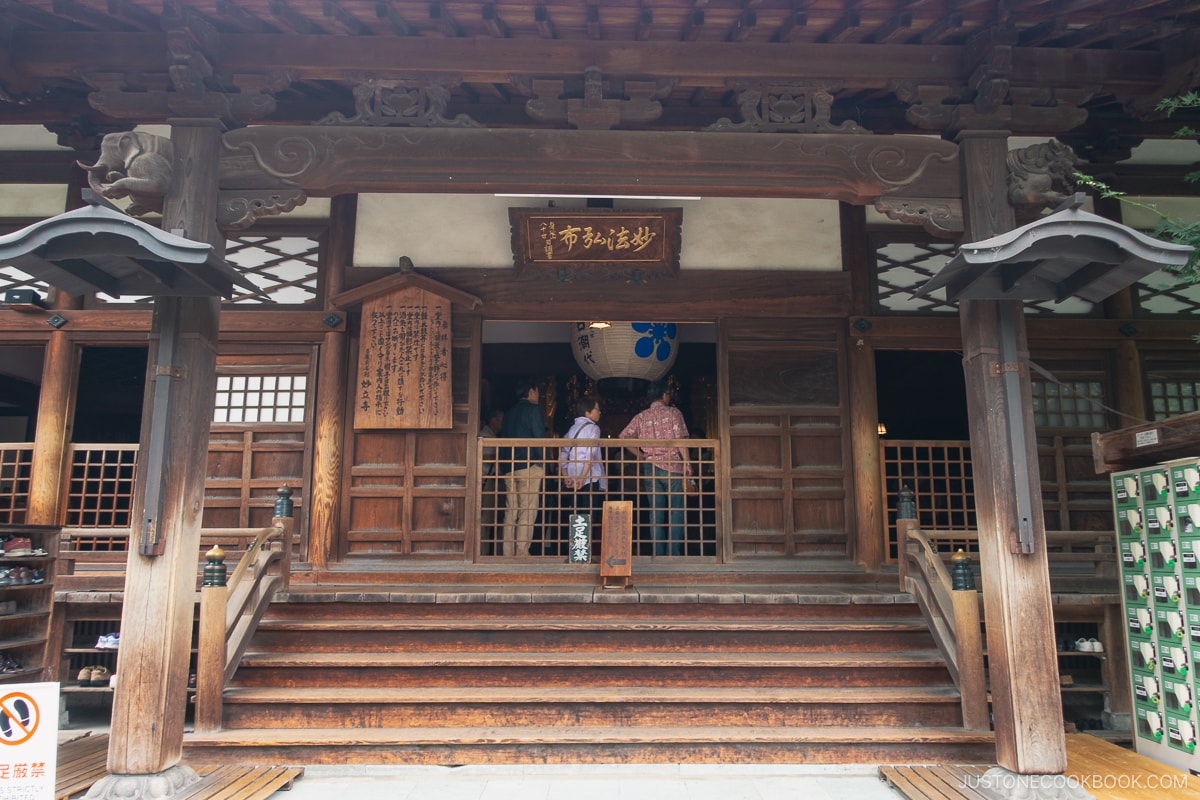
During the tour, photos are not permitted and they specifically mentioned that translation from Japanese to English was not allowed (weird right?).
For each time slot, they break the large group into smaller groups so visitors can fit in the various spots during the tour as some areas are quite small. The tour is in Japanese only but they do give English speakers a binder with the explanation of each interesting spot.
Despite all the unconventional hiccups, our children enjoyed it and it was fascinating to think of why there was a need to build such deceptive mechanisms at the time.
Nishi Chaya – Western Tea House District (西茶屋街)
After visiting Myoryu-ji temple, it’s a short breeze to Nishi Chaya (西茶屋街), the western tea house district. It’s smaller than Higashi Chaya (東茶屋街) but with that comes fewer people. It’s a great opportunity to relax and take some nice pictures.
While exploring Nishi Chaya, don’t forget to visit Nishi Chaya Shiryokan Museum (西茶屋資料館), located along the street. Admission is free and you can step inside and enjoy the ambience of a traditional Chaya.
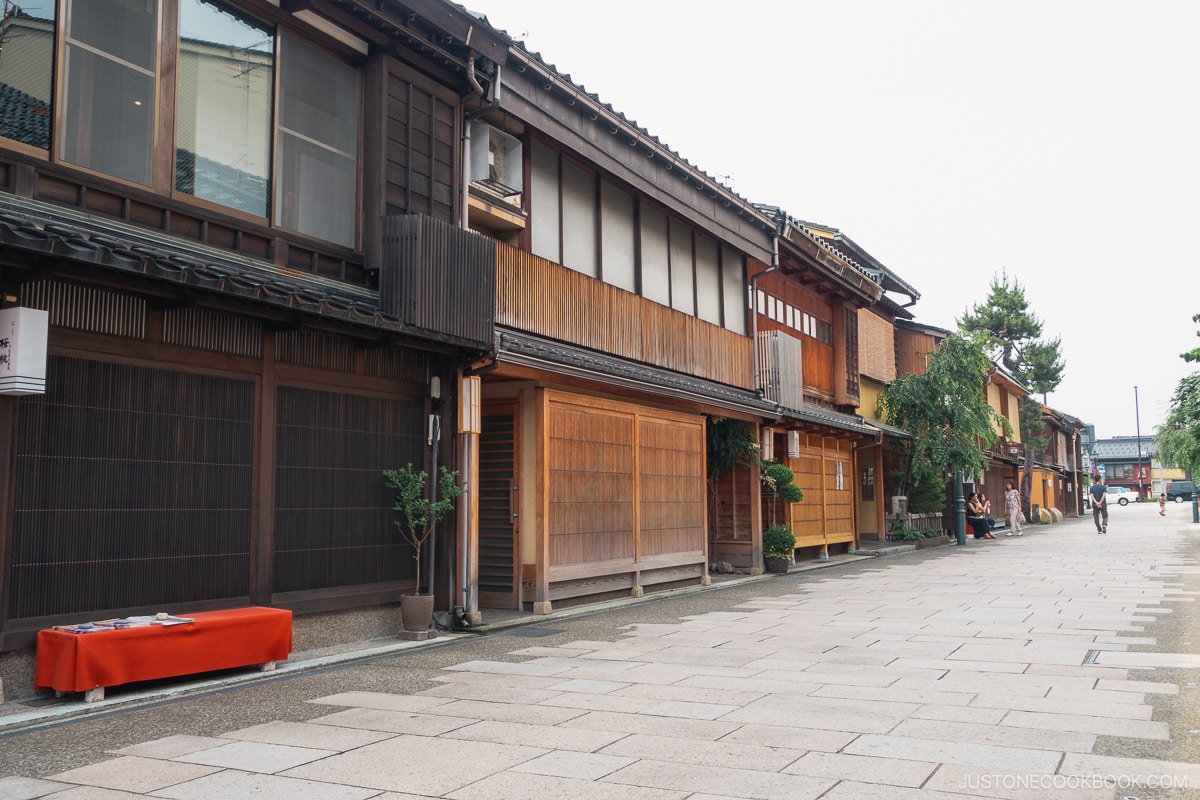
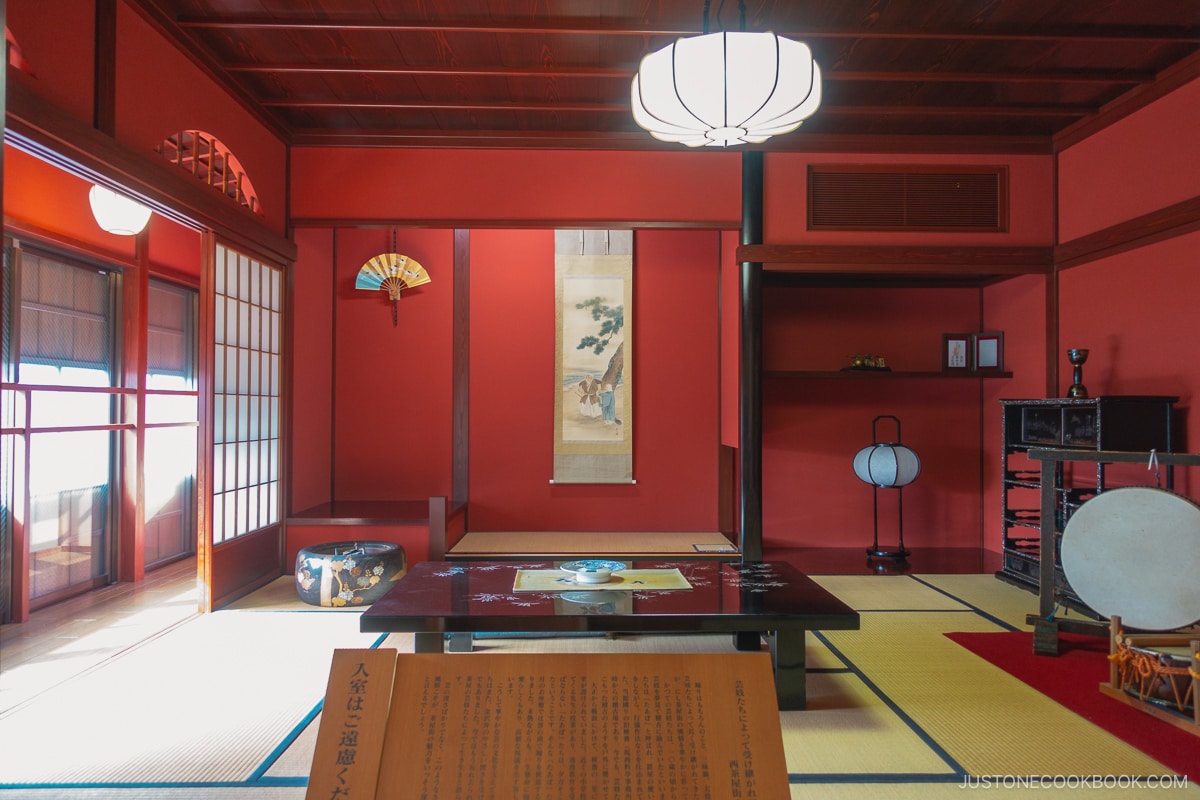
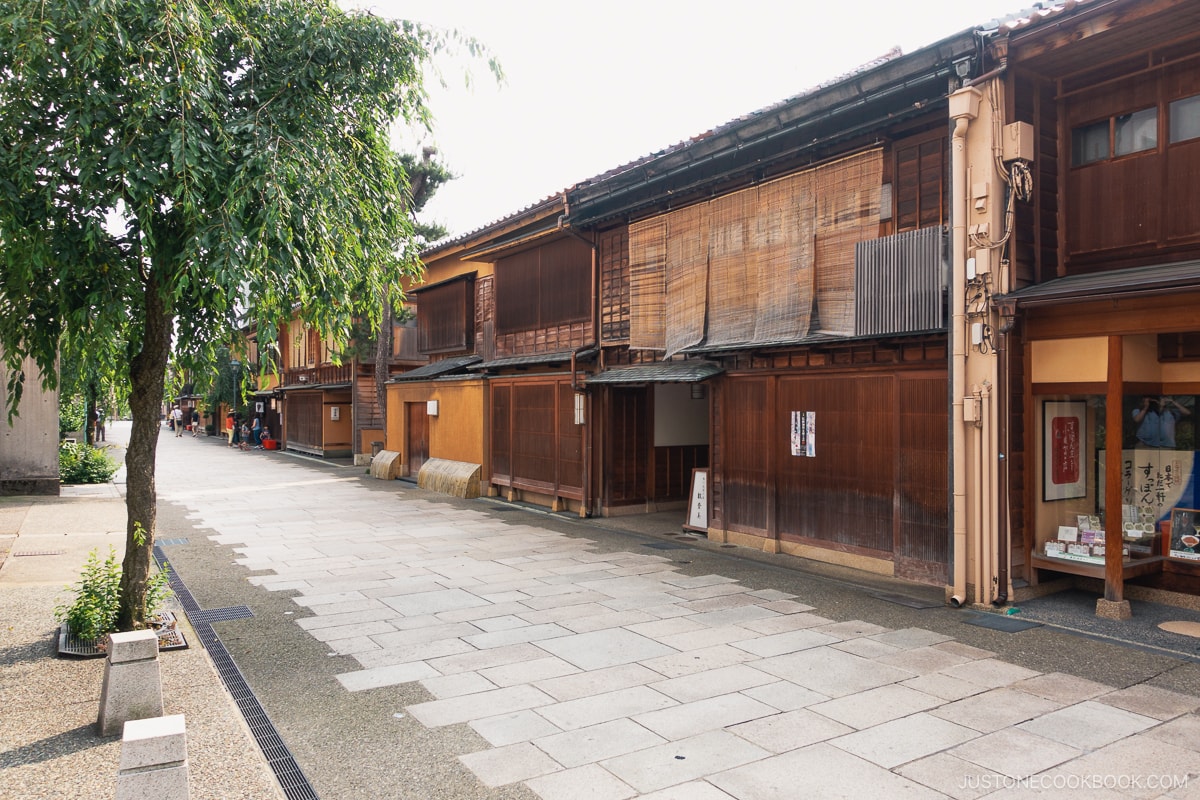
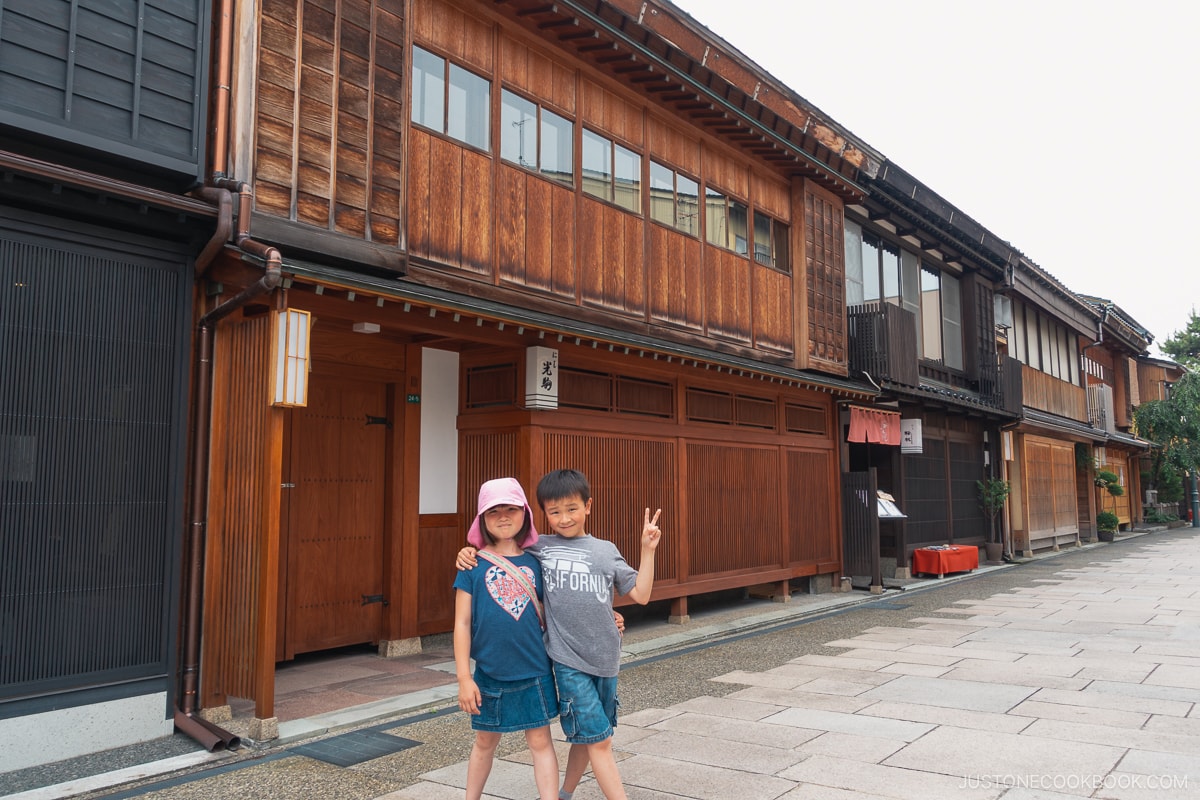
Nagamachi Samurai District (長町武家屋敷跡): Samurai History
After visiting the Chaya, delve further back into the rich history of Kanazawa by visiting Samurai houses in the Nagamachi Samurai District (長町武家屋敷跡). You can easily reach Nagamachi by hopping back on to RL12 and getting off at RL14.
Back in the feudal days, Shogun held the highest authority and ruled the Daimyo from each region. Under each Daimyo are samurai warriors, and in the Nagamachi area, there are several restored Samurai houses. The Onosho Canal (大野庄用水) runs through the Samurai District, which is the oldest canal of Kanazawa. It was an important waterway that carried goods from the harbor to the castle town.
Of the samurai’s houses, the one we visited was the Nomura-ke (Nomura Family’s Residence, 野村家). There’s an entrance fee of 500 yen for adults, 400 yen for high school students and 250 yen for younger children (as of 2023).
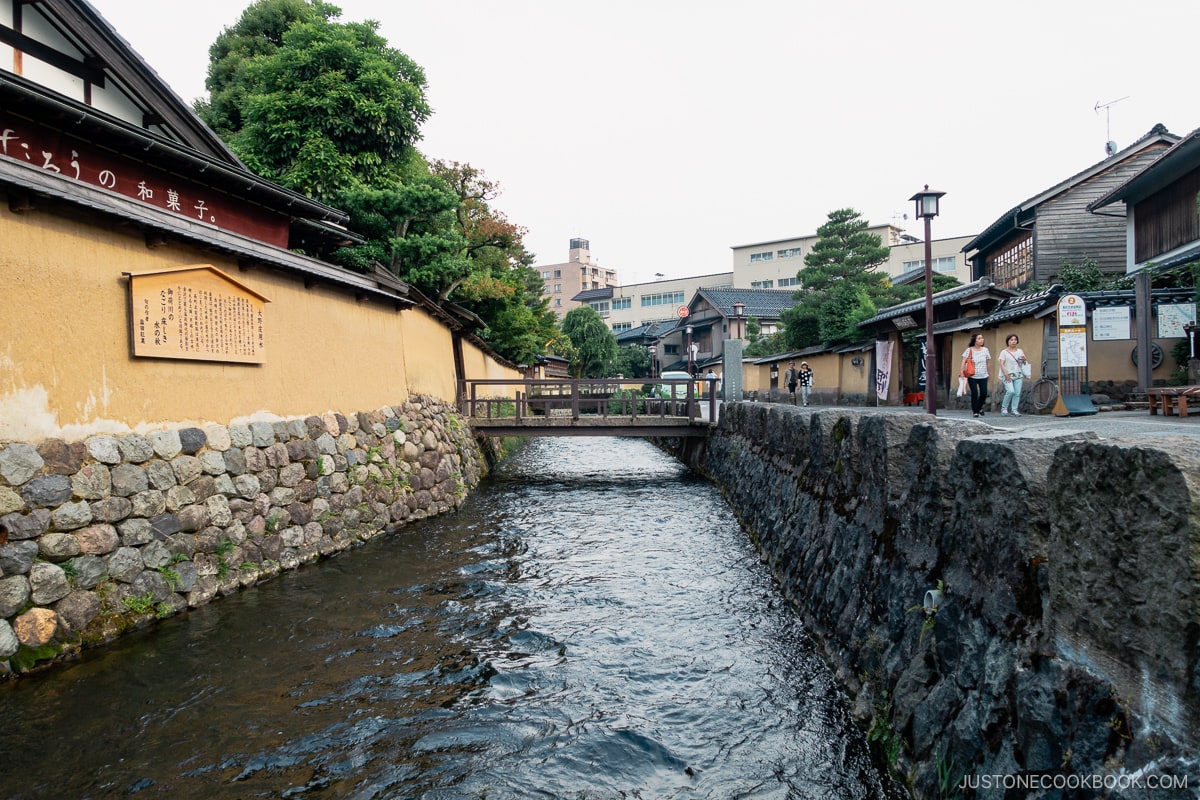
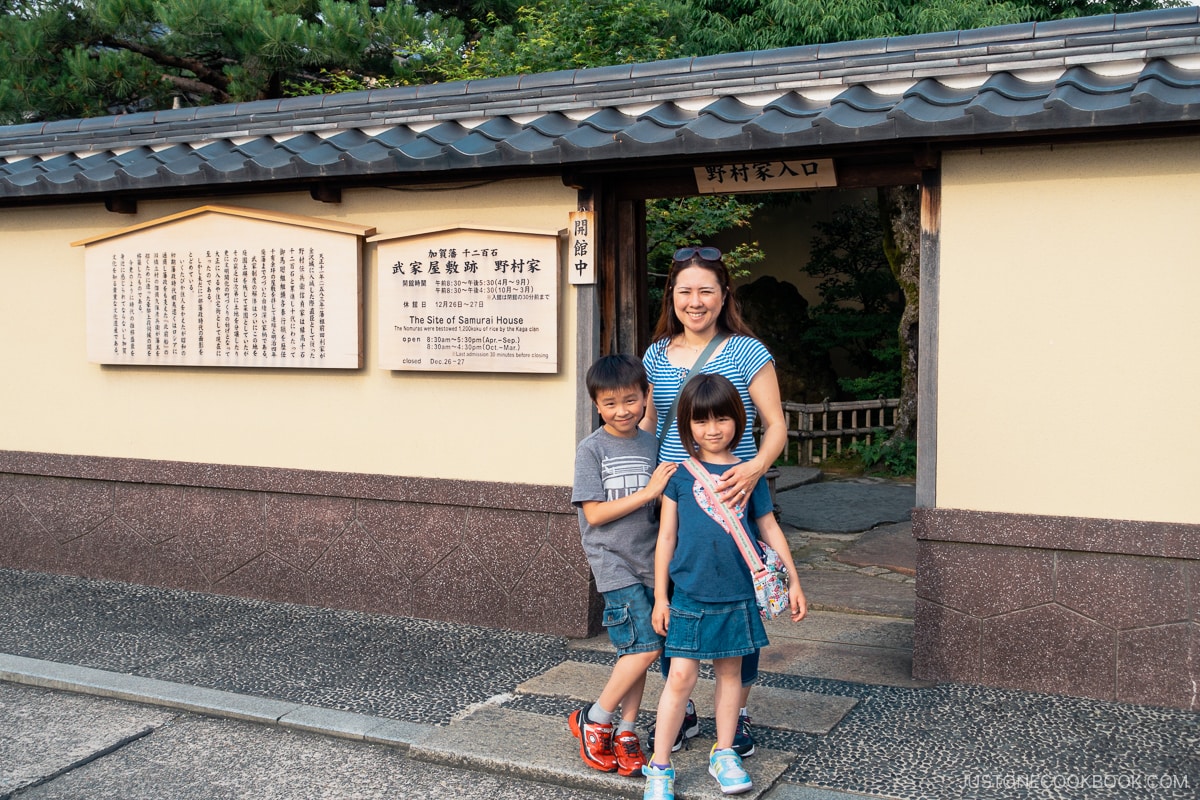
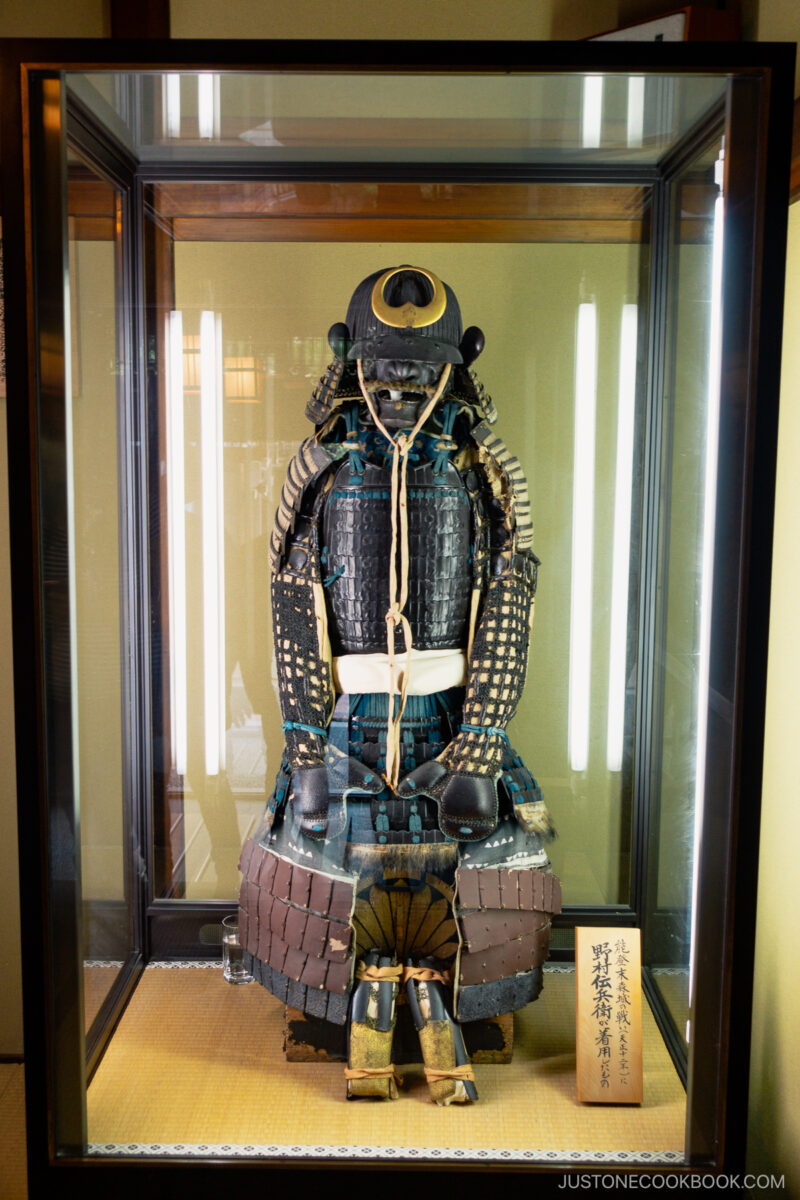
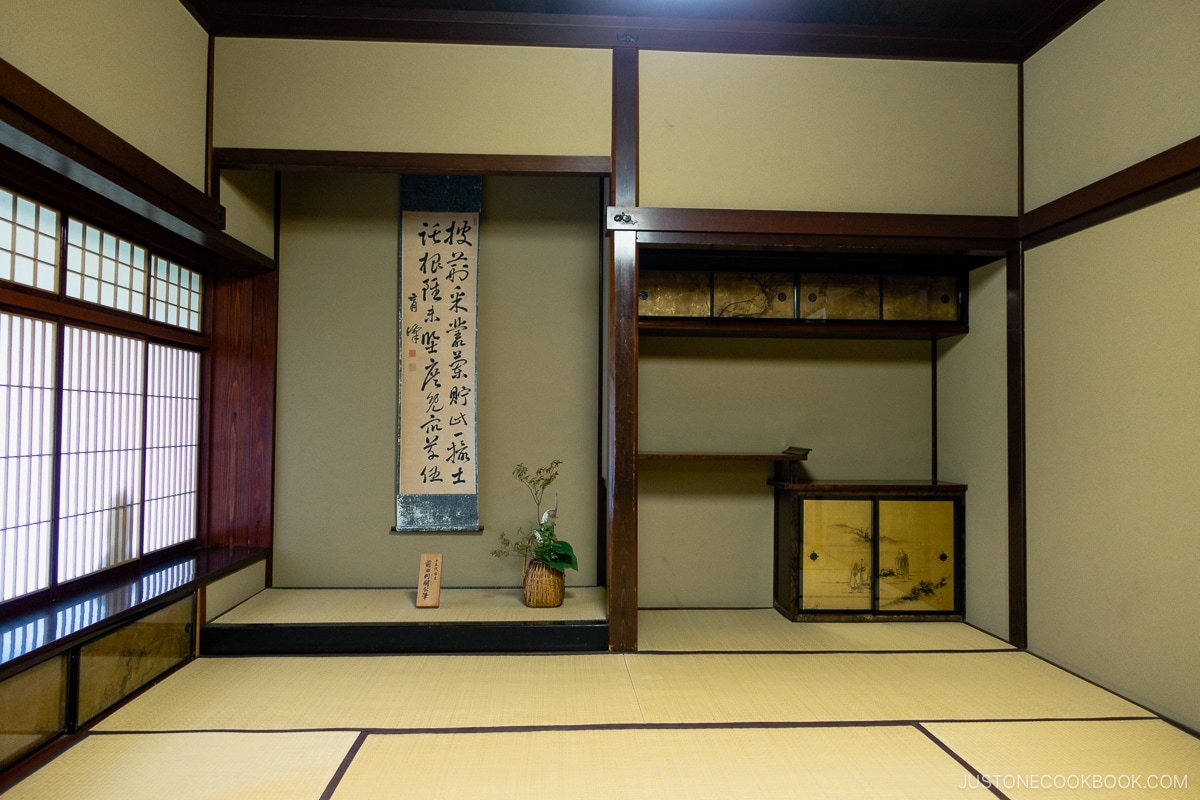
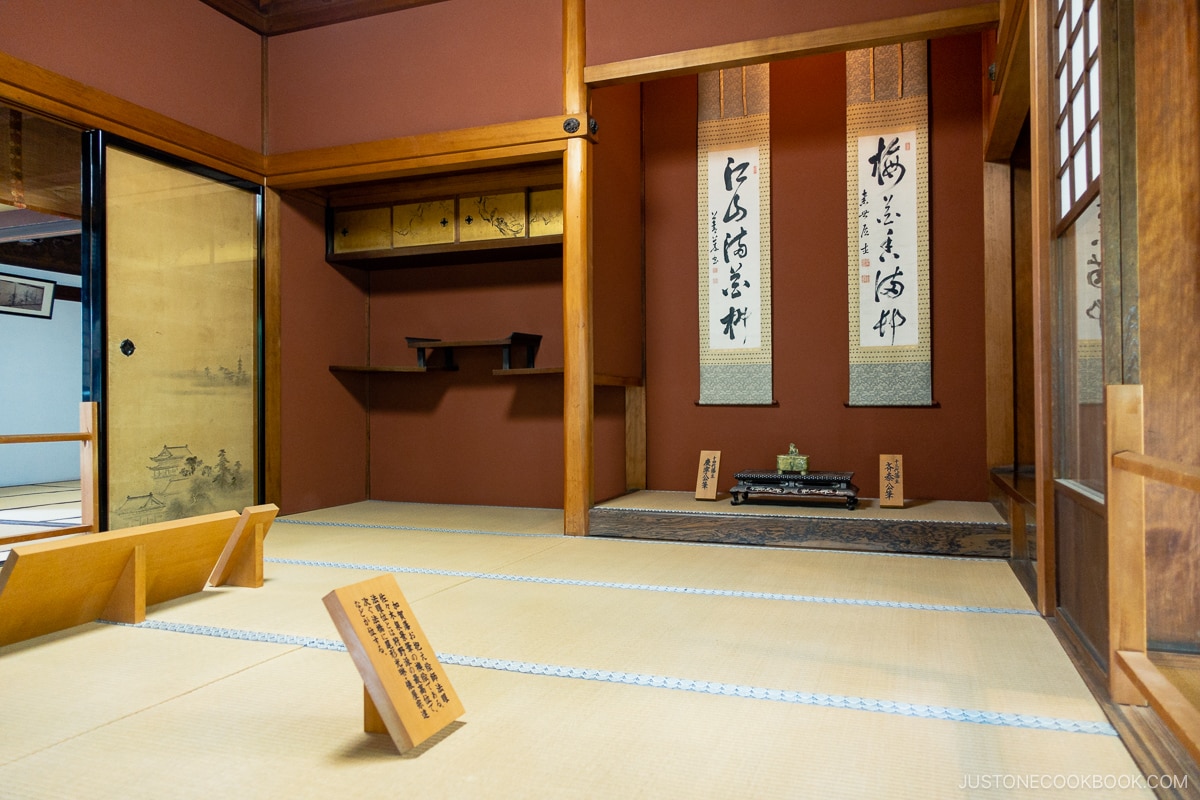
Inside the house, you can walk around and admire the Edo artifacts of the Nomura family, who lived here for ten generations. The ceilings are made of Japanese cypress and the exquisite paintings on the sliding door panels were created by Maeda’s painter. They showcase the artistic and architectural beauty of that time.
The Nomura house also has a beautiful garden that was ranked one of the best in Japan by the Michelin Guide. The garden is small but features many characteristics of Japanese gardens, including a 400-year-old Japanese bayberry, a waterfall and pond, and various stone features like bridges and lanterns.
As you walk around between the mud walls of Nagamachi and tour Nomura House, you can imagine the life of a samurai during that time.
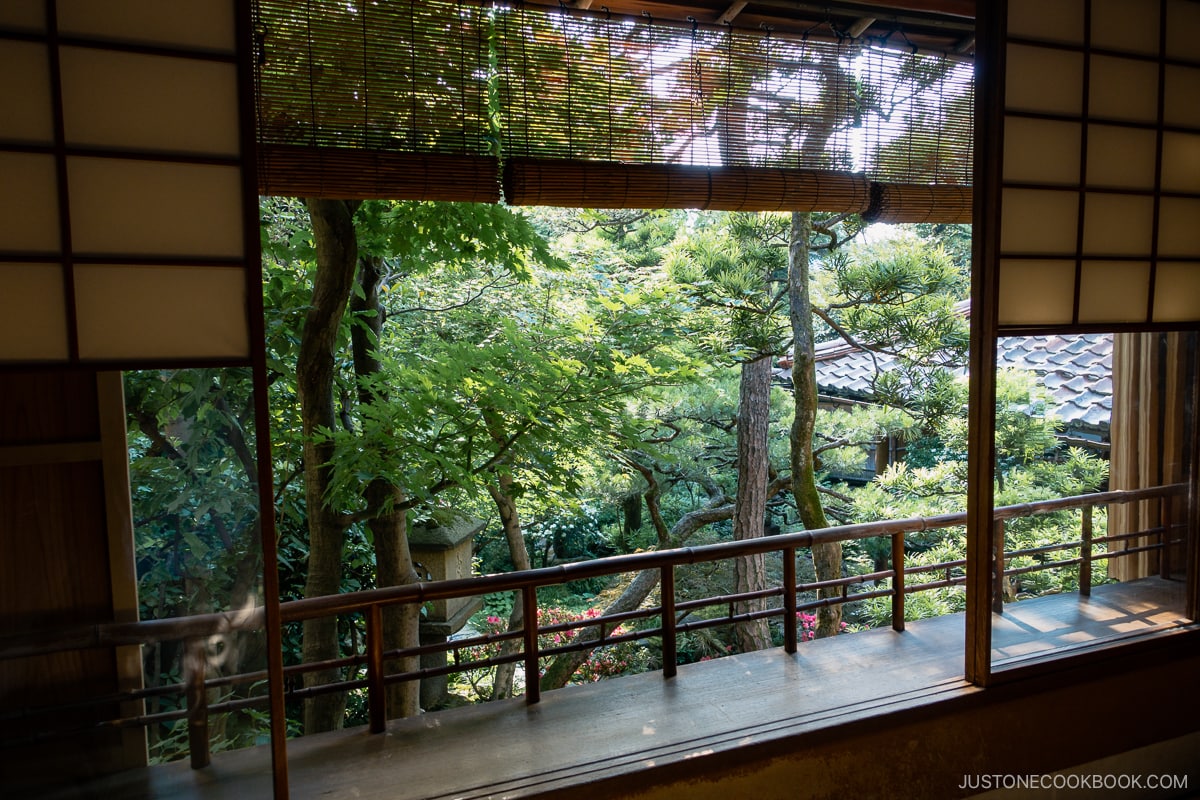
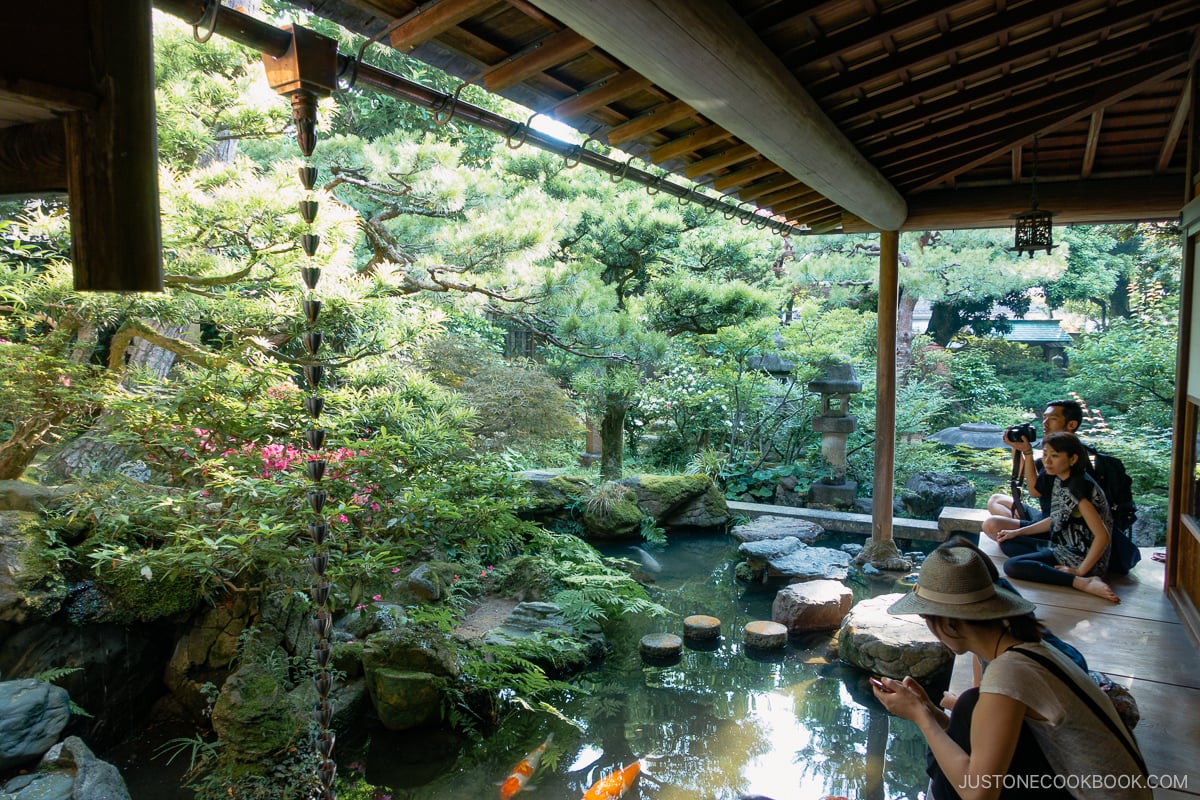
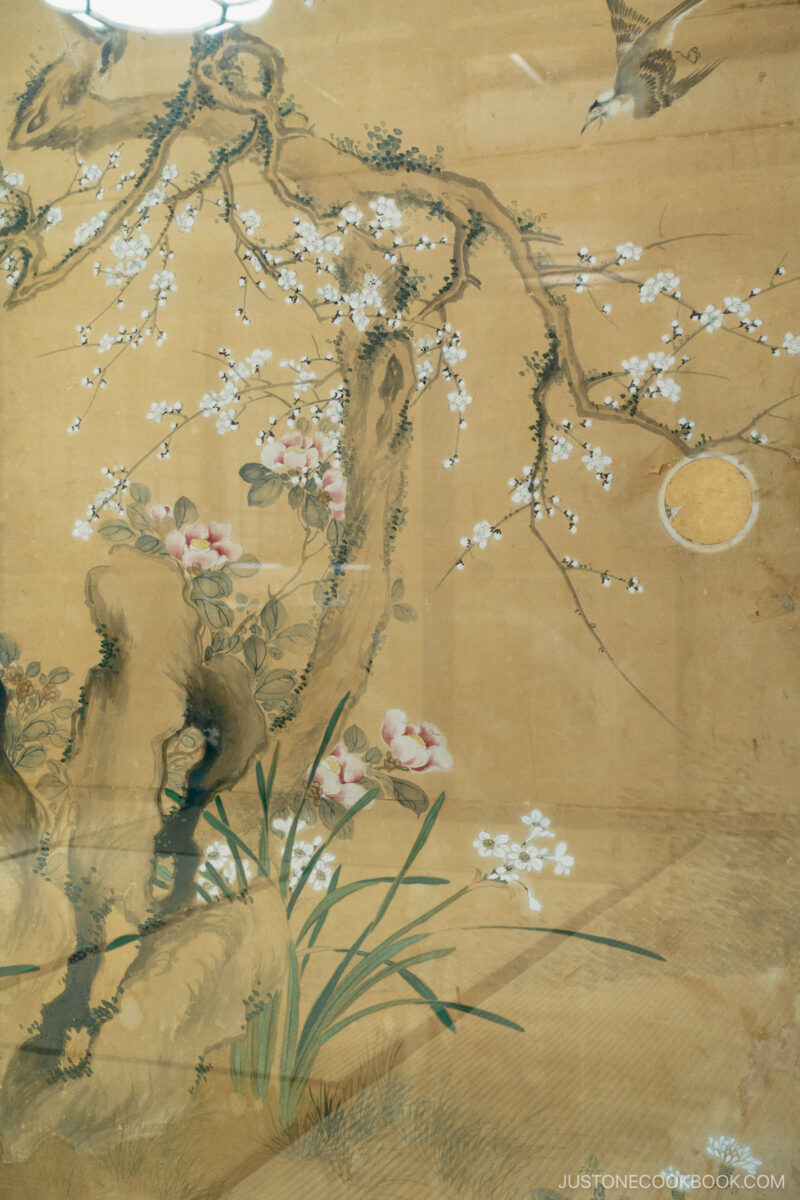
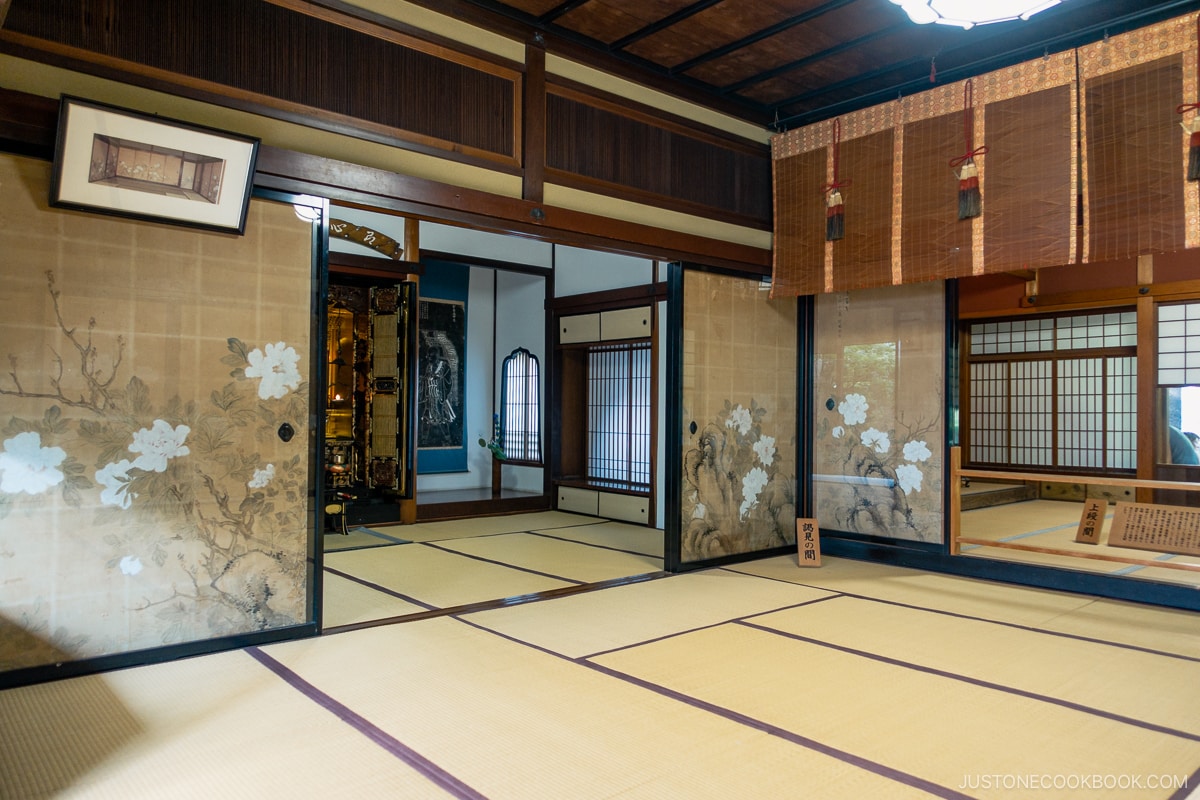
Oyama Shrine (尾山神社): Where East meets West
You can either walk to the Oyama Shrine (尾山神社) or take the loop bus at RL14 and get off at RL15 and walk backward.
Oyama Shrine is known for its distinctive gate, which was designed by a Dutch architect back in 1875, combining a mixture of Japanese, European, and Chinese architectural influences. It’s also free to enter and explore!
There’s also a beautiful garden with ponds and bridges on site that dates back to the late 1500s. Oyama Shrine holds special significance as it’s dedicated to Maeda Toshiie. You can see a large statue of him as well as his wife’s image carved into a stone on the grounds.
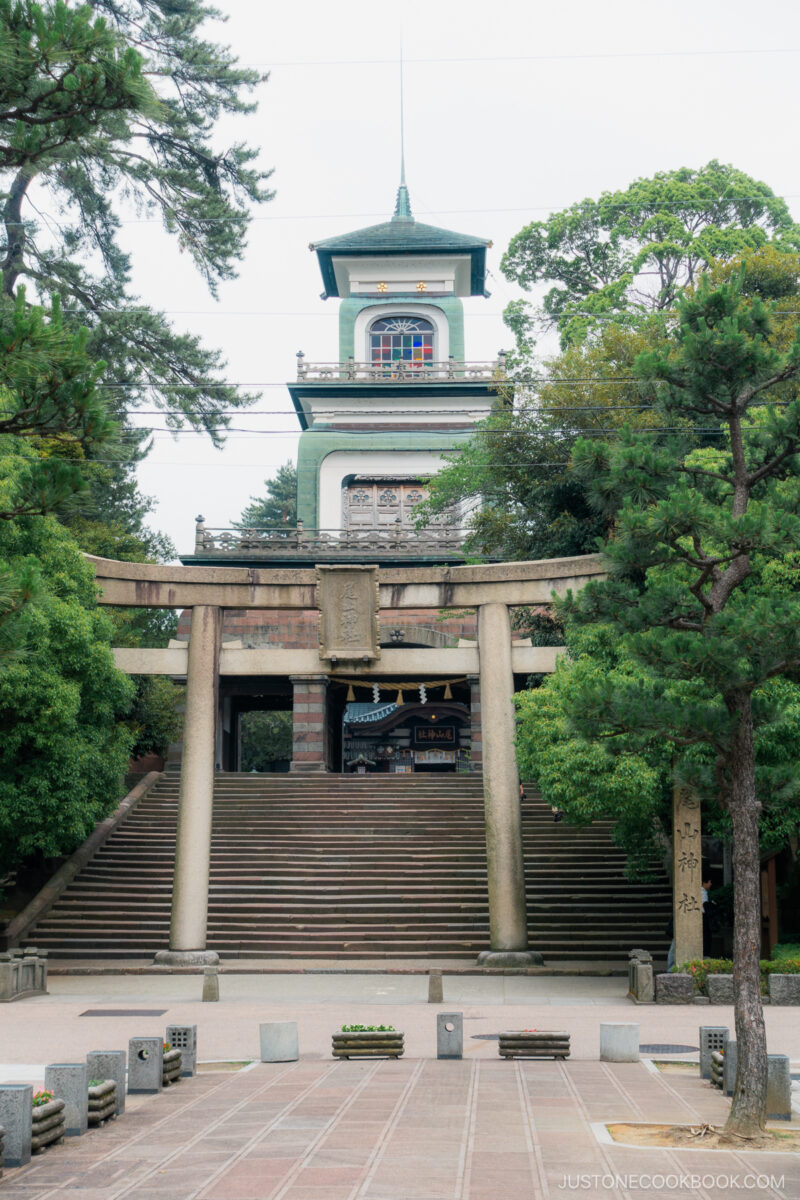
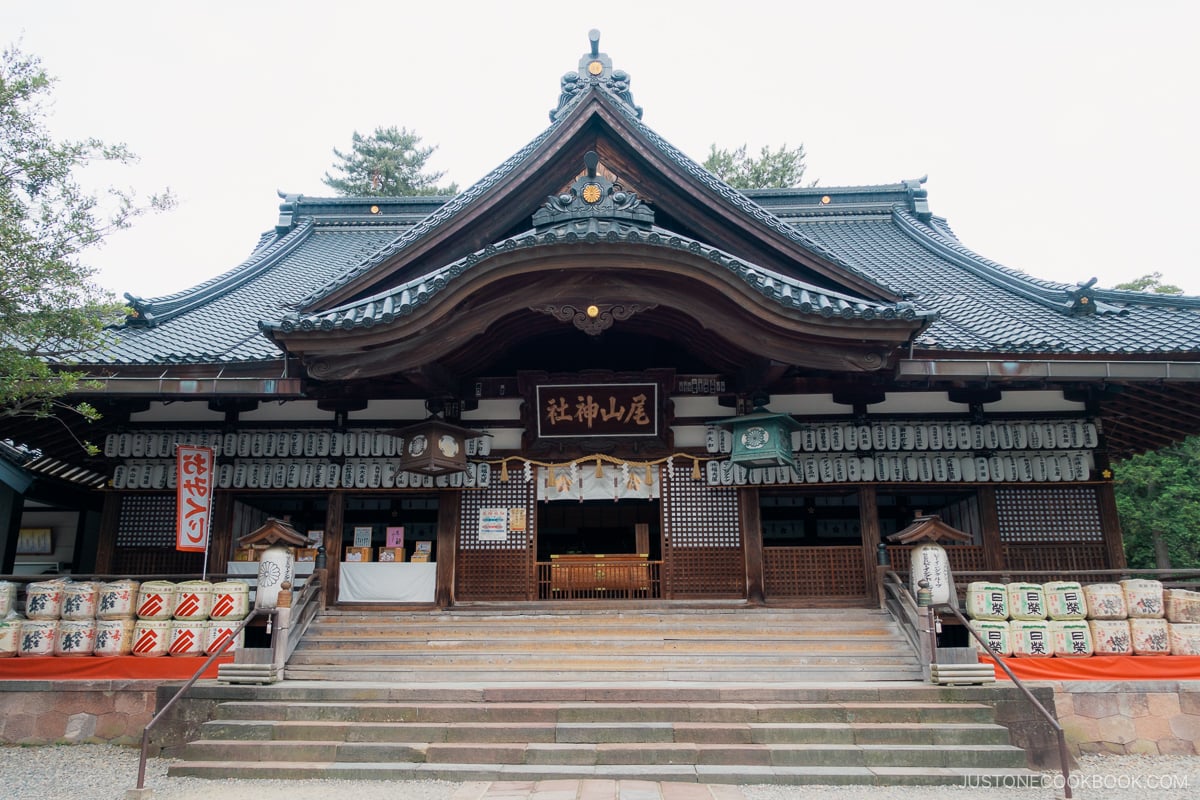
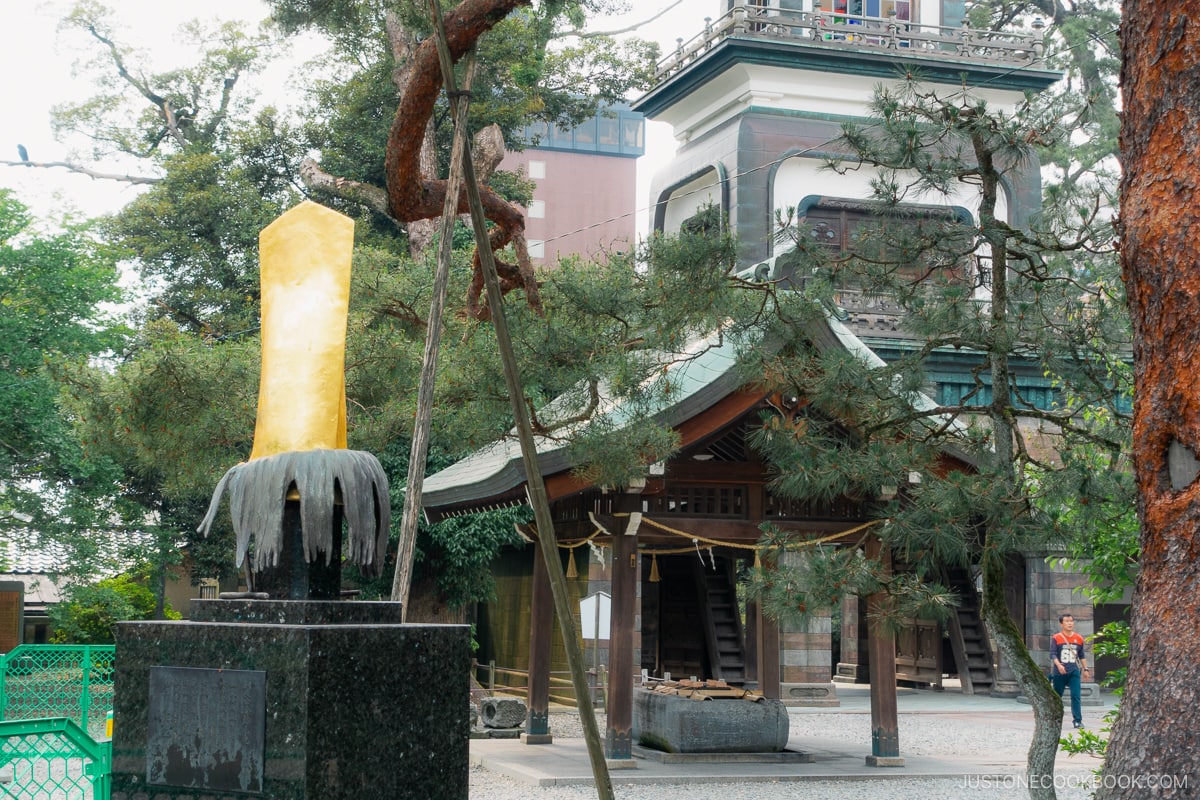
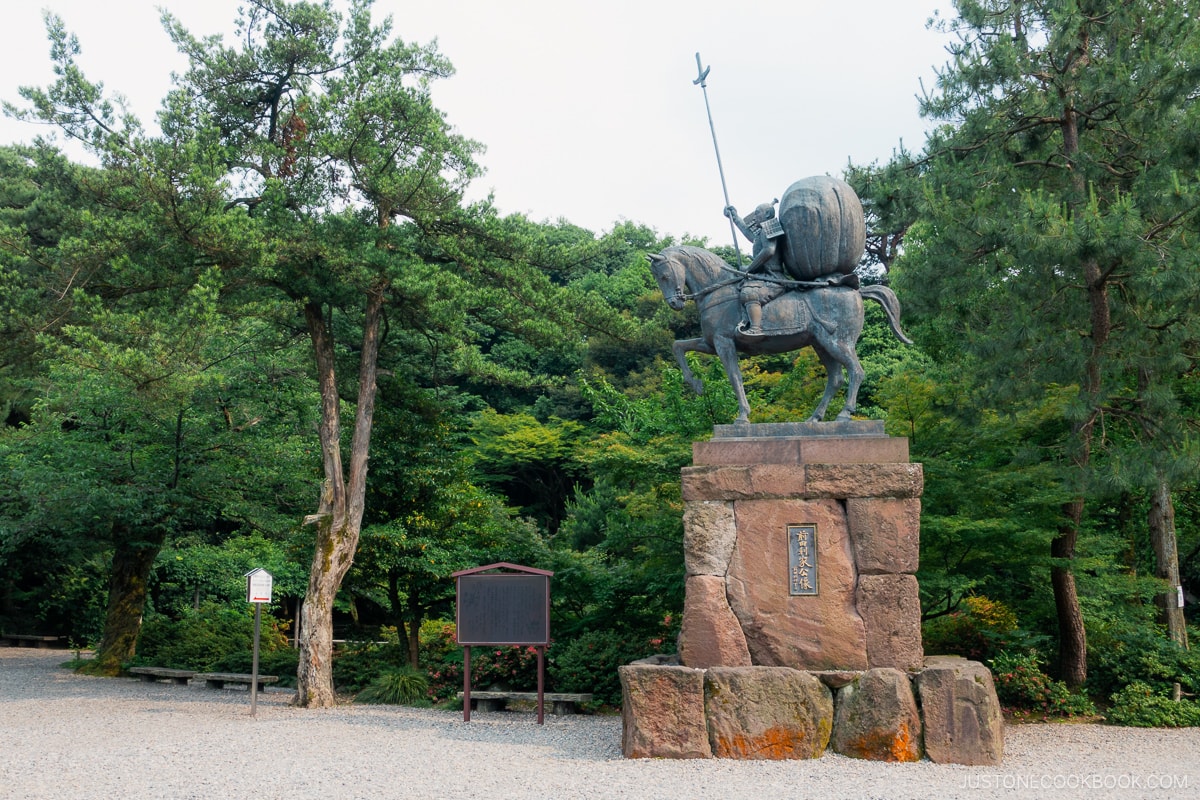
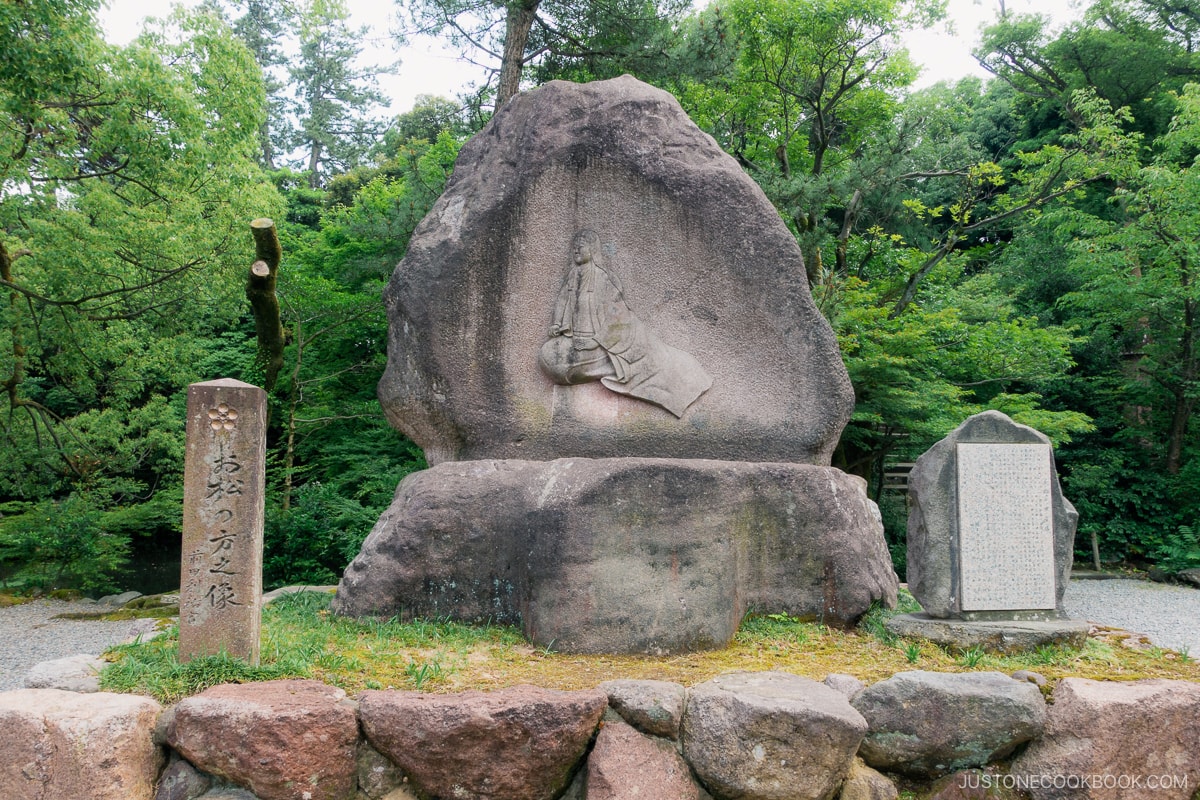
Staying and Eating in Kanazawa
Hotel MyStays
In Japan, when you book hotels, there are usually 3 options:
- Room Only
- Room and breakfast
- Room and two meals (breakfast and dinner)
Due to our hectic travel and touring schedule and wanting to try different restaurants, we booked a room only at Hotel MyStays in Kanazawa. At the time, it was newly remodeled so the rooms are modern and clean, and it also comes with free Wifi. We booked a room for four so they set up 4 individual beds for us.
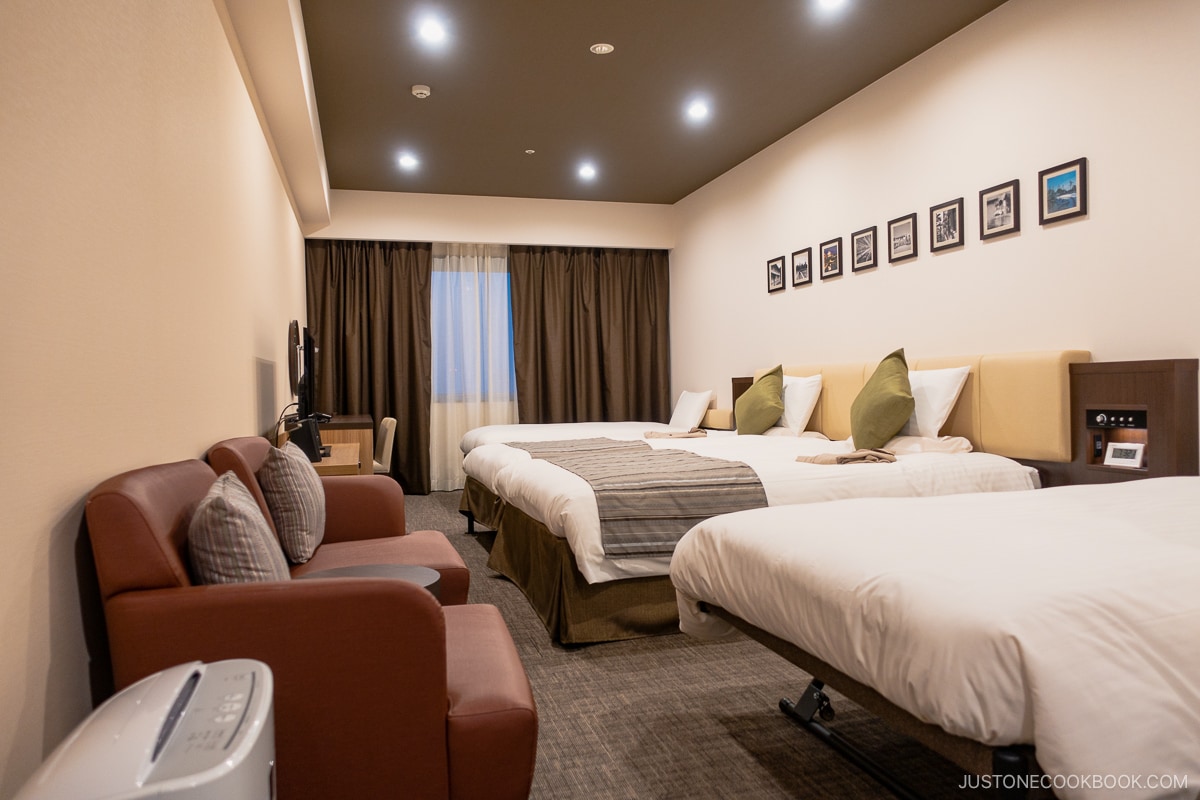
Compared to US hotels, Japanese hotels provide many amenities as standard, including toothbrushes, shaving kits, PJs, and slippers. Hotel MyStay has large drawers full of different face wash and bath salt on the 1st floor for you to enjoy, making it a comfortable and convenient option for us.
The hotel was a short walk from Kanazawa station, and you could utilize the underground walkways to navigate the city and cross the larger intersections that were above ground.
Kuroya (くろ屋): A Memorable Izakaya Experience
Since Kanazawa is known for its seafood, we ate at a local izakaya close to the station. We called the top-ranked izakaya one by one. Unfortunately, most were fully booked. Luckily, we were finally able to reserve a table at Kuroya. If there is an izakaya you want to eat at, I recommend calling a few days before.
So how was Kuorya? It was awesome! The menu featured a wide range of local fish and Kaga vegetables, mostly from 400-800 yen each (see the menu). I highly recommend this place as it’s not far from the station, and every dish was excellent.
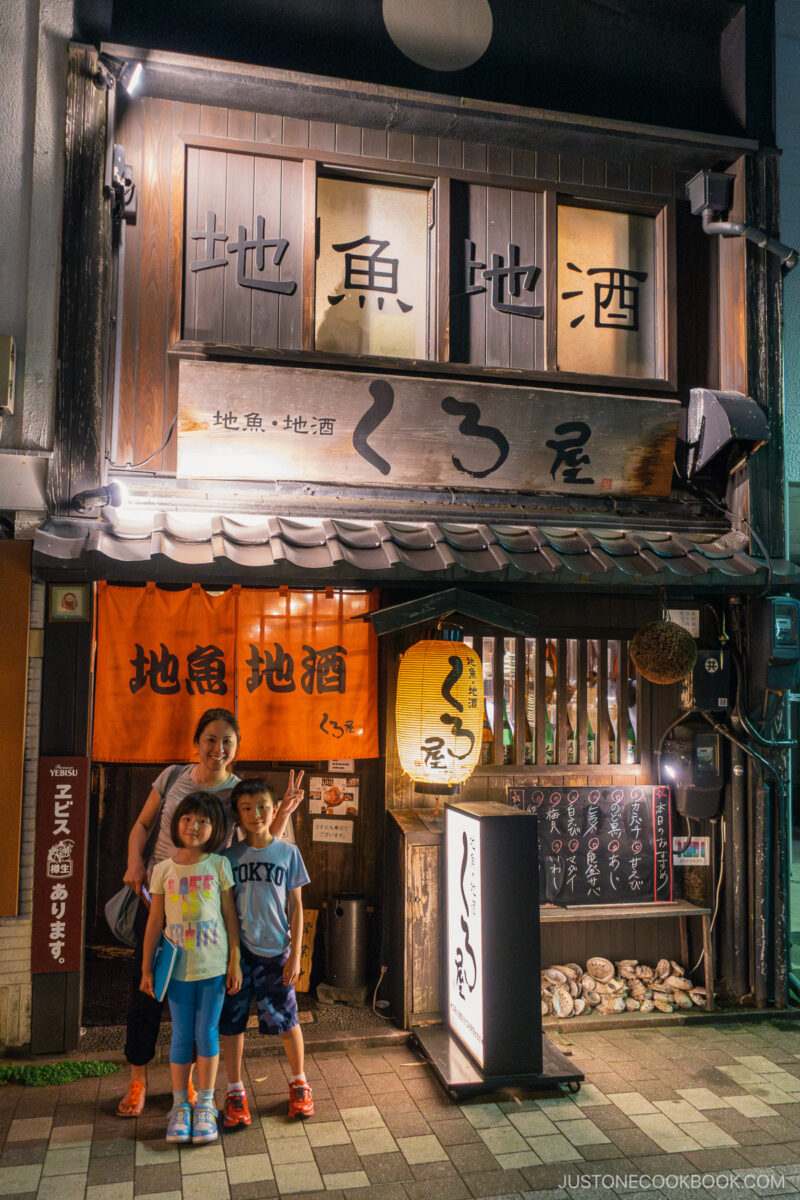
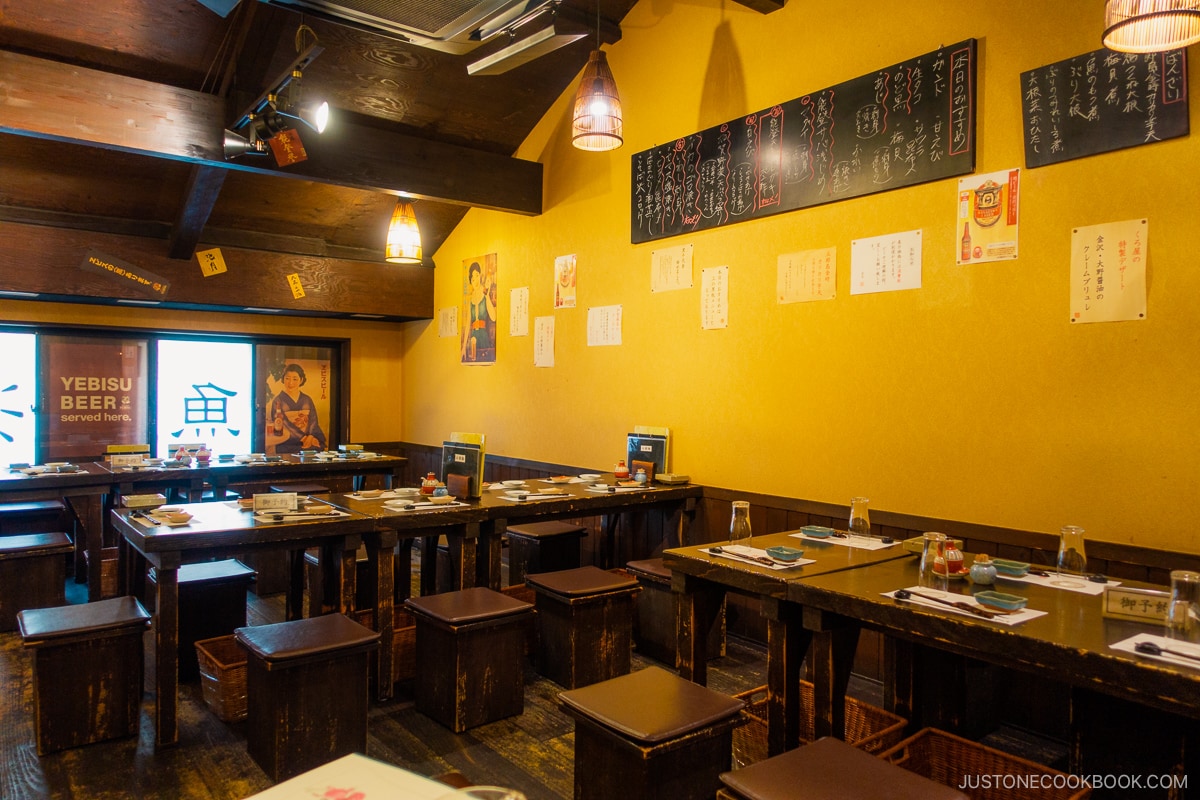
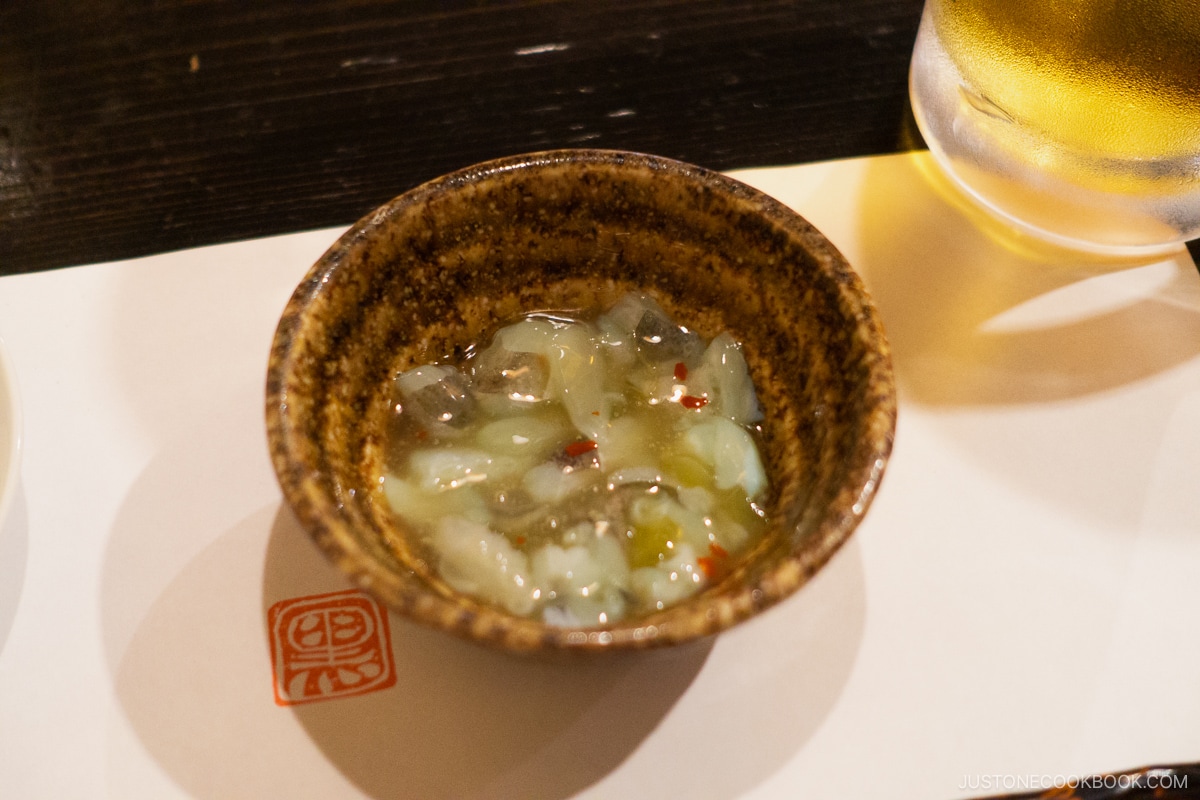
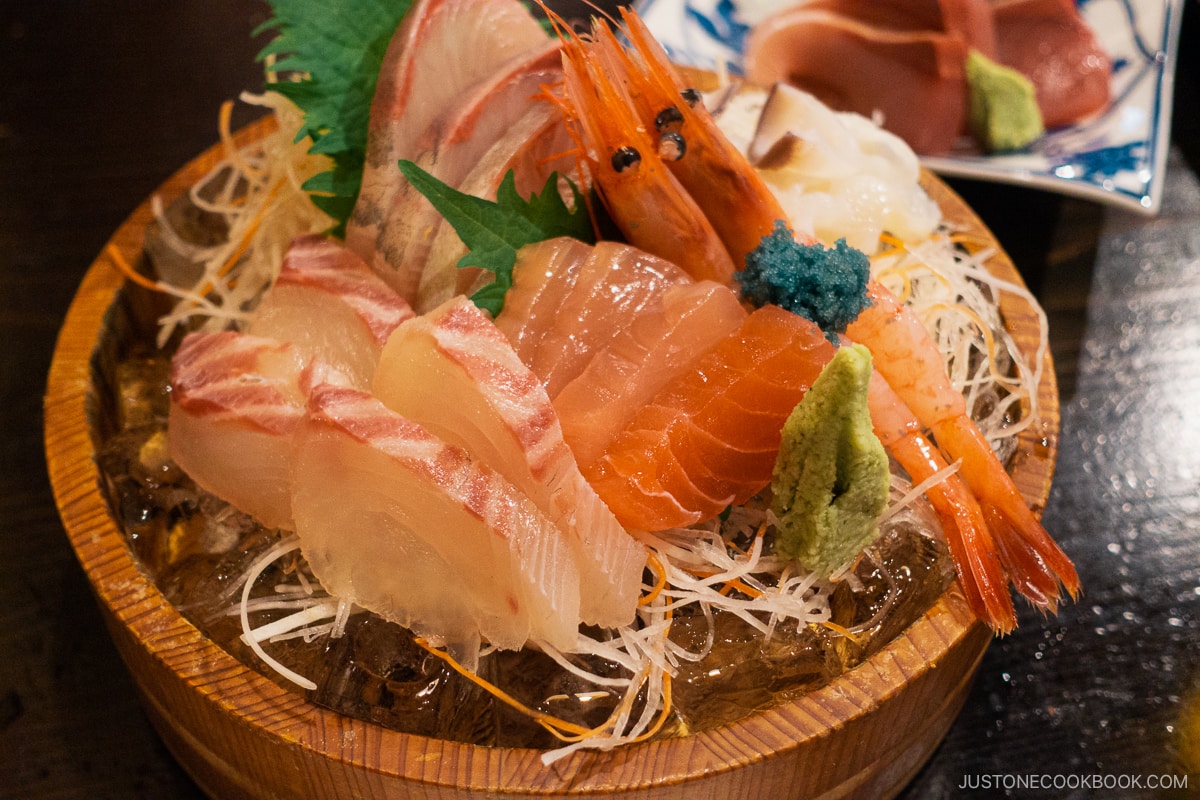
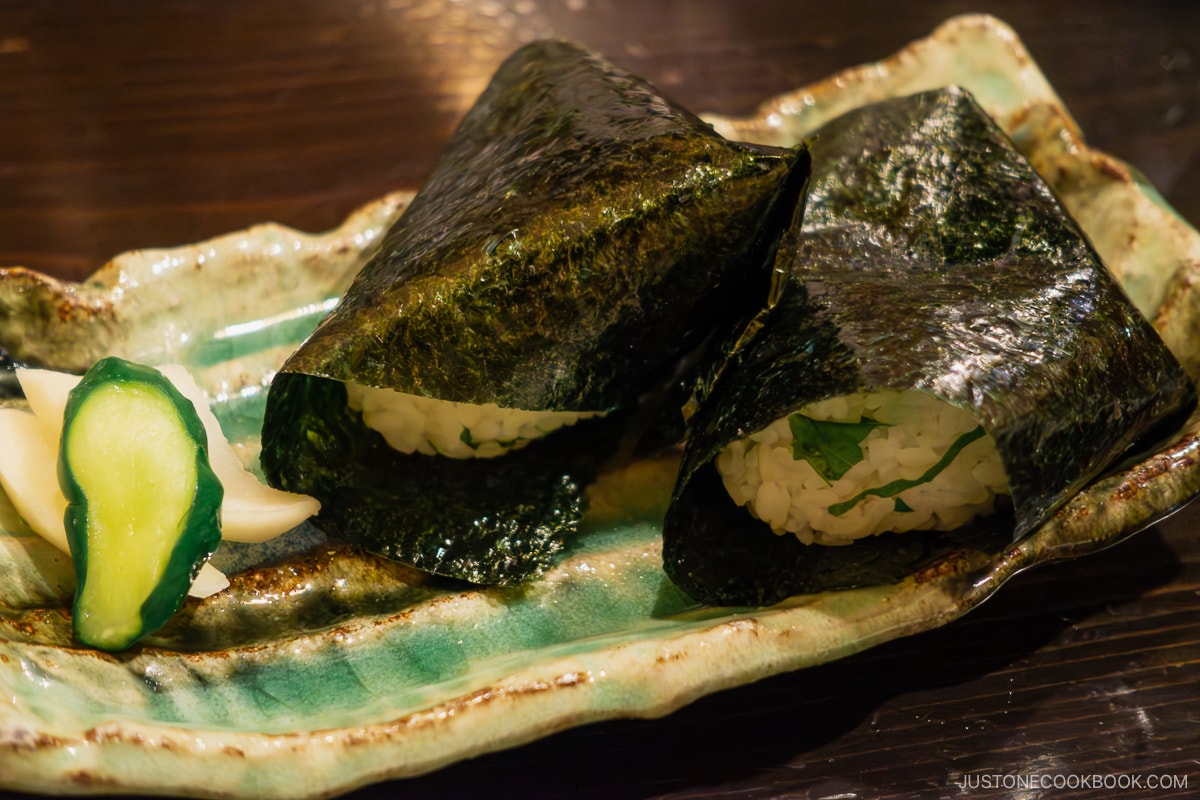
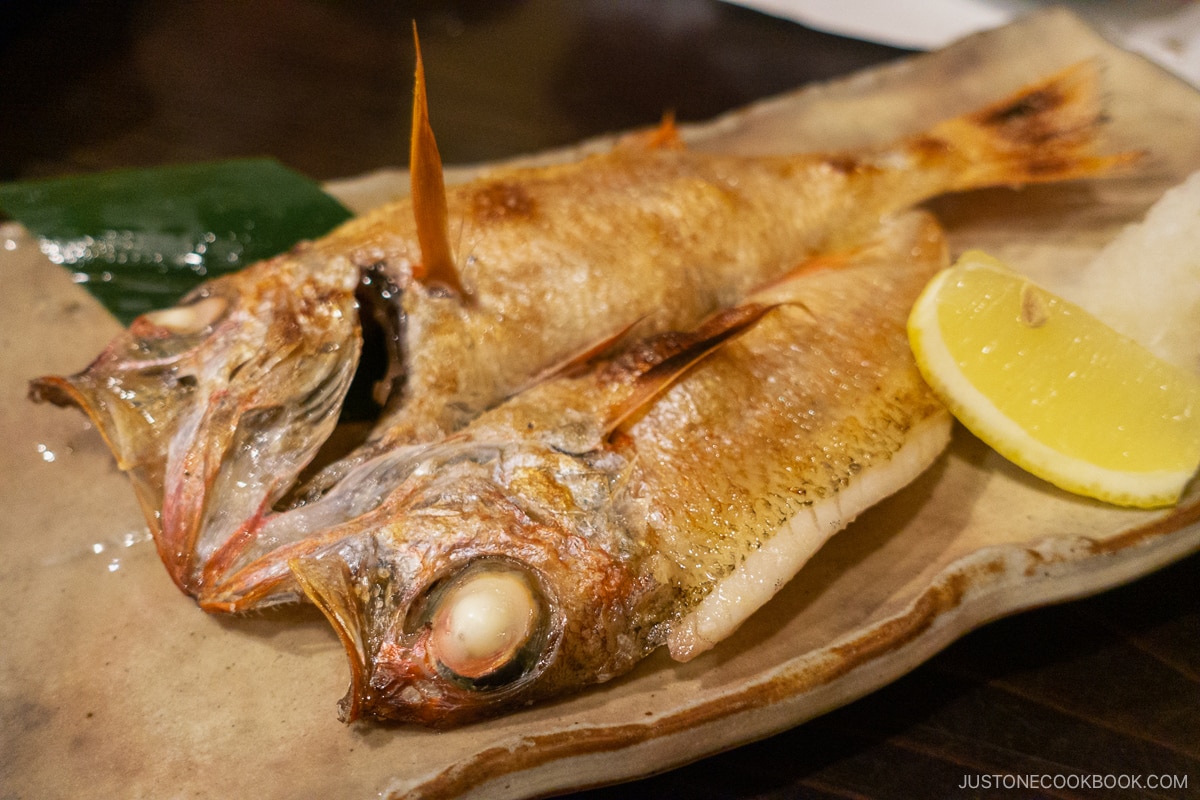
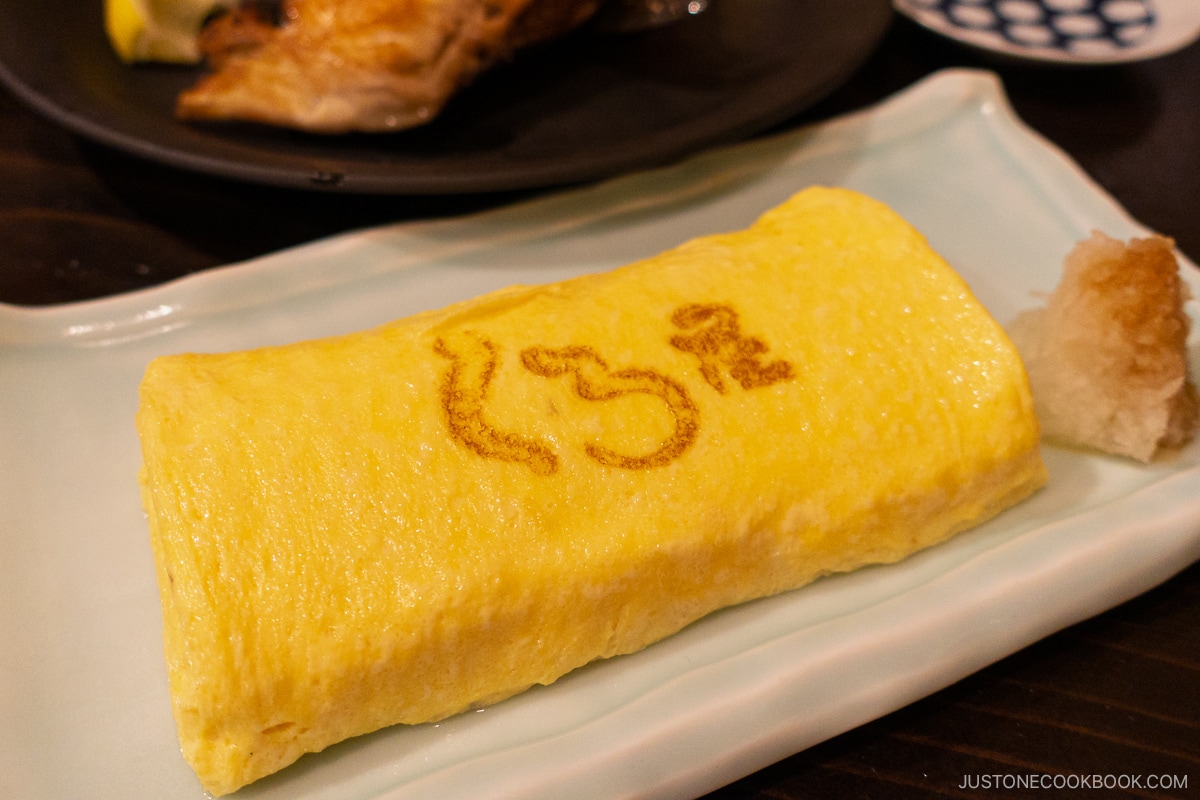
One thing to note, most izakaya or drinking restaurants do not have non-smoking sections. If you have young children or are allergic to smoking, you might want to ask if they have non-smoking sections.
Kuroyuri (黒百合): Authentic Oden in Kanazawa Station
For our second dinner, we ate at Kuroyuri (an oden restaurant specializes in fish cake stew) located inside the Kanazawa station.
Kuroyuri has been around for more than 60 years and is currently run by the 3rd generation of the family. The food is amazingly good, but they only allow you 90 minutes to eat since there is always a line of people waiting.
You can order oden a la carte depending on what you want to eat, with a selection of 20 different kinds of ingredients. Besides oden, there is sashimi, grilled food, deep-fried assortment, salad, and carbs.
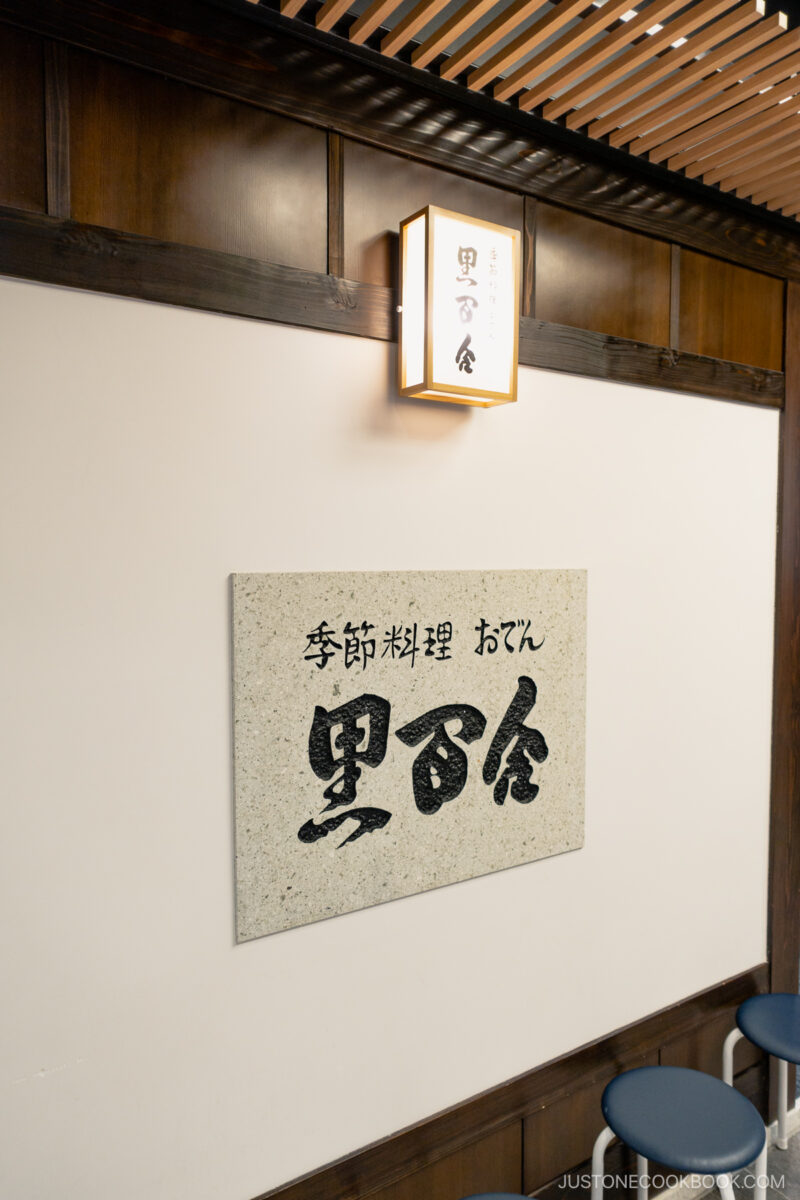
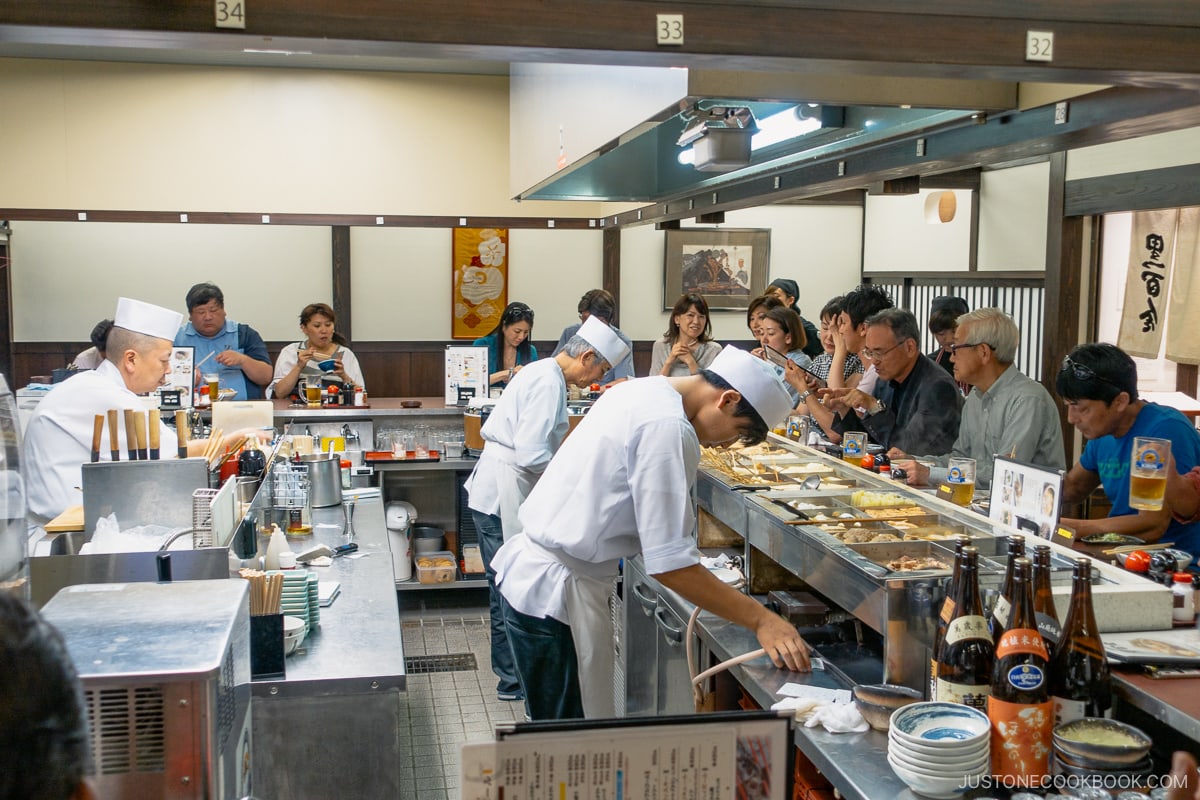
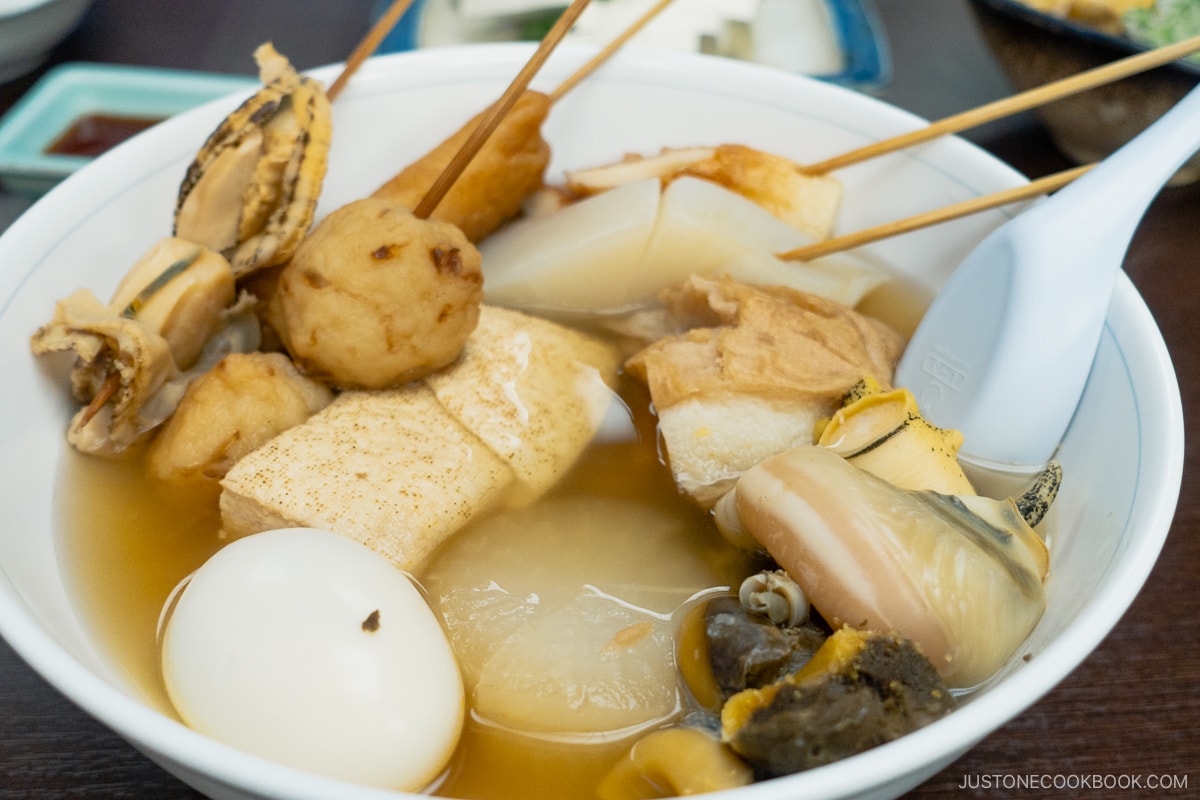
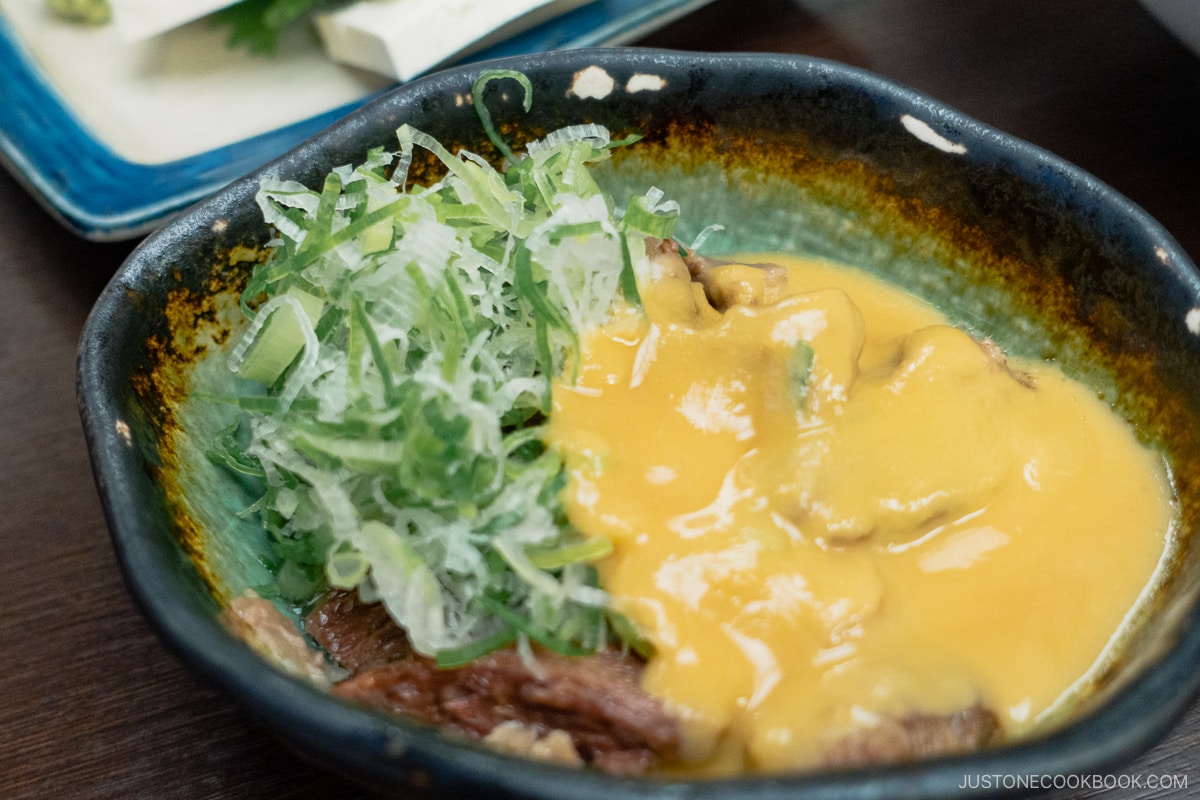
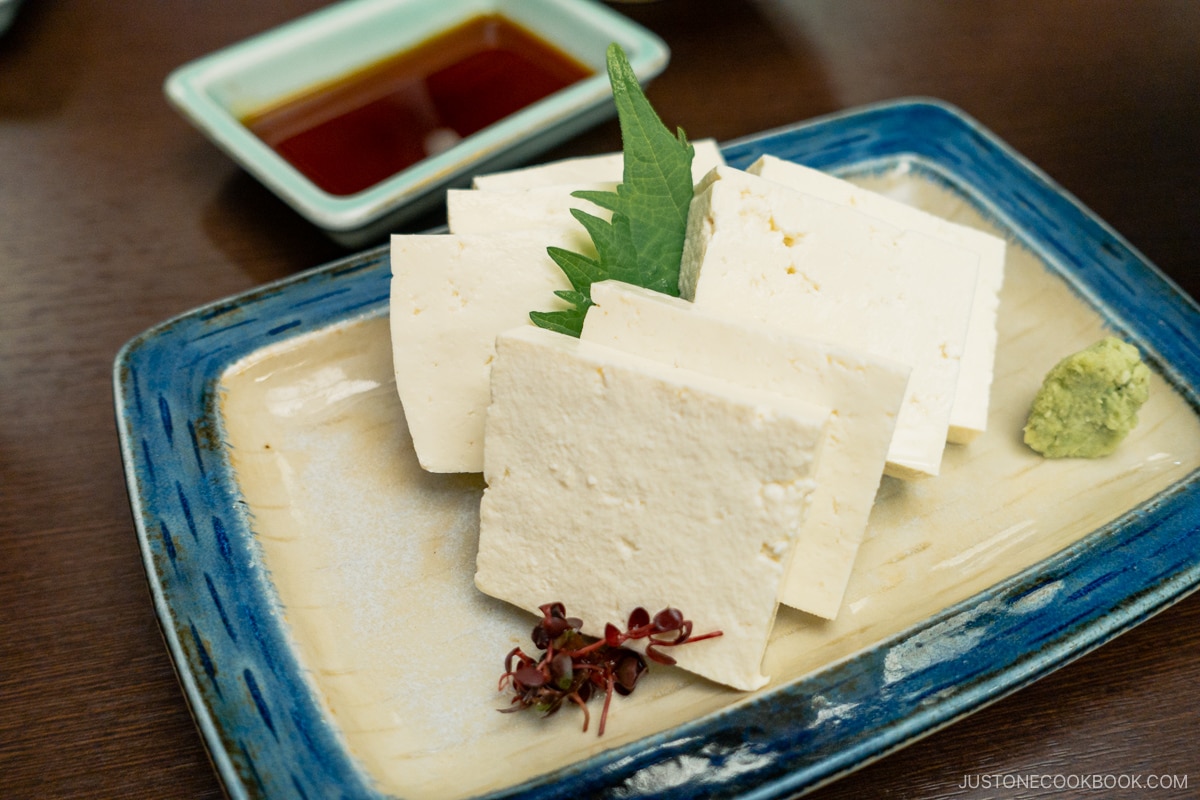
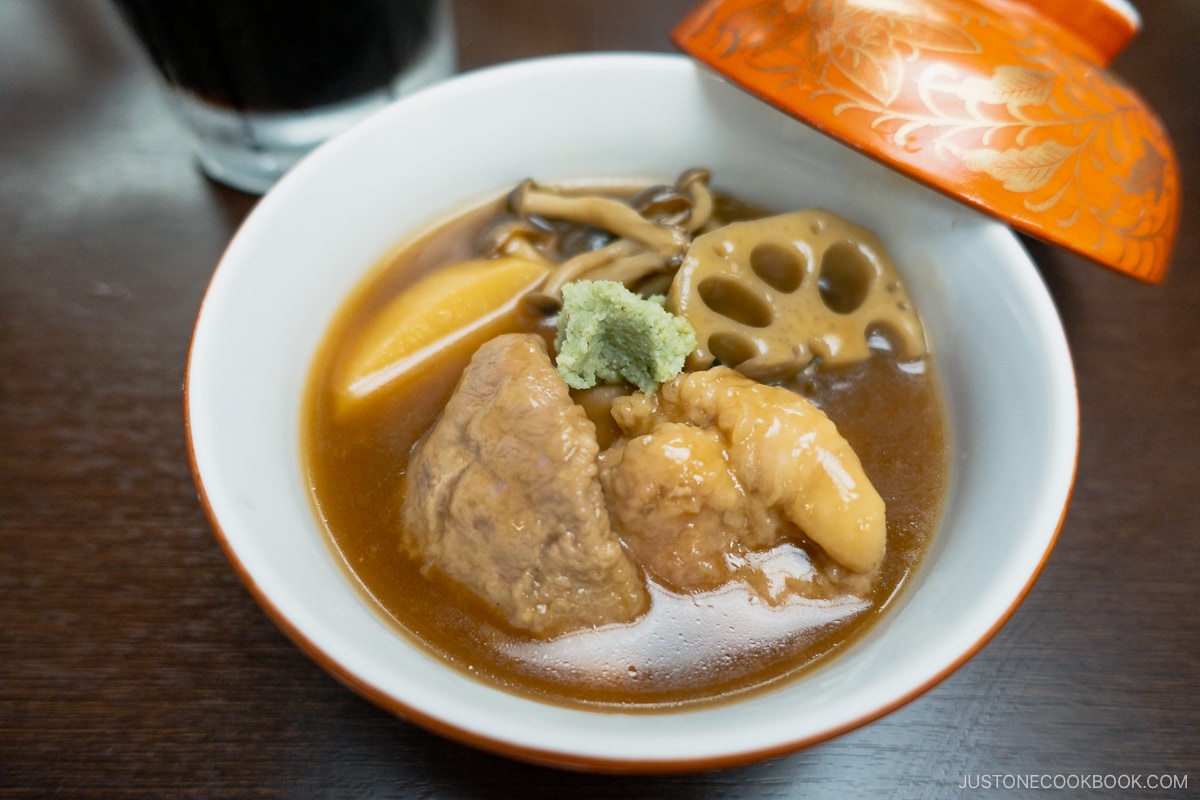
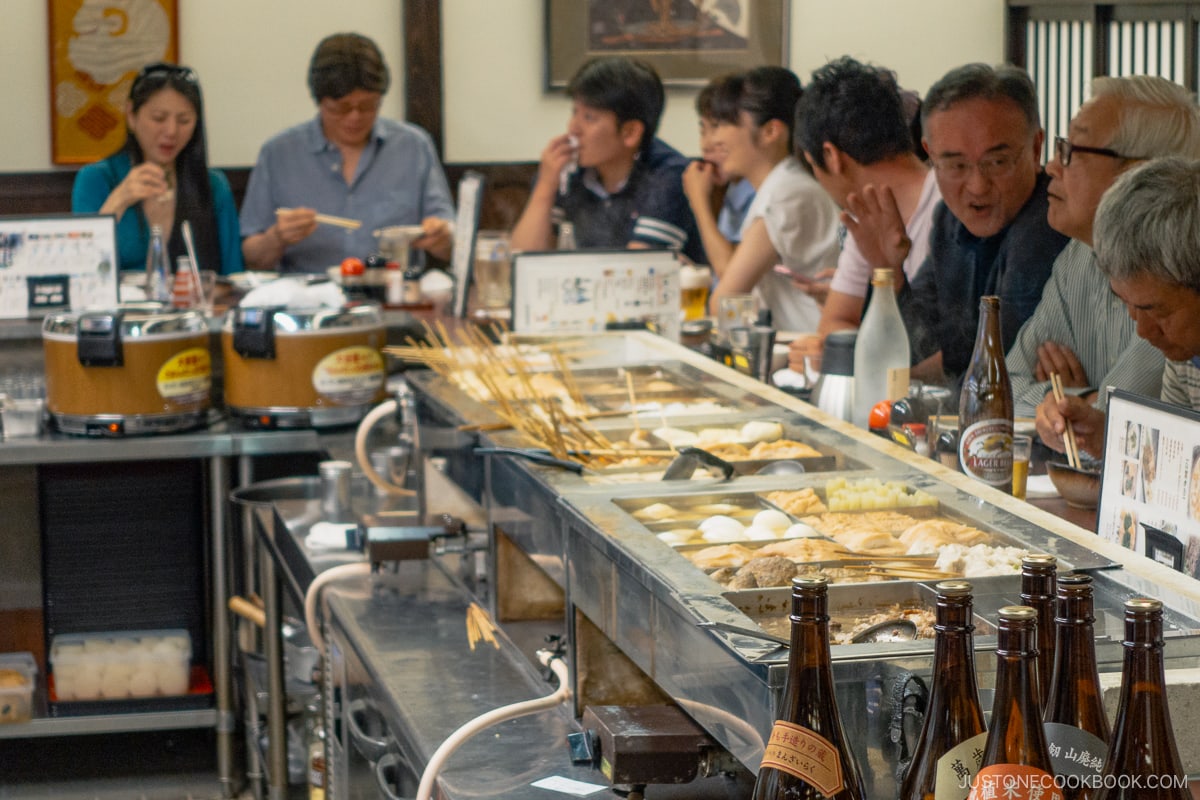
The dashi for oden was very light yet flavorful. All the different oden were delicious, which is a testament to the recipe, which has been the same for 50+ years. Most of the dishes are between 400-600 yen (see the menu).
If you are in the station and looking for good food, head on over to Kuroyuri for some authentic Japanese oden.
Gold Castella: Kanazawa Dessert
Like many department stores, the shopping section in the Kanazawa station offers many local treats. What caught our attention was the gold castella, which looked irresistible, so we bought one to enjoy at our hotel. It tasted just as good as it looked!
Kanazawa is known for its local arts and crafts, and you can see more details on the Kanazawa tourism traditional arts page. We thoroughly enjoyed our short time there and recommend planning a full two-day Kanazawa itinerary to see and enjoy the city.
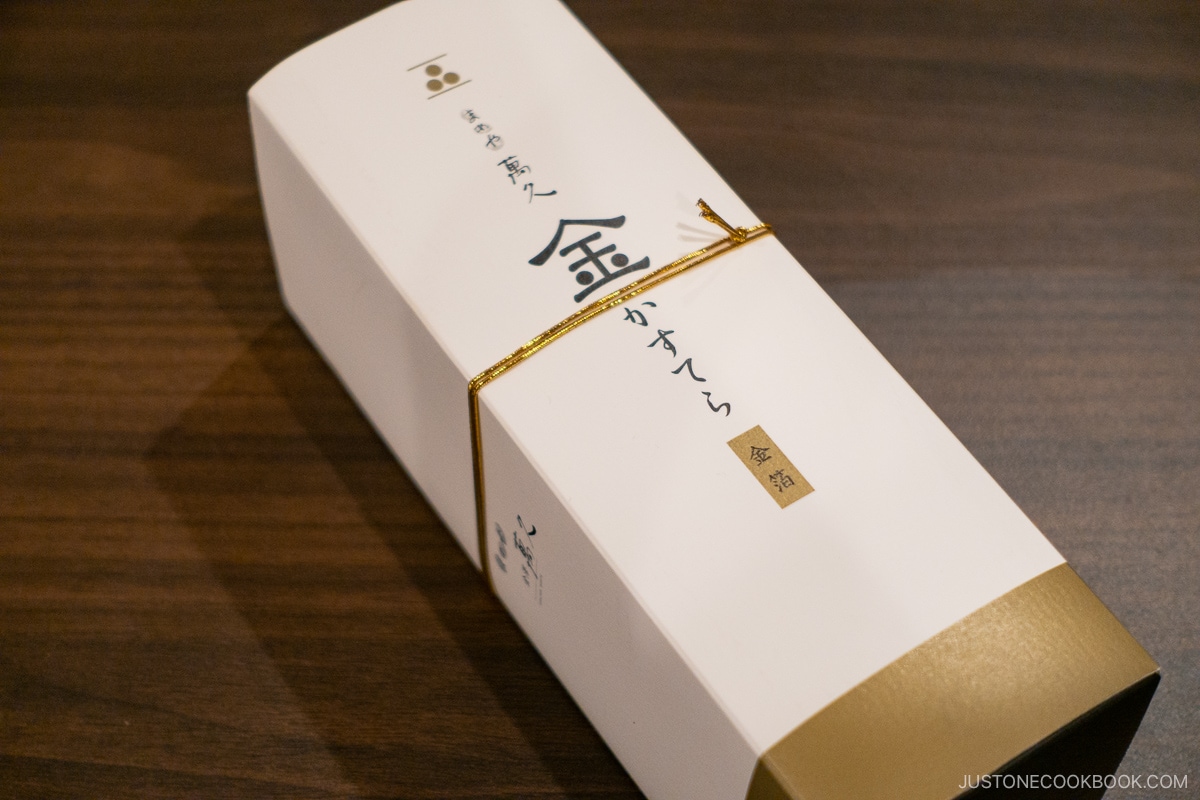
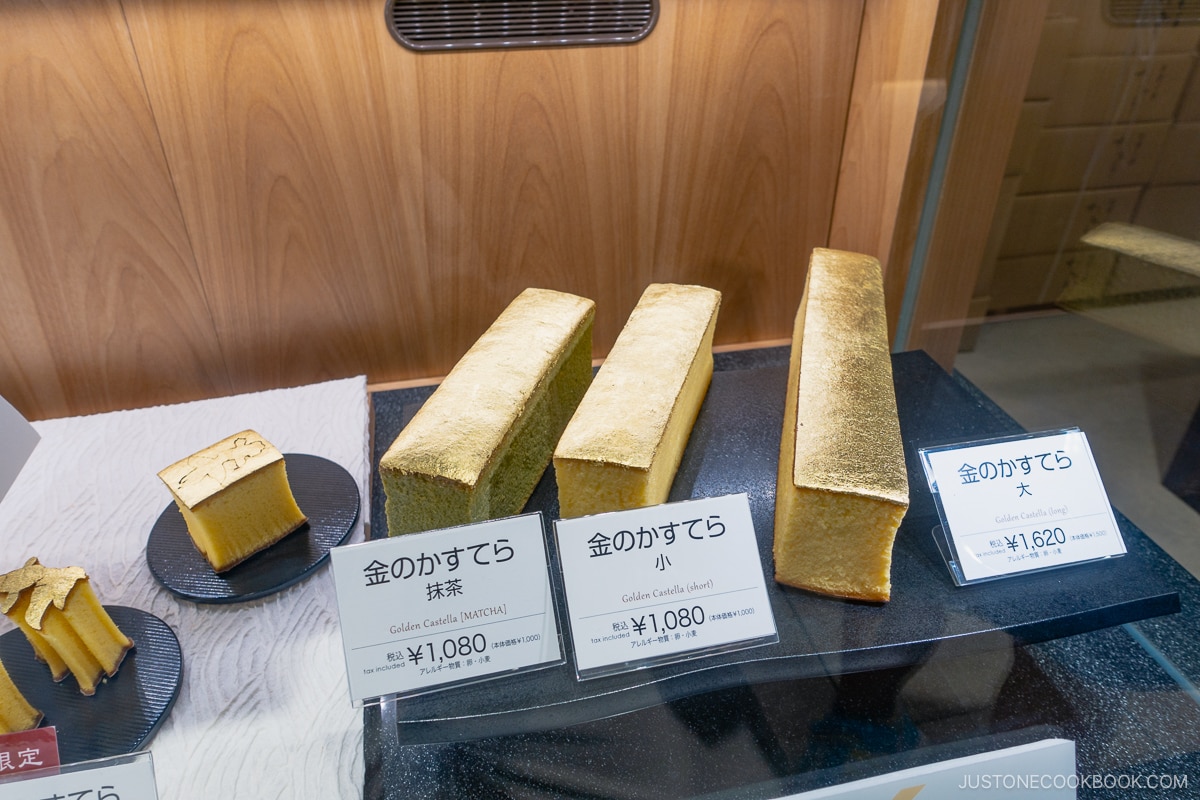
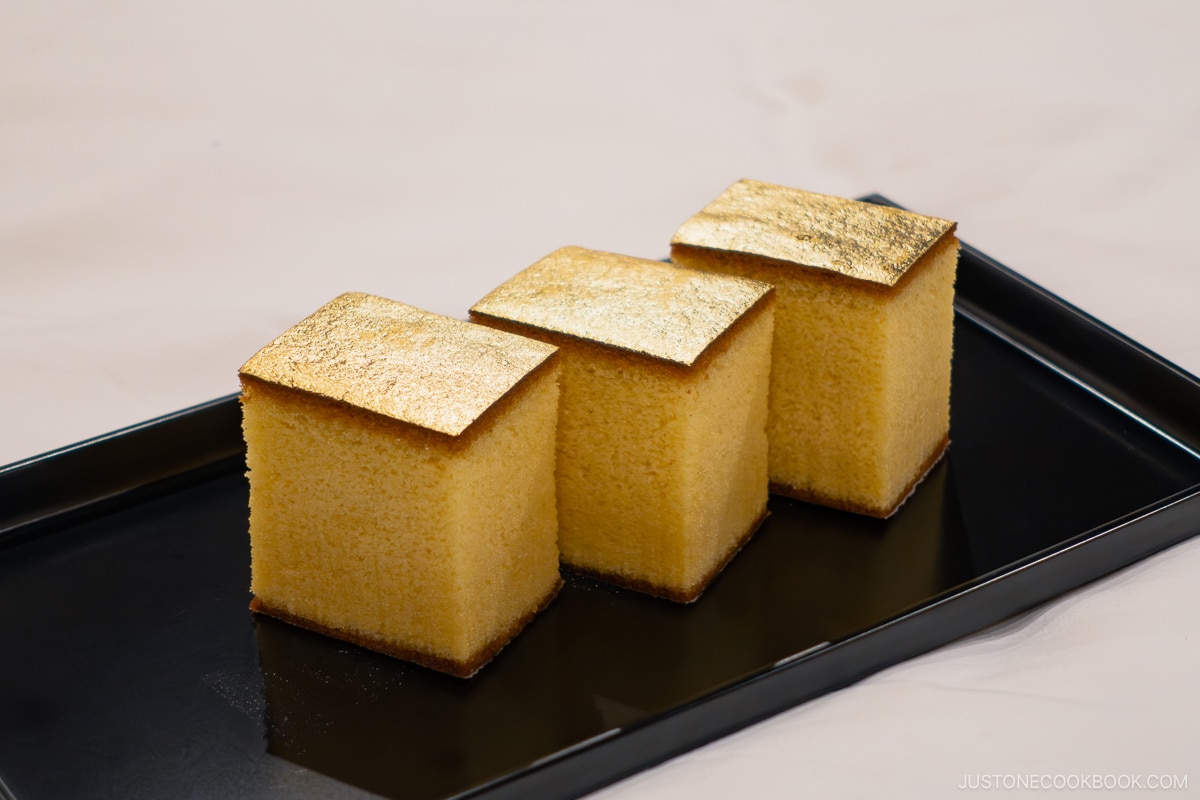
Now let’s continue our trip, and the next stop is Toyama, and a day trip to Kurobe Gorge!

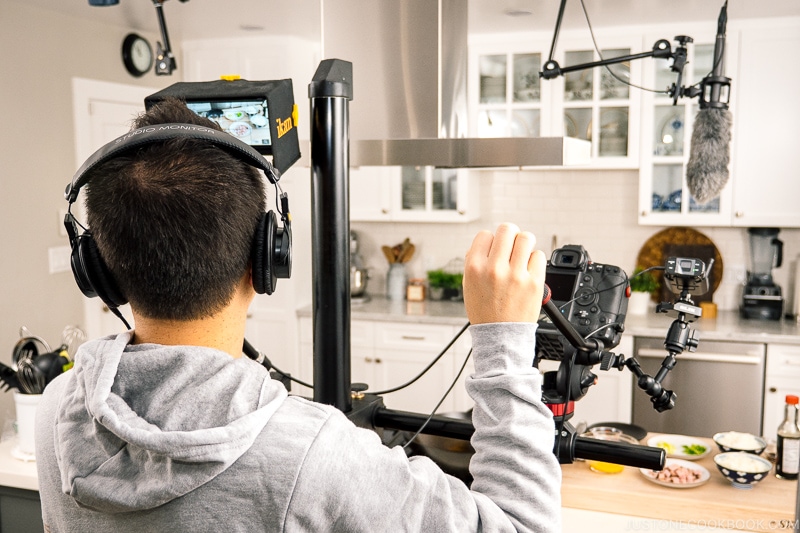









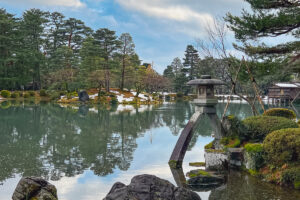
[…] thriving traditional food markets (vs. supermarket). We’ve been to the traditional markets in Kanazawa, Takayama, Sapporo, and Naha just to name a […]
I’m finally making a trip over to Kanazawa, and am glad to chance upon your blog.
The food looks so so good!
May I know if Kuroya & Kuroyuri have english menu? I don’t speak or read japanese. any other restaurants you’d recommend?
Thank you in advance!
Hi Yvonne,
We believe Kuroyuri has an English menu since it’s located in the station. For Kuroya, if I recall I believe they had a small English menu but I am not 100%.
What you can do is go to their website and do a Google translate. It’s not accurate but will give you an idea what the dishes are. It was so tasty! The staff was very friendly so you can probably ask them to recommend.
Have fun in Kanazawa!
Hi, there are two Hotel Mystays i.e. Mystays Kanazawa Castle and Mystays Premier Kanazawa. Which one did you stay? Thanks!
Hi Ai,
We stayed at Mystays Premier Kanazawa.
Have fun in this beautiful city.
Hi! My family and I hope to visit the north western part of Japan in June this year, but we have only a couple of days to cover the Alpine Route and its surroundings. Top on our list is the snow wall and we will have to choose between the Kurobe Gorge, Takayama, Kanazawa, or Shirakawago. Could you share with me which of these destinations your children enjoyed the most? Thank you for sharing your yummy recipes and travel stories with us!
Hi Grace,
If you only have a few days, we recommend either Takayama or Kanazawa. Kurobe Gorge is very pretty but there’s not much to do once to get to the top. Shirakawago is a half day tour from Takayama so we would recommend bundling those two.
Recommendation:
1) Takayama + Shirakawago
2) Kanazawa
3) Toyama/Kurobe Gorge
Let us know if you have any questions.
Thanks so much Mr JOC! Will set my eyes on Kanazawa then, as I am reserving Shirakawago for a winter wonderland holiday… someday.
This is fantastic! Will definitely pay a visit. My family and I visited Kyoto this past spring based on your recommendations. Had a lovely time! Your insights were extremely helpful. THANK YOU and looking forward to reading more about your travels!
Hi Gracie! Awesome! I’m so happy to hear that. Enjoy Kanazawa – I really want to go back again… my stay was too short for stopping by more stores and eat more delicious food there!
Japan’s culture is displayed with great photography.
Thank you Susan! 🙂
Hi Nami
The weather in Kanazawa was quite pleasant, with occasional rain fall (early Sept). Someone famous once said ‘you may forgot your lunchbox but never an umbrella when visiting Kanazawa’. So true 🙂
Oh just an info, the loop bus is now cost 200 yen per ride/adult and 100 yen per ride/child. A day pass is still 500 yen (value for money).
Keep up good work with your recipe. I love the everyday japanese cooking. Your website is awesome!
Cheers
Sri
Hi Sri! Ah, I’ve never heard of that saying before. Thanks for sharing! Also, thank you for the updated price for the loop bus. I edited my post. I’m happy to hear you enjoy my blog. Thank you for reading! xo
Hi Nami
Having just visited Kanazawa this week brings a happy smile to my face when I read your blog. I have just discovered your website today but I am so glad I did! I will try some of your recipes too, Next year my husband and I will explore Kurobe and Noto so we will definitely follow some of your advice. Thank you very much 🙂
cheers
Sri
Hi Sri! Ohhh you went to Kanazawa! How was the weather? We loved our trip to Kanazawa. So glad you got to visit. 🙂 We skipped Noto Hanto, but we hope to visit there one day. I’ve never been there.
And welcome to my blog! Hope you find some recipes that you enjoyed while you were visiting Japan. 🙂
I booked Hotel MyStays for my September trip so I’m thrilled to know that it is a good place to stay. I booked the room for 4 too. 🙂
Does the oden restaurant require reservations? And does it have an English menu? I’m hoping to try Kuorya but I will be at Kanazawa on the 2nd day of my trip so don’t think I’ll be in time to make reservations. Sad 🙁
Thanks a lot of the recommendations.
Oh I also saw your post on Kurobe Gorge. Since I’m travelling in September when it’s too early for autumn colours, I am thinking if it’s worth travelling there. You mentioned that many spots at Keyakidaira were closed when you were there so I’m wondering if I should stop there if I do decide to visit Kurobe Gorge. What do you recommend?
Thank you
Hi Winnie! How exciting! The hotel is clean and has everything you’ll need (besides foods) so hope you’ll have a pleasant stay!
The Oden restaurant is more like walk in restaurant and salarymen go there. At this location inside the station building, I don’t think you can reserve a table.
I don’t think Kuroya has English menu. It has a lot of dishes, but it’s more like family style restaurant that it’s probably hard to translate – you know those dishes that they make with different ingredients and seasoning and not necessarily have names… like gyudon. So the waiter can explain the ingredient used, but it’s going to be hard to tell you one by one what dish it is. One thing you can ask is chef’s omakase or ask waiter what’s the most popular dishes (Ninki no Tabemono) and you can get surprise dishes… it’s probably safer than ordering randomly. BUT you have to be very comfortable with what they use/serve.
About the Kurobe Gorge. are you going later in September? According to the website, mid September is when foliage starts in Murodo (higher in elevation).
http://www.club-t.com/special/japan/alpine/spot.htm
also check how crowded it is…
http://www.alpen-route.com/information/calendar/
If it’s earlier in September, unless you see the green scenery (still beautiful), you may want to spend more time in other location that you travel. 🙂
Thanks Nami for your reply.
My family and I are not so adventurous so I think it’s quite hard to leave our food choices to the chef. I think it would be safer for us if there was a English menu.
I will not be going to the Tateyama Alpine Route as I went there 2 years ago in November. Thought of doing the Kurobe Gorge Railway instead. Although it would be great to see the autumn colors, I think the greenery would be pretty nice too. I’ll be there mid September.
Have a wonderful trip, Winnie! 🙂
Hi, your post came just in time, thanks for sharing. I’m going to be in Tokyo and Kanazawa in July and look forward to visiting the place you wrote about.
Hi Karine! Oohhh how wonderful! Kanazawa is so fun, and I loved it! It’s much easier to travel with Shinkansen from Tokyo too. Hope you have a fantastic time!!